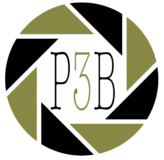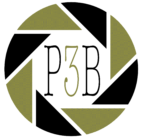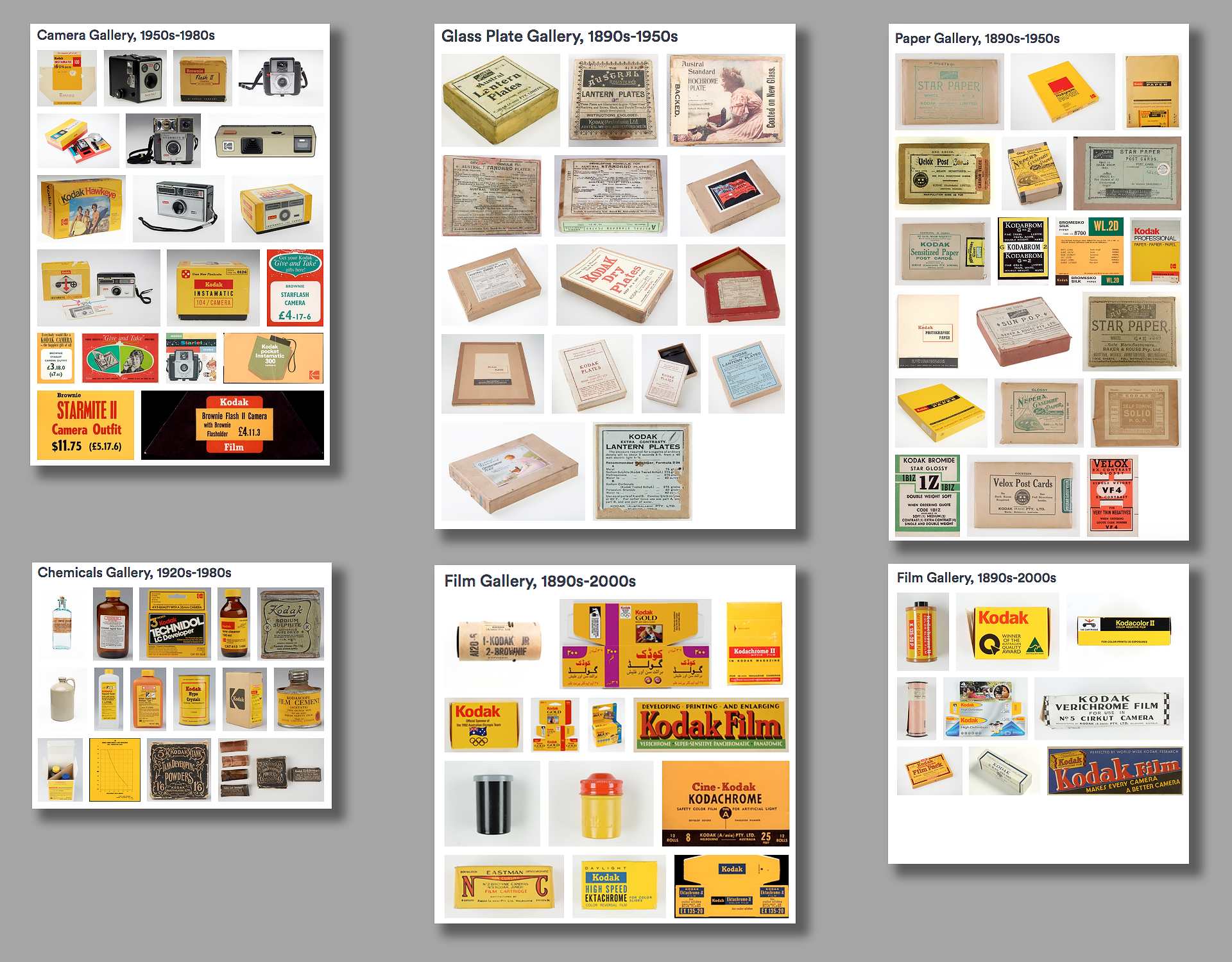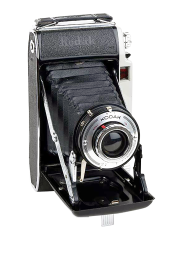Some of the following companies that manufacture(d) photographic material have already passed by in other parts of the site.Here you will find an overview of companies that marketed photographic material in the nineteenth and twentieth centuries.More is usually known about the best known or the most influential companies than about the lesser known ones; therefore they will be discussed more extensively than others.
The emphasis in this part of the site is more on the ups and downs of the company as such, while in other chapters the emphasis was on the product or on the man or woman who founded the company. The order of all companies is alphabetical.
Below are the names of the companies as will be discussed in this or any other chapter. By clicking on a name (so not on the bullet in front of it), you go directly to that part on this page where the manufacturer in question is located. Scrolling is also possible of course, but this service helps you to get to the desired manufacturer in question much faster.
As a tribute to (once) the largest photographic company in the world, the spot colors on this page have been matched to Kodak’s corporate colors: warm red and warm yellow.
Due to the fact that this introductory page has become much longer than originally planned and desirable due to the large number of manufacturers, we strongly advise you to use the name service below to go to the manufacturer of your choice on this or any subsequent page.
With the help of the overview below you can reach each company mentioned quickly and easily. But since all Kodak companies are grouped under one heading in that overview, you will also find the possibility to quickly navigate to the various Kodak subsidiaries on this page.
So here you go:
• Kodak Australia • Kodak Canada • Kodak France • Kodak Germany
• Kodak United Kingdom • Kodak USA
- General Introduction
- ADOX
- Agfa (see also Gevaert)
- Altissa
- Amaloco
- Ansco Camera Co (see also GAF)
- APM/APeM (see also Soho)
Amalgamated Photographic Manufacturers Ltd - Argus Camera Co, Ann Arbor Michigan
- Arsenal (see Kiev-Arsenal)
- Artima Export Ltd (see also Truvox)
- Asahi Pentax
- Bencini
- BOLCo and E Elliott Ltd
(abbrev. for The British Optical Lens Company) - Carl Braun Kamera-Werk
- Canon Inc.
- J.T. Chapman, Manchester
- The Chicago Cluster of Companies
(consisting of 56 companies ) - Chinon
- Concord Camera Corp.
- K.G. Corfield & K.G. Corfield (Sales) Ltd.
- Coronet Camera Company
- Cosina Company, Ltd.
- Dacora
- Dixons
- Durst
- EHO-Altissa company (See Altissa)
- E Elliott Ltd and BOLCo
(abbrev. forThe British Optical Lens Company) - Ellison Kamra
(see also QRS Devry Kamra Company) - ELOP
- Ensign Ltd.
(distribution Company of Houghton-Butcher) - Ernemann-Kamerawerke AG
- Expo Camera Company
- The FED Company
- Ferrania
- Fisher-Price
- Fodor
- Foitzik-Kamerawerke
- C.F. Foth
- Fototecnica
- Franka Kamerawerk –
- Fujica (Camera Division of Fujifilm)
- Fujifilm (brief history)
- Futura
- GAF (see also ANSCO)
(abbrev. for General Aniline & Film) - Louis Gandolfi
- Herbert George Company
- Gevaert Photo-Producten N.V. (see also AGFA)
- Girard et Cie
- GNOME
- GOERZ
- GOMZ (LOMO)
- Graflex (Folmer & Schwing)
- Great Wall Plastics Co
- W. Haking Enterprises Ltd.
- Hanimex
- Hasselblad
- Healthways
- Houghton–Butcher Manufacturing Co (See also Ensign Ltd. and Ross-Ensign Ltd.)
- R.F. Hunter Ltd.
- ICA AG
- Ihagee (Exakta)
- Ilford
- Imperial Camera Corporation
(see the Herbert George Company story ) - Jos-Pe
- Kamera-Werkstätten Guthe & Thorsch
- Keystone
- Kiev Arsenal
- KMZ
- Kochmann
- Kodak USA (incl. Australia, Canada, France, Germany & the UK)
- Konica-Minolta (Konishiroku)
(see also Minolta) - Kowa
- Krügener
- Kürbi & Niggeloh (Bilora)
- Kyocera (Yashica, Contax)
- Lancaster
- Leitz
- Lensless Camera Manufacturing Company
- Linhof
- Lipca (see also Richter-Tharandt)
- LOMO (see GOMZ)
- Loreo
- Mamiya
- Meopta Optotechnica
- Mimosa AG
- Minolta (see also Konica-Minolta)
- Minox Company
- Miranda (Orion)
- MMZ-BeLomo
- Motodori (Condor)
- Dr. August Nagel Kamera Werke
- Neidig Kamerawerk
- Nemrod-Metzeler (See Healthways)
- Nettel
- Nikon Company
- Nimslo Corporation (see also Nishika)
- Nishika Optical Systems (see also Nimslo)
- Noblex (See also K-W Guthe & Thorsch)
- Olympus Company
- ORION (see Miranda)
- ORWO
- Ottico Meccanica Italiana (OMI)
- Paterson Products Ltd.
- VEB Pentacon Dresden
- Pentax (See Asahi Pentax)
- Petri
- Photavit (Bolta)
- Plaubel
- Polaroid
- Photo Porst
- Karl Pouva – VEB Fototechnik Freital (see also Woldemar Beier)
- Purma Cameras Ltd.
- QRS Devry Kamra Company (see also Ellison Kamra)
- Foto-Quelle
- Rectaflex
- VEB Rheinmetall Büromaschinenwerk
- Richter-Tharandt (see also Lipca)
- Ricoh
- Rollei Germany
- Rollei Singapore
- Ross-Ensign
(continuation from Ensign Ltd.) - Ro-To Company
- Sea&Sea-Sunpak
- Shanghai Seagull
- Sida-Fotofex
- Sigma
- Soho Ltd (see also APM)
- Standard Cameras
- Steinheil
- Stenopeika
- Thornton-Pickard
- Topcon (Tōkyō Kōgaku)
- Tougodo Company
- Traid Corporation
- TRUVOX (see also Artima Export)
- Tura AG
- Universal Camera Corp.
- Vivitar
- Voigtländer
- Vredeborch
- Welta
- Werra (C. Zeiss Jena)
- Wirgin
- Kamera-Fabrik Woldemar Beier (see also Karl Pouva)
- Hermann Wolf GmbH
- Wünsche
- Yashica (see also Kyocera)
- Zeiss Ikon AG
- Zion
- Zunow (Teikoku Kōgaku)
COMPANY NAMES:
1881: Eastman Dry Plate Company; 1884: the Eastman Dry Plate and Film Company; 1892: The Eastman Kodak Company of New York; 1901, the Eastman Kodak Company of New Jersey.
1880: State Street in Rochester;
No name has been more closely tied to pictures than Kodak. The keys to George Eastman’s success in making photography a popular leisure-time activity for the masses were his development of roll film and the inexpensive box camera. Throughout his life, Eastman pursued his goal to make photography “as convenient as the pencil.” Not surprisingly, the company he founded has been at the centre of most milestones in photography and imaging ever since.
In case you want to read the personal history of George Eastman first, click HERE and go to that item in the Pioneers- chapter; we continue on this page with the achievements of the Kodak Company and its subsidiaries. Another side note: we limit ourselves in the descriptions of the various Kodak locations mainly to the history of the company. The manufactured products therefore largely remain undiscussed.
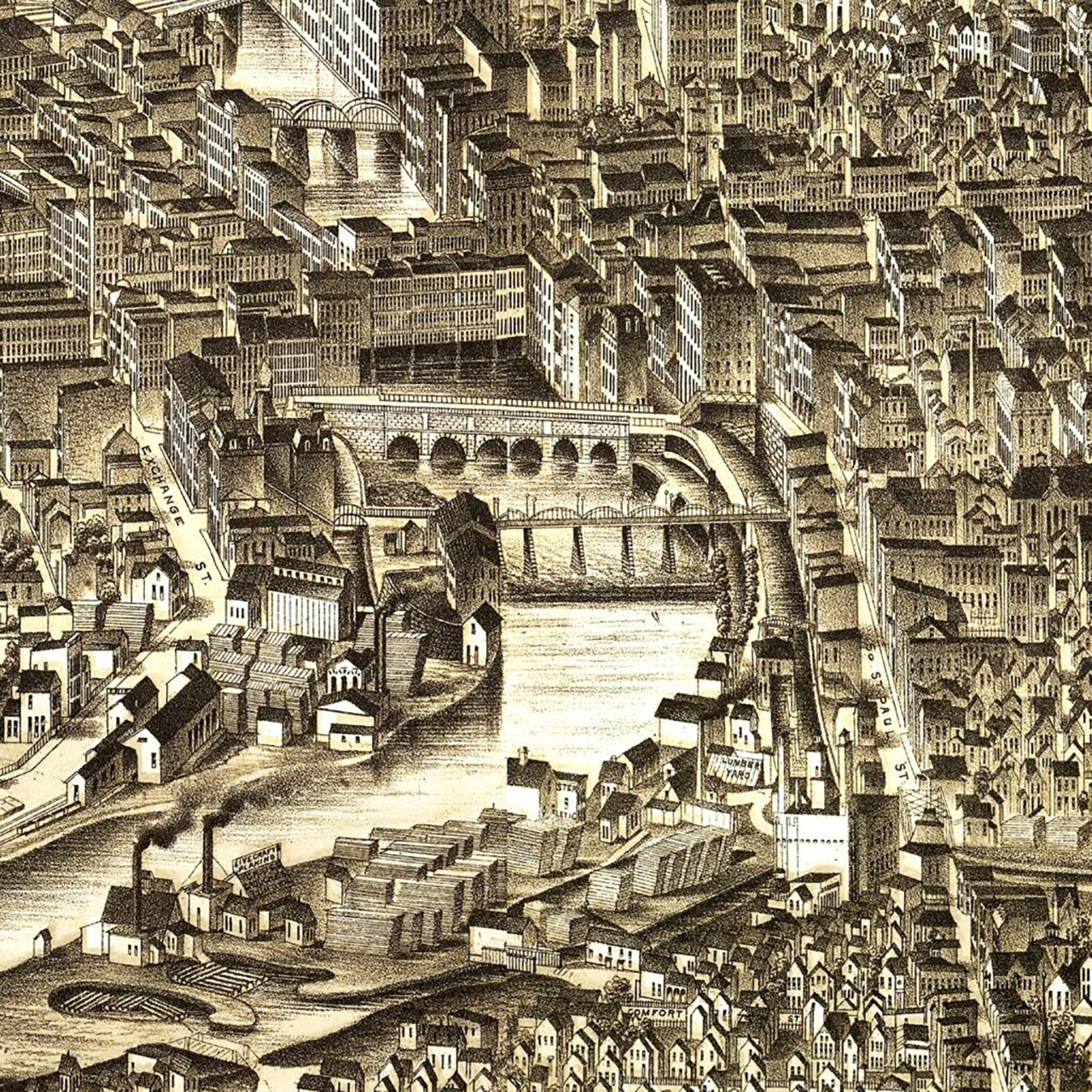
Vintage Map of Rochester, New York 1880
Where did that extra addition of Kodak to the company name all of a sudden come from?
The company has been called Eastman Kodak Company since 1892, when Eastman Kodak Company of New York was organized. In 1901, the Eastman Kodak Company of New Jersey was formed under the laws of that state.
The word “Kodak” was first registered as a trademark in 1888. Now, the word Kodak is among the best-recognized brands in the world. From time to time, there has been speculation as to what the word means and how it originated. The truth, however, is that the word is another of Eastman’s own inventions out of thin air!
This is how Eastman explained the origin of “Kodak”: “I devised the name myself. The letter ‘K’ had been a favorite with me – it seems a strong, incisive sort of letter. It became a question of trying out a great number of combinations of letters that made words starting and ending with ‘K.’ The word ‘Kodak’ was the result.“
Eastman also selected Kodak’s distinctive yellow trade dress, which is also widely known throughout the world.
In 1879, London was the centre of the photographic and business world. George Eastman went there to obtain a patent on his plate-coating machine. An American patent was granted the following year.
In April 1880, Eastman leased the third floor of a building on State Street in Rochester, and began to manufacture dry plates for sale. One of his first purchases was a second-hand engine priced at $125. “I really needed only a one horse-power,” he later recalled. “This was a two horse-power, but I thought perhaps business would grow up to it. It was worth a chance, so I took it.“
The success of the dry plate venture so impressed businessman Henry A. Strong, that he invested some money in the infant concern. On January 1, 1881, Eastman and Strong formed a partnership called the Eastman Dry Plate Company. Later that year, Eastman resigned from his position at the Rochester Savings Bank to devote all his time to the new company and its business. While actively managing all phases of the firm’s activities, he continued research in an effort to simplify photography.
In 1884, the Eastman-Strong partnership had given way to a new firm – the Eastman Dry Plate and Film Company – with 14 shareowners. A successive concern – the Eastman Company, was formed in 1889.
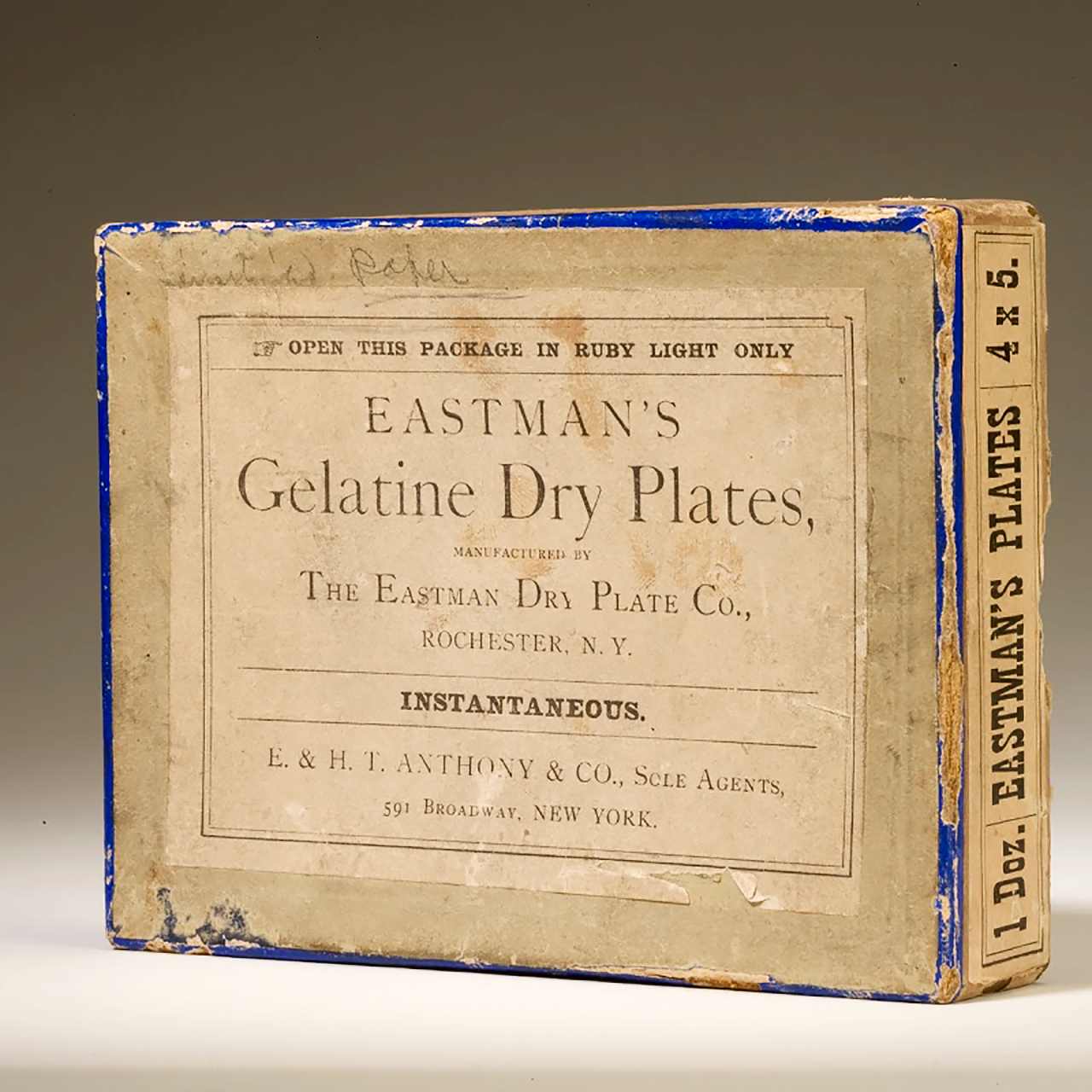
Customer Focus
Eastman built his business on four basic principles:
- a focus on the customer;
- mass production at low cost;
- worldwide distribution;
- extensive advertising.
He saw all four as being closely related. Mass production could not be justified without wide distribution. Distribution, in turn, needed the support of strong advertising. From the beginning, he imbued the company with the conviction that fulfilling customer needs and desires is the only road to corporate success.
As Eastman’s young company grew, it faced total collapse at least once when dry plates in the hands of dealers went bad. Eastman recalled them and replaced them with a good product. “Making good on those plates took our last dollar,” he said. “But what we had left was more important — reputation.“
“The idea gradually dawned on me,” he later said, “that what we were doing was not merely making dry plates, but that we were starting out to make photography an everyday affair.” Or as he described it more succinctly “to make the camera as convenient as the pencil.“
Eastman’s experiments were directed to the use of a lighter and more flexible support than glass. His first approach was to coat the photographic emulsion on paper and then load the paper in a roll holder. The holder was used in view cameras in place of the holders for glass plates.
In 1883, Eastman startled the trade with the announcement of film in rolls, with the roll holder adaptable to nearly every plate camera on the market.
The first film advertisements in 1885 stated that “shortly there will be introduced a new sensitive film which it is believed will prove an economical and convenient substitute for glass dry plates both for outdoor and studio work.“
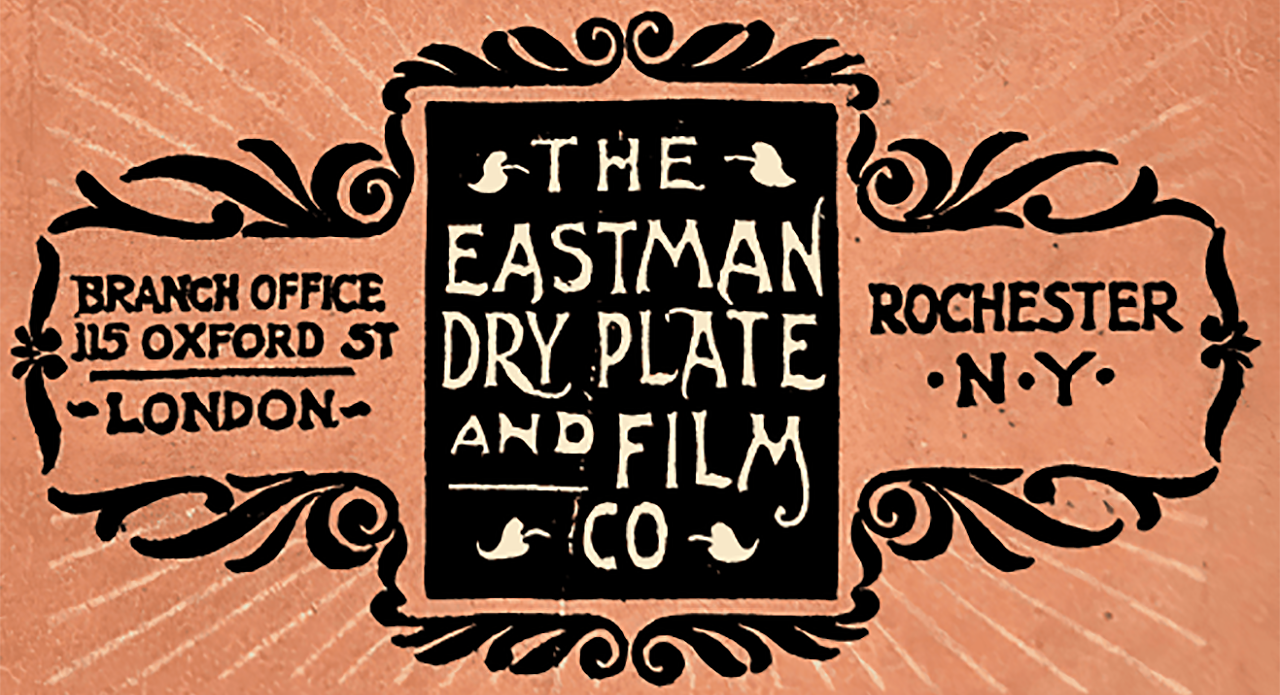
The legendary company made its debut with an informational and advertising logo that contained brief information about it. This technique was quite suitable for an undisclosed and little-known brand, so Kodak went exactly this way. He collected in a single space all the important data about himself. It was in use between 1889 and 1907.
In the center, on a vertical rectangle in black, it says “THE EASTMAN DRY PLATE AND FILM CO” in white letters. On the left side is the phrase “BRANCH OFFICE 155 OXFORD ST. LONDON “. The city and state of ROCHESTER N.Y. are marked on the right. In addition to the text, the emblem contains design elements: decorative leaves, dividing stripes, strokes, and a frame in the form of a floral ornament.
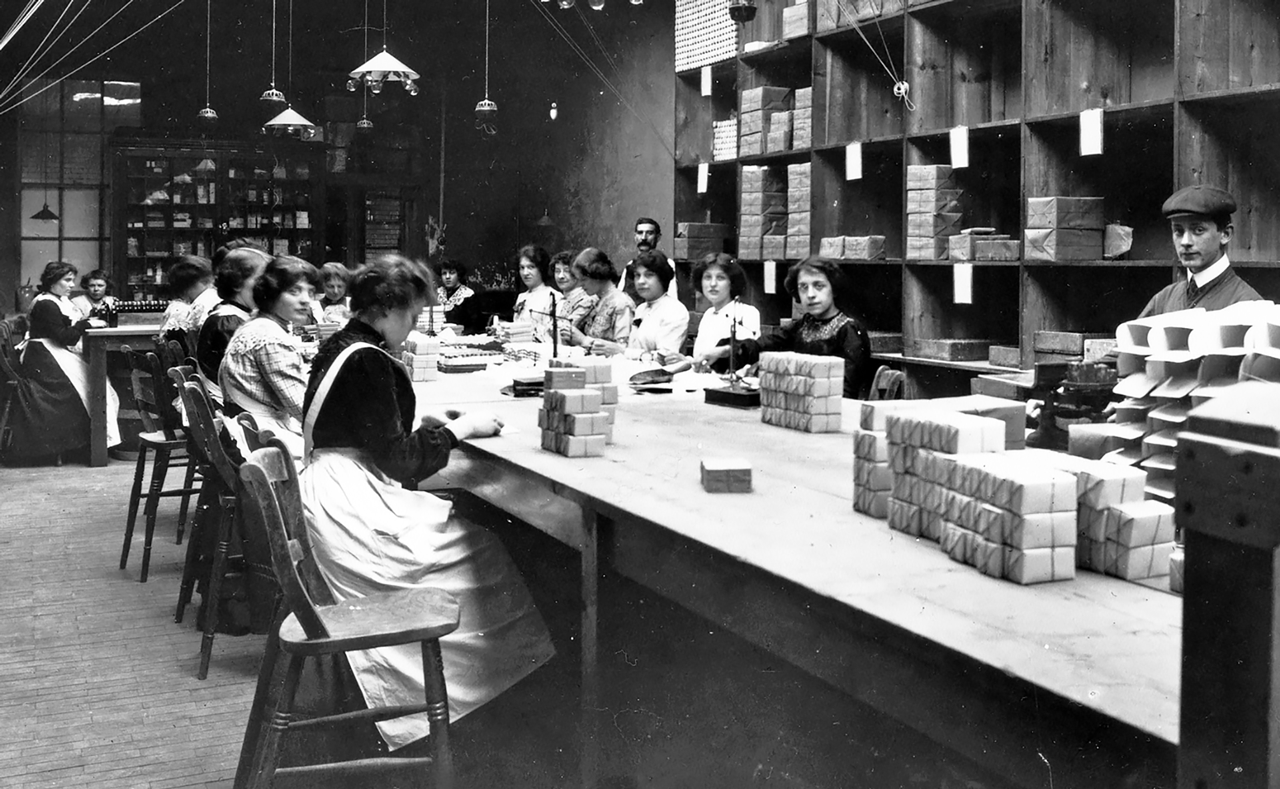
Packing photographic material on the assembly line in the Eastman company.
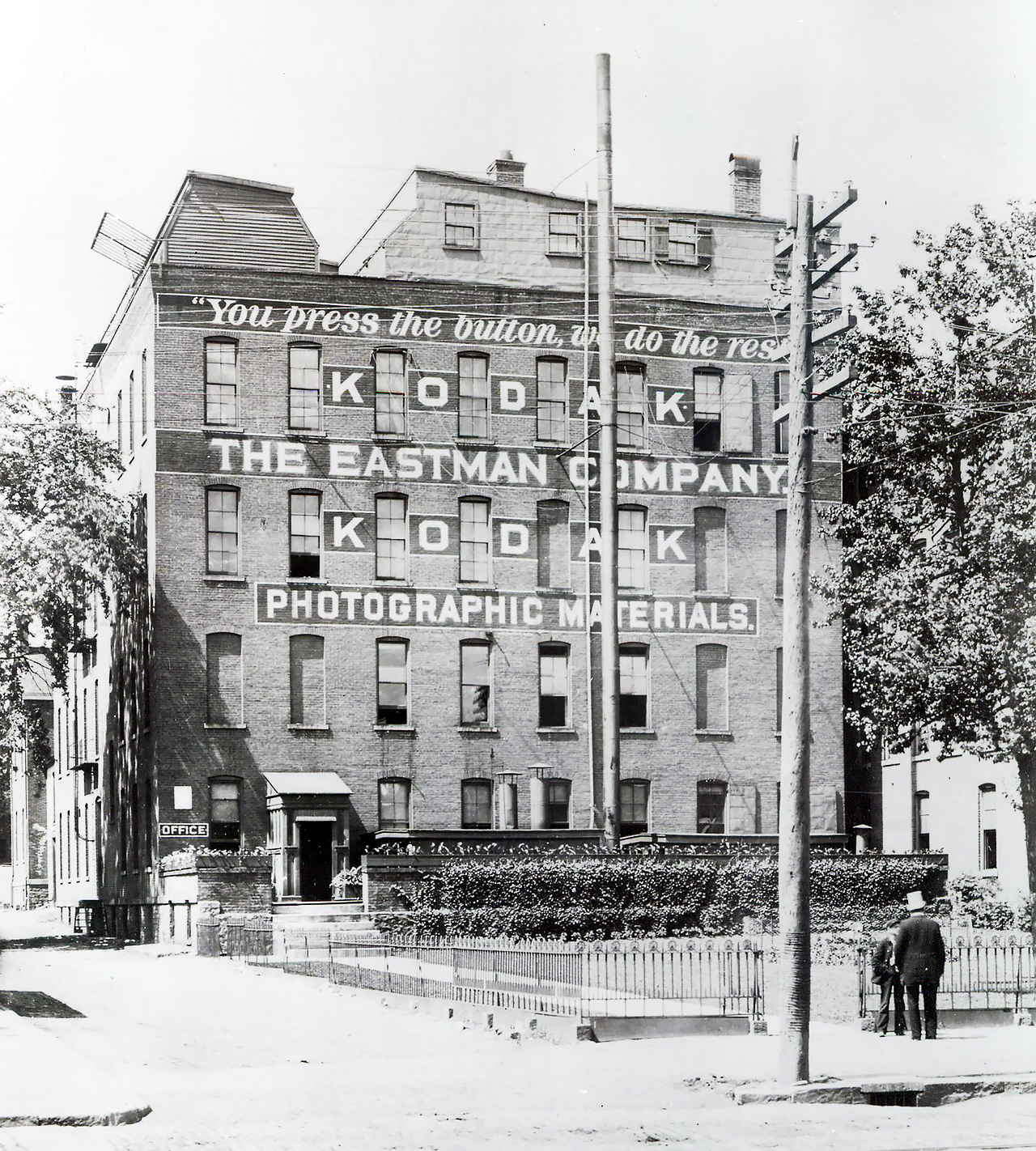
Eastman and businessman Henry Strong form a partnership called the Eastman Dry Plate Company. This is their factory in 1881.
From a paper base to a flexible support
This system of photography using roll holders was immediately successful. However, paper was not entirely satisfactory as a carrier for the emulsion because the grain of the paper was likely to be reproduced in the photo. Eastman’s solution was to coat the paper with a layer of plain, soluble gelatine, and then with a layer of insoluble light-sensitive gelatine. After exposure and development, the gelatine bearing the image was stripped from the paper, transferred to a sheet of clear gelatine, and varnished with collodion – a cellulose solution that forms a tough, flexible film.
As he perfected transparent roll film and the roll holder, Eastman changed the whole direction of his work and established the base on which his success in amateur photography would be built. He later said: “When we started out with our scheme of film photography, we expected that everybody who used glass plates would take up films. But we found that the number, which did so was relatively small. In order to make a large business we would have to reach the general public.“
With the KODAK Camera in 1888, Eastman put down the foundation for making photography available to everyone. Pre-loaded with enough film for 100 exposures, the camera could be easily carried and handheld during operation. It was priced at $25. After exposure, the whole camera was returned to the Kodak factory in Rochester. There the film was developed, prints were made and new film was inserted – all for $10.
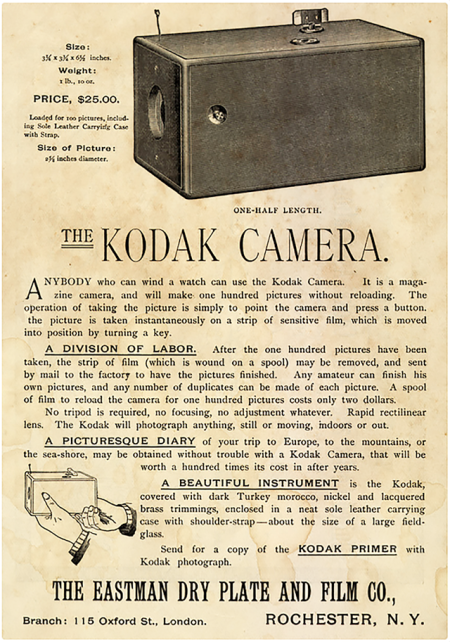
Advertisements boasted, “Anybody who can wind a watch can use the Kodak Camera”
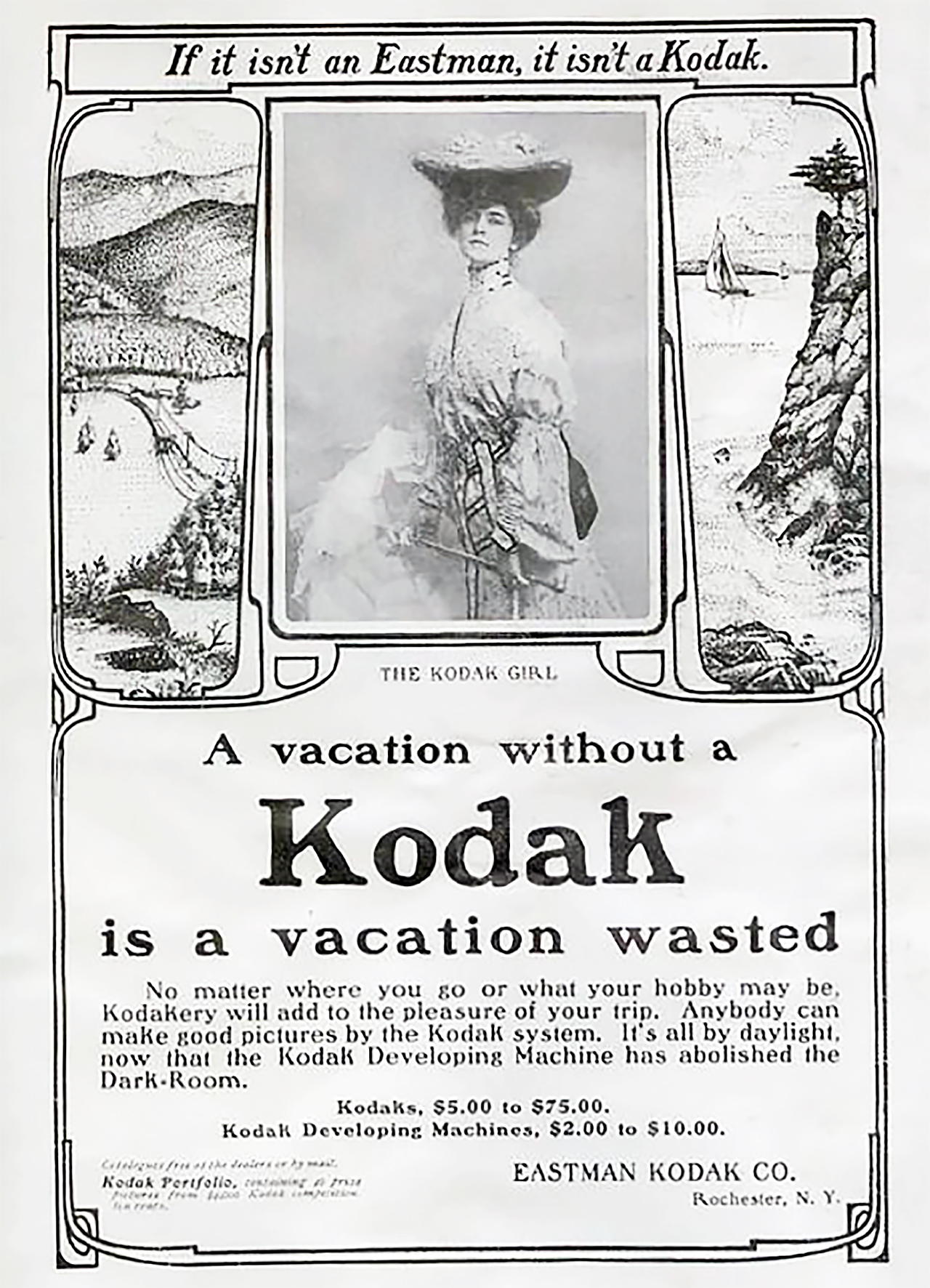
This advertisement is certainly a start to the later “Kodak-Girl” advertising campaign.
The Kodak Girl
In 1893, Kodak Company have created genius character “The Kodak Girl” to advertise their Kodak Cameras. The Kodak Girl character embodying independence and traveling women. The Kodak Girl was officially introduced to the public at the 1893 Chicago World’s Fair as the face of the new Kodak camera advertising campaign.
Kodak was acutely attuned to its target audience – women who were increasingly embracing self-sufficiency and expanding their horizons as the 20th century approached. From the 1900s, women were gaining more autonomy and independence, venturing into workplaces, and engaging in leisure activities outside the home. Whether embarking on beach getaways, snowy escapades, or tennis matches, these modern women radiated a spirit of joy and independence. Empowered to explore the world, they embraced their Kodak cameras as companions on their journeys, capturing every remarkable moment along the way.
One of the earliest ads, created in 1900, featured ‘The Kodak Girl” in an ornate black and white image in a magazine advertising the No 1 and No 3 Folding Pocket Kodak cameras. It featured a modern, elegantly dressed young woman wearing an elaborate hat adorned with roses, a summer parasol, and carrying her trusty Kodak. Even this early depiction featured the woman in a stripey outfit hand-tinted to look blue. The advert also introduced the company’s new strapline “Take a Kodak with you”. A change from the “You press the button, we do the rest.” strapline since its inception in 1892.
This movement was spearheaded by the visionary George Eastman and his Kodak Company, whose innovative Kodak Girls marketing campaign forever altered the landscape of photography. These Kodak Girls weren’t just models – they symbolised a shift in societal dynamics and a newfound independence that was reflected through the lens of the camera. The iconic Kodak Girl campaign has to be one of the longest-running marketing strategies of all time.
Space was taken at world expositions, and the “Kodak Girl,” with the style of her clothes and the camera she carried changing every year, smiled engagingly at photographers everywhere. In 1897, the word “Kodak” sparkled from an electric sign on London’s Trafalgar Square – one of the first such signs to be used in advertising.
Advertising
Eastman’s faith in the importance of advertising, both to the company and to the public, was unbounded. In 1889, when the very first Kodak products were ready for distribution, Eastman began to advertise in national magazines and weeklies, including Harper’s, Scribner’s Magazine, Scientific American, Harper’s Weekly, Frank Leslie, Time Magazine, and Puck Magazine – with ads written by Eastman himself.
Eastman introduced the Kodak camera in 1888. Eastman’s real genius lay in his marketing strategy. By simplifying the apparatus and even processing the film for the consumer, he made photography accessible to millions of casual amateurs with no particular professional training, technical expertise, or aesthetic credentials. To underscore the ease of the Kodak system, Eastman launched an advertising campaign featuring women and children operating the camera, and coined the memorable slogan: “you press the button, we do the rest,”
Within a year it became a well-known phrase. The phrase “You Press the Button, We Do the Rest” was also accompanied by customer testimonials on full-page ads. Later, with advertising managers and agencies carrying out his ideas, magazines, newspapers, displays and billboards bore this Kodak banner.
Within a few years of the Kodak’s introduction, snapshot photography became a national craze. Various forms of the word “Kodak” entered common American speech (kodaking, kodakers, kodakery), and amateur “camera fiends” formed clubs and published magazines to share their enthusiasm. By 1898, just ten years after the first Kodak was introduced, one photography journal estimated that over 1.5 million roll-film cameras had reached the hands of amateur shutterbugs.
Thanks to the “We Do the Rest” advertising campaign, the Kodak camera became wildly popular and Eastman and his Kodak company revolutionized the photography business in the United States and in the world. Thanks to the income generated from advertising this camera, Eastman Kodak was able to dominate competition for years and lead the way in photography innovations for years.
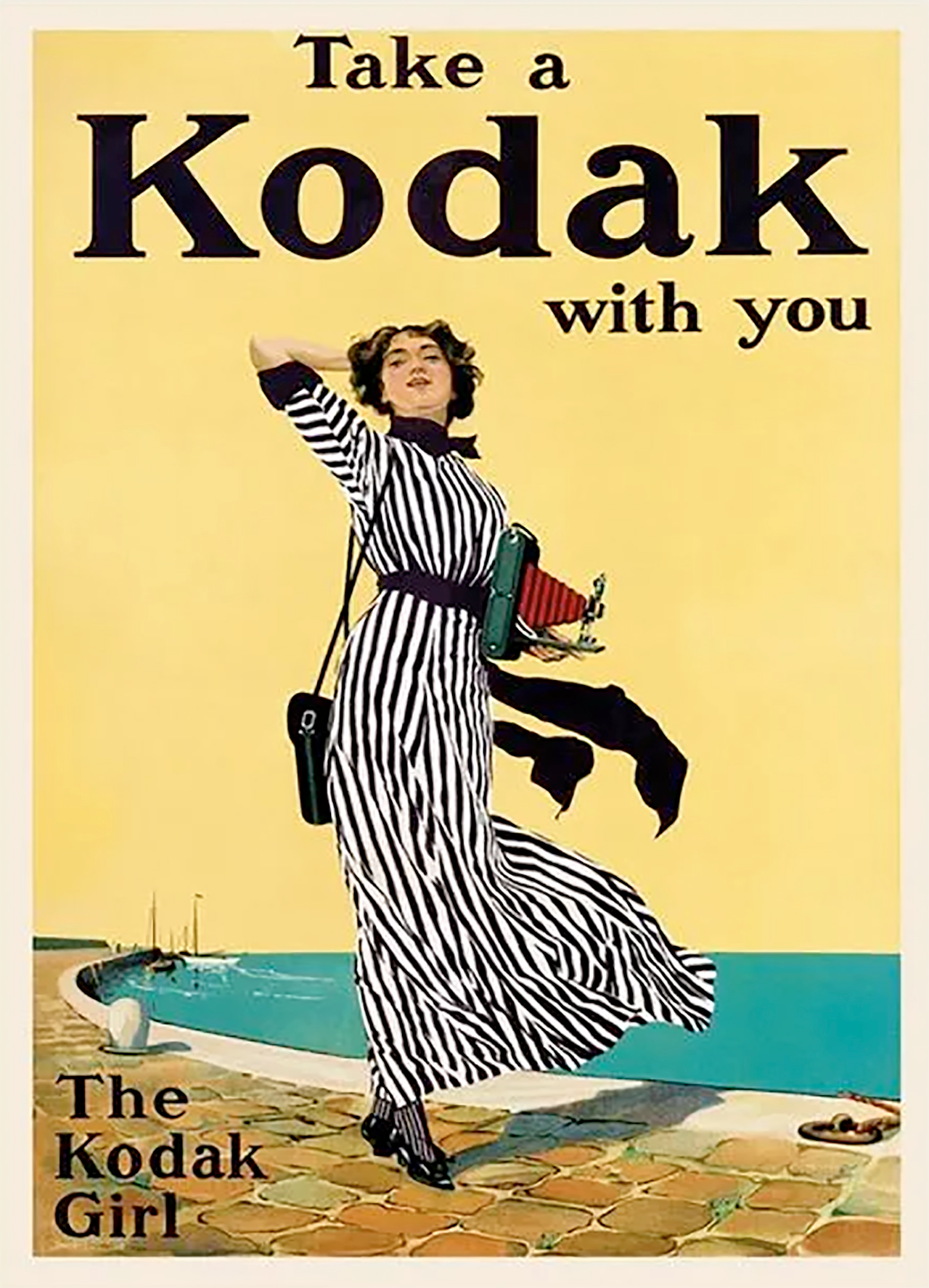
Around the turn of the last century, women were becoming more self-sufficient and began to enjoy more freedom, engaging more often in work outside the home and past times. From beach vacations to snowy winter outings to tennis matches, the modern woman was fun-loving and independent. She now felt free to go out and explore the world – and she was taking her Kodak camera with her! The Kodak-Girl was born.
A Principled Leader
To his basic principles of business, Eastman added these policies:
- faster growth and development through continuing research
- reinvest profits to build and extend the business, and
- treat employees in a fair, self-respecting way
In regards to his employees and in building his business, Eastman blended human and democratic qualities, with remarkable foresight. He believed employees should have more than just good wages – a way of thinking that was far ahead of management people of his era.
Early in his business, Eastman began planning for “dividends on wages” for employees.
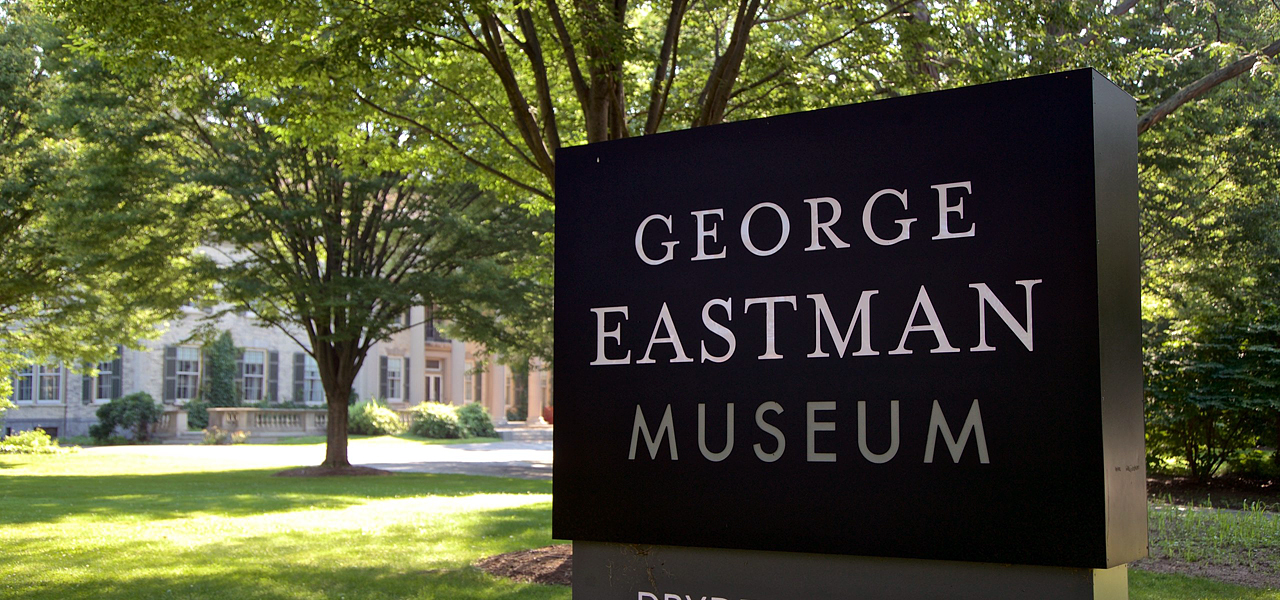
The George Eastman Museum is located in Rochester, New York, on the estate of George Eastman, the pioneer of popular photography and motion picture film. Founded in 1947 as an independent nonprofit institution, it is the world’s oldest photography museum and one of the oldest film archives.
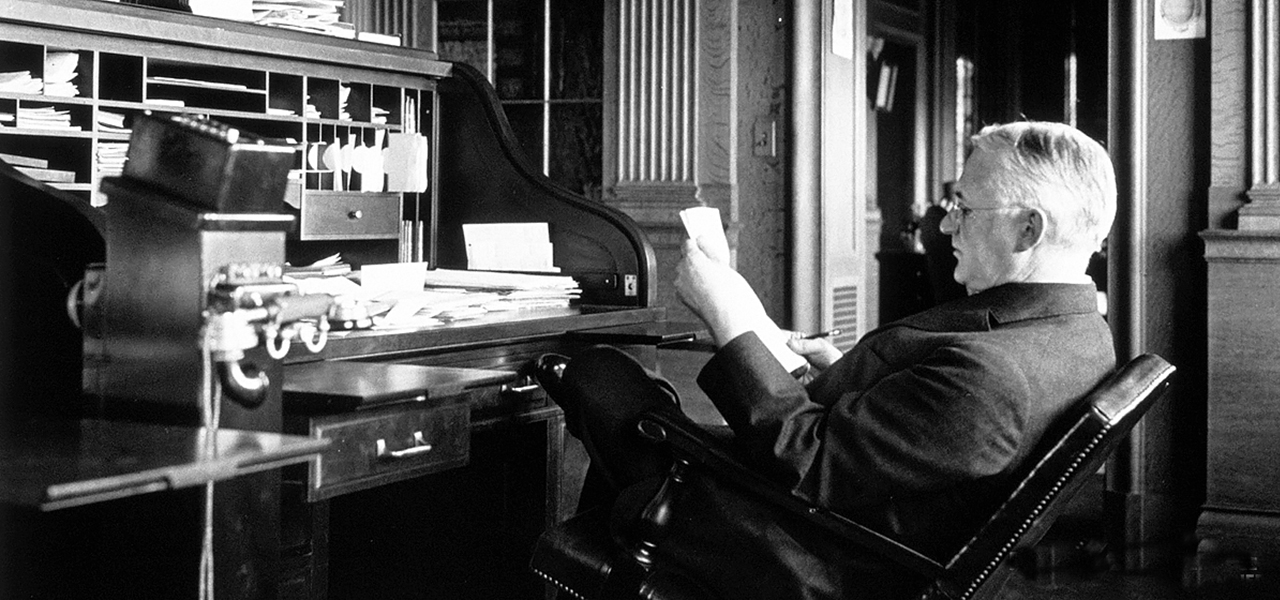
George Eastman sitting at his desk, reading a memo.
A true philanthropist
His first act, in 1899, was the distribution of a substantial sum of his own money – an outright gift – to each person who worked for him. Later he set up a “Wage Dividend” – an innovation for its time – in which each employee benefited above his or her wages in proportion to the yearly dividend on the company stock.
Eastman felt that the prosperity of an organization was not necessarily due to inventions and patents, but more to workers’ goodwill and loyalty.
In 1919, Eastman gave one-third of his own holdings of company stock – then worth $10 million – to his employees. Still later came the fulfilment of what he felt was a responsibility to employees with the establishment of retirement annuity, life insurance, and disability benefit plans.
healthcare
 At the turn of the 20th century, Eastman’s colleagues, Henry Lomb and William Bausch became actively involved in improving dental healthcare of the city’s children. In 1901, the first free dental clinic was opened in Rochester. However, Eastman believed that there should be a central clinic, and between 1915 and 1917 built the Rochester Dental Dispensary in the Italian Renaissance architectural style by architects Gordon, Madden, and Kaelber..
At the turn of the 20th century, Eastman’s colleagues, Henry Lomb and William Bausch became actively involved in improving dental healthcare of the city’s children. In 1901, the first free dental clinic was opened in Rochester. However, Eastman believed that there should be a central clinic, and between 1915 and 1917 built the Rochester Dental Dispensary in the Italian Renaissance architectural style by architects Gordon, Madden, and Kaelber..
On May 9, 1917, the dispensary was dedicated and on October 15, 1917, the dispensary officially opened to the public. One of the fascinating aspects of the clinic was that the waiting room was designed specifically with children in mind, and included entertaining decorations. 1917 also saw the graduation of the first class of the Dental Hygiene School.
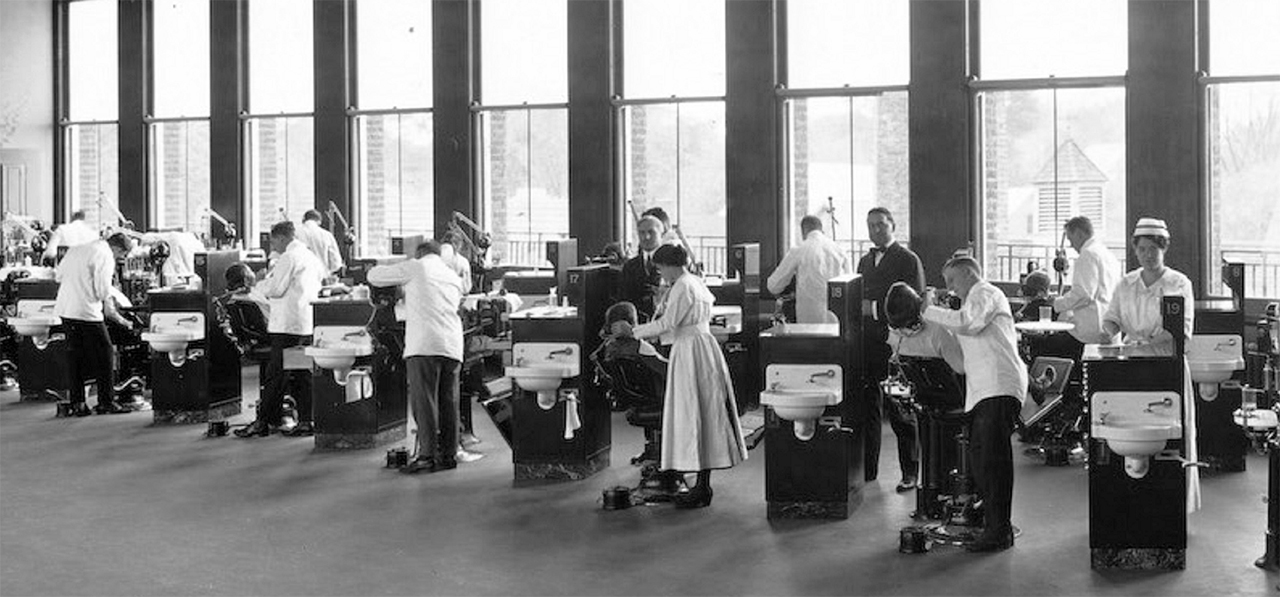
A clinic of the Rochester Dental Dispensary on East Main Street, 1920s.
Over the next few years, the dispensary continued to grow, prompting George Eastman to make an endowment of 1,000 additional Kodak stock shares in 1919. This endowment provided necessary funds for the dispensary to aid in the treatment of nose and throat disorders, as well as provide orthodontics services. This endowment also provided the necessary means for the dispensary to open a tonsil-adenoid clinic.
Mr. Eastman continued to be a major benefactor of the dispensary even into his death in 1932, leaving a bequest of an additional $1 million. In 1941 the dispensary officially gained its name as the Eastman Dental Dispensary.
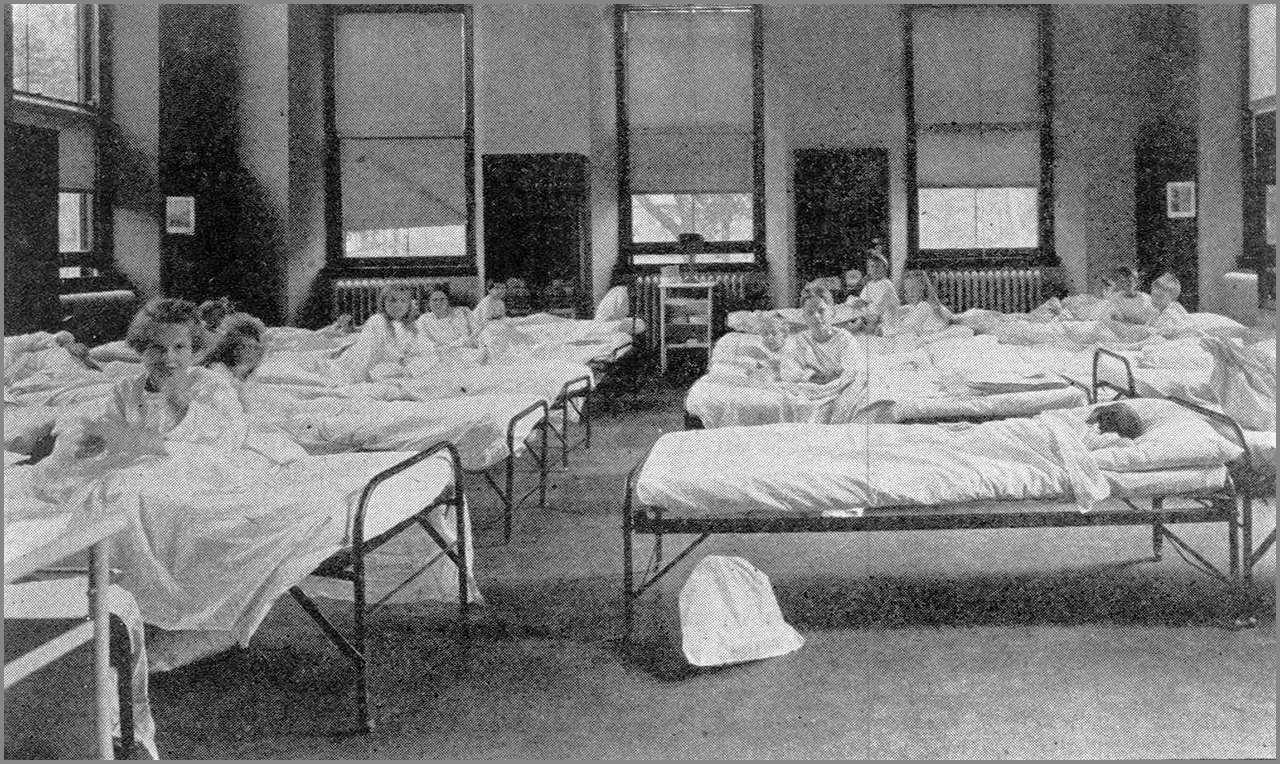
One would hardly believe that these children are in a hospital ward waiting for an operation. Such is the comfort of music and “movies” in the Tonsil-Adenoid Clinic in the Rochester Dispensary.
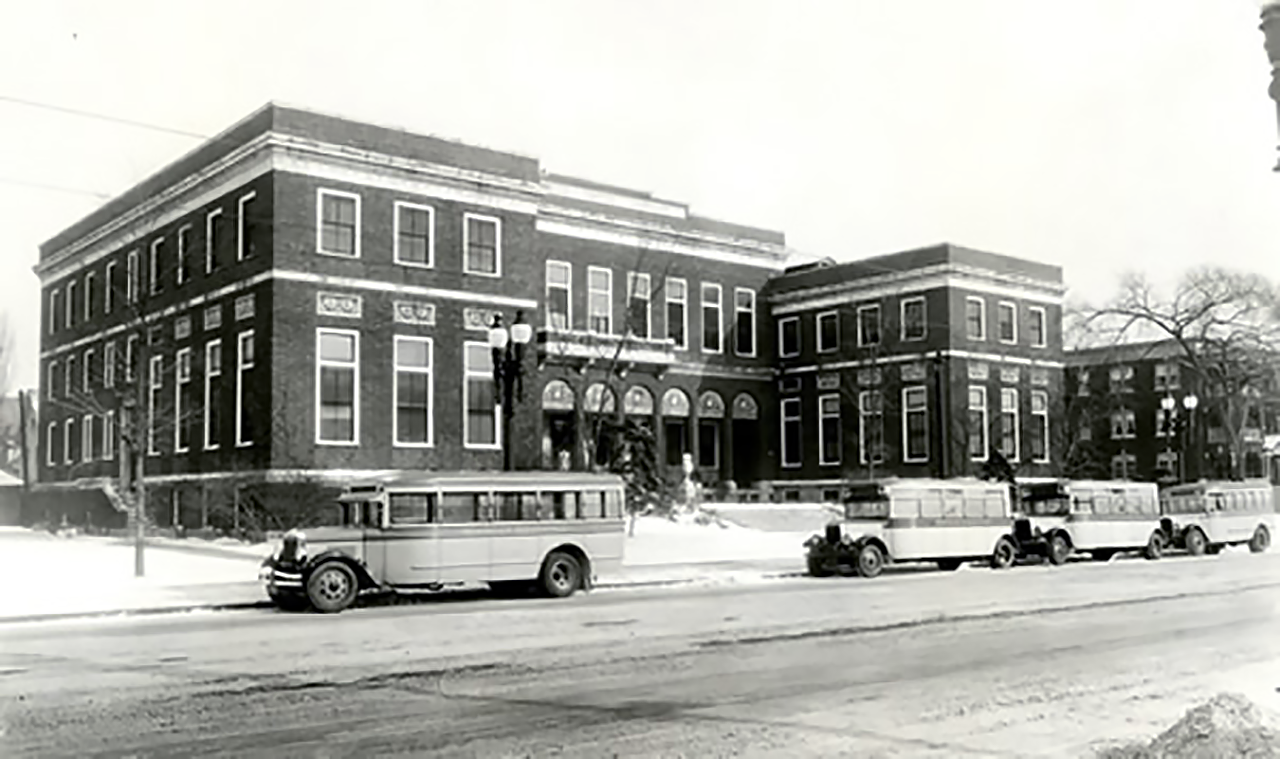
School buses lined up in front of the Rochester Dental Dispensary on East Main Street, 1930.
Vacancy, disrepair and reuse
By 1978, Eastman Dental, as the organization came to be known, moved to a new larger building, the Eastman Dental Center at the University of Rochester Medical Center campus. Following the move, the Eastman Dental Dispensary building sat vacant for close to four decades, and fell into a state of disrepair. It was listed on the National Register of Historic Places in 1983.
In 2013, Home Leasing LLC, a for-profit developer of affordable housing based in Rochester, New York, announced plans to redevelop the Eastman Dental Dispensary into 57 rental apartments. On April 16, 2014, New York State Homes & Community Renewal (HCR) announced awards of $2,200,000 in Housing Trust Fund (HTF) program funds, $946,000 in federal Low-Income Housing Tax Credits (LIHTC) and $449,356 in New York State Low-Income Housing Credits (SLIHC) to the project.
On September 26, 2018, a ribbon cutting ceremony was held at the former dispensary to celebrate the opening of the new senior apartment community, named Eastman Gardens in honor of the building’s original founder, George Eastman. The total cost of renovations and restorations totaled $20.7 million
In his time, George Eastman’s urban estate functioned as both a working farm and an elegant floral setting for entertaining. Today, the gardens welcome visitors from May through September for daily-guided tours, self-guided strolls, summertime concerts, and special events.
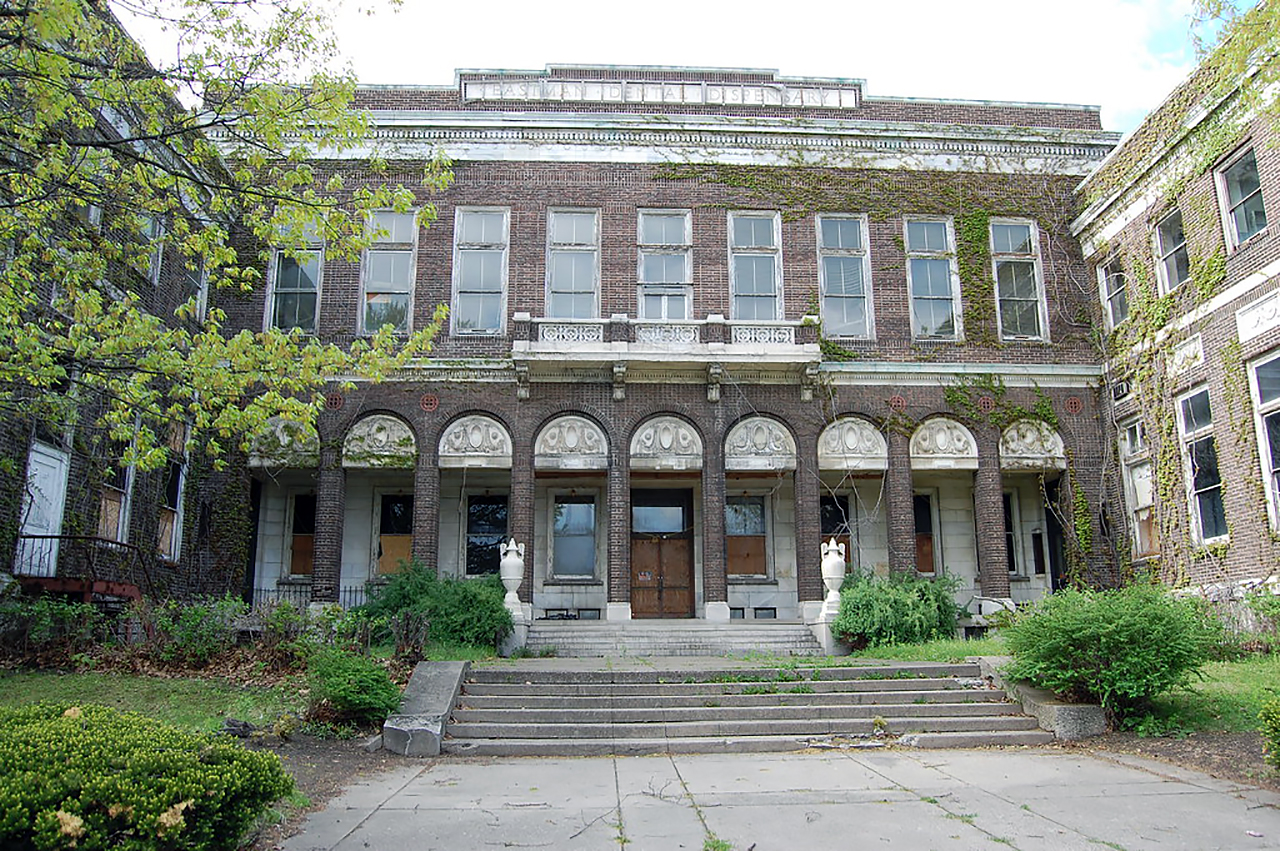
The Rochester Dental Dispensary in a state of disrepair at the end of the twentieth century.
KODAK Milestones
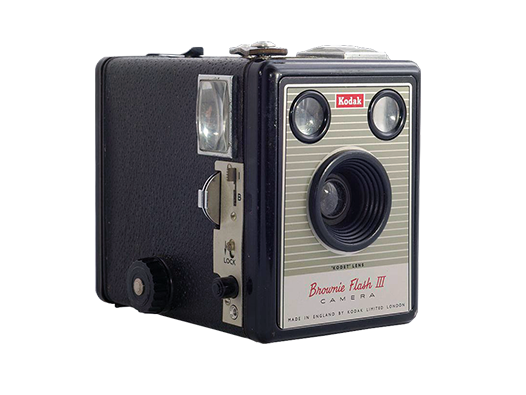
• Kodak introduced the first commercial transparent roll film in 1889.
• In 1900, the KODAK BROWNIE Camera brought photography within financial reach of consumers. The camera sold for $1 and film was 15 cents a roll.
• Introduced in 1935, KODACHROME Film became the first commercially successful amateur colour film. Initially offered in 16 mm format for motion pictures, formats for 35 mm slides and 8 mm home movies followed in 1936.
• In 1942, KODACOLOR Film the world’s first true colour negative film for still photography, was announced.
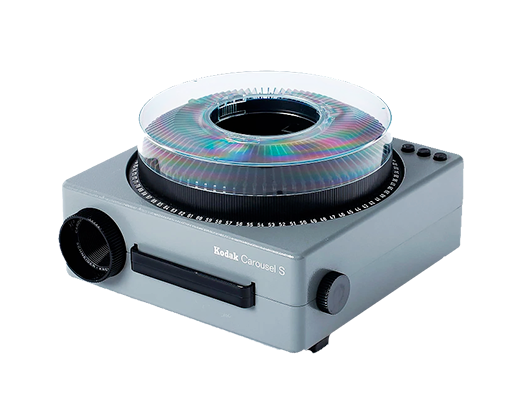
Kodak consistently introduced products that made it easier to take and enjoy photos. Two important examples were:
• KODAK CAROUSEL PROJECTORS
Introduced in 1961, the projectors had a round tray that held 80 slides for easy viewing.
• KODAK INSTAMATIC CAMERAS
Introduced in 1963, the cameras featured easy-to-use cartridge-loading film, which brought amateur photography to new heights of popularity
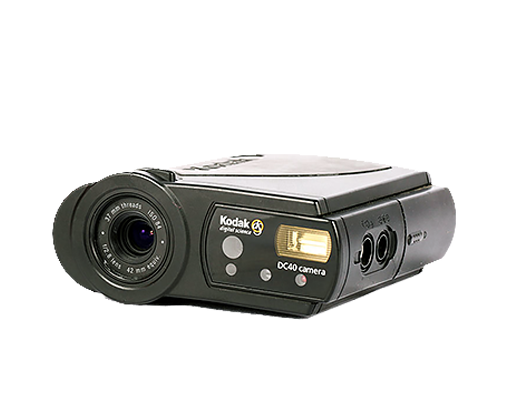
Ushering in the digital age, Kodak invented the world’s first digital camera in 1975, and the first practical megapixel charge-couple device (CCD) image sensor in 1986. This enabled other innovations to follow:
• The KODAK Professional Digital Camera System (a Nikon F-3 camera equipped by Kodak with a 1.3 megapixel sensor) for photojournalists was introduced in 1991.
• The KODAK DC40 Point-and-Shoot Digital Camera for consumers was launched in 1995.
FOUNDER: KODAK
COMPANY NAMES:
1884: the Austral Plate Co.; 1908-1911: Australian Kodak Limited; 1911-1920: Kodak (Australasia) Ltd.; 1920: Kodak (Australasia) Pty Ltd.; Kodak (Australia) Pty Ltd, and Kodak Australasia Proprietary Limited.
COMPANY ADDRESSES:
1885: 190 Russell Street, Melbourne; 1887: 37 Collins Street East, Melbourne CBD; 1889: 256 Collins Street, Melbourne; 1893: 260 Collins Street, Melbourne; 1886-1895: Austral Laboratory at Yarra Grange, Abbotsford, Victoria; 1905: 284 Collins Street, Melbourne; 1912: Argent Street, Broken Hill; 1927: 4 Southhampton Crescent, Abbotsford; 1961: Coburg; 2004: Closure of Kodak’s Coburg plant.
Between 1884 and 2004, Kodak Australasia and its local predecessors manufactured and marketed a wide range of photographic products via its Abbotsford, Burnley and Coburg factories in Melbourne to the Australasian region.
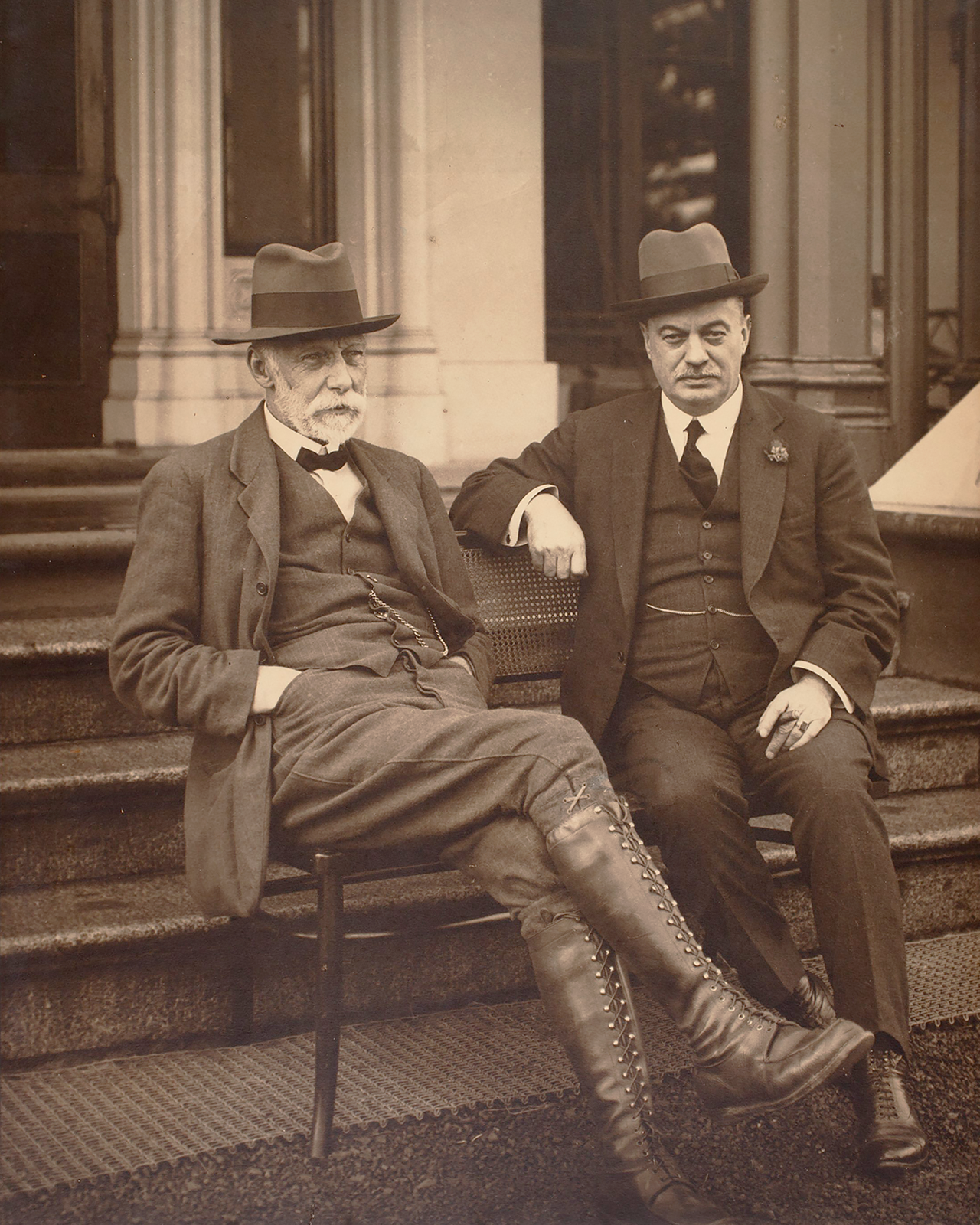
Thomas Baker and JJ Rouse at Baker’s home ‘Manyung’, Mornington, June 1921
Baker & Rouse
In 1894 the company became known as Baker and Rouse Australia Laboratory. Baker concentrated on improvements to the manufacturing of plates and production in the laboratory whilst Rouse set up a network of retail outlets.
Over the years the Austral Plate Co operated under the name Baker and Company Laboratory, Baker and Rouse Australia Laboratory, and after the merger with Eastman Kodak, became known as Australia Kodak Limited, Kodak (Australasia) Pty Ltd., Kodak (Australia) Pty Ltd, and Kodak Australasia Proprietary Limited.
The Austral Plate Company continued working from Baker’s home until 1886, after which it moved into a three-story building nearby to accommodate its 10 employees. By the 1900s the Abbotsford factory was producing bromide and gaslight papers, negative materials, mounts, envelopes, and ready mixed chemicals.
The business continued to expand as Baker and Rouse took over existing companies or trade outlets. They imported Eastman products from London and in 1888 obtained a trade agency for the American Eastman products, which they successfully sold.
Baker and Rouse opened new stores and branches in Melbourne, Adelaide, Brisbane, Hobart, and Sydney. Between 1887 and 1900 they had outlets at fourteen locations. Their first wholesale and retail store opened at 37 Collins Street Melbourne, where Lichtner & Co, a photographic supply store had operated.
Kodak Australasia’s history goes back to 1884, when the business that Thomas Baker created to make photographic glass plates was founded in the cellar of his Abbotsford home. Baker’s business soon evolved into the partnership with JJ Rouse, becoming Baker & Rouse, before finally merging with Eastman Kodak in 1908.
Let’s take a more detailed look at the history of Kodak Australia. In 1881 Thomas Baker, a registered pharmaceutical chemist, and his wife Alice moved from Queensland to Melbourne, where they purchased a property on the Yarra River at Abbotsford. The property was known as ‘Yarra Grange’ and was to become the site of his factory. From 1882 to 1883 Baker undertook a medical degree at the University of Melbourne, which he did not complete due to his consuming interest in the production of photographic dry plates.
Thomas Baker was an entrepreneur. Although it is unknown where Baker learnt to produce dry plates, it is highly likely that like Eastman his technical knowledge came from the British Journal of Photography and Almanac. He may have also obtained information from various publications available at the time, such as the Photographic Printers Assistant, found amongst the material collected from Kodak by Museum Victoria.
Baker was successful in marketing and selling photographic plates and materials. As a result, he needed to expand his photographic manufacturing and retail business, particularly after forming a partnership in 1887 with accountant John J Rouse.
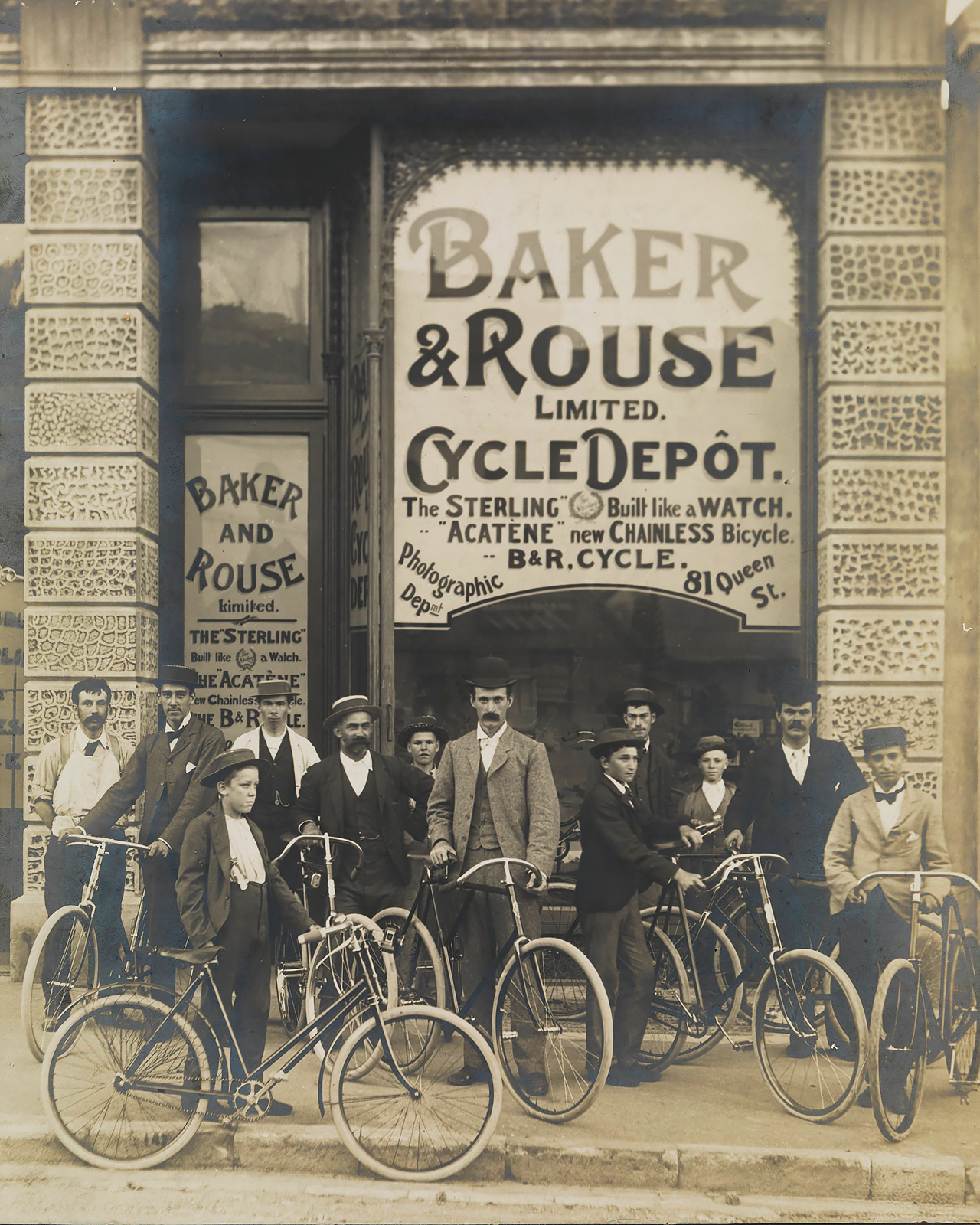
Baker & Rouse Limited Store and Cycle Depot Store, Brisbane, 1893.
Formation of Australia Kodak Limited
Due in part to the success of sales at Baker and Rouse of Eastman products, Kodak Limited opened in 1900 its own branch in Melbourne, at 284–286 Collins Street. However, the store did not match the sales figures of Baker and Rouse, which continued with good sales. Contributing to Kodak Limited losses were the high tariffs imposed at the time on imported films.
After Thomas Baker visited George Eastman in Rochester, Baker and Rouse was appointed in 1905 sole Australian agent for Eastman Kodak products. The agreement included the sale to Baker and Rouse of the Kodak Limited store in Collins Street. In return Baker and Rouse agreed to purchase a certain percentage of Kodak products directly from Rochester, rather than from London. A clause in the agreement provided that at a suitable time Kodak could purchase Baker and Rouse.
That time came in 1908, after further import tariffs introduced in 1907 greatly increased the cost of imported goods. Baker traveled to Rochester and convinced Eastman on the benefits of a merger between Baker and Rouse and Kodak Limited to form Australia Kodak Limited. Baker saw the merger as an opportunity to upgrade and expand the factory in Abbotsford. Eastman saw this as a way of avoiding tariff imports by manufacturing and finishing products in Australia, so a win-win situation for both of them.
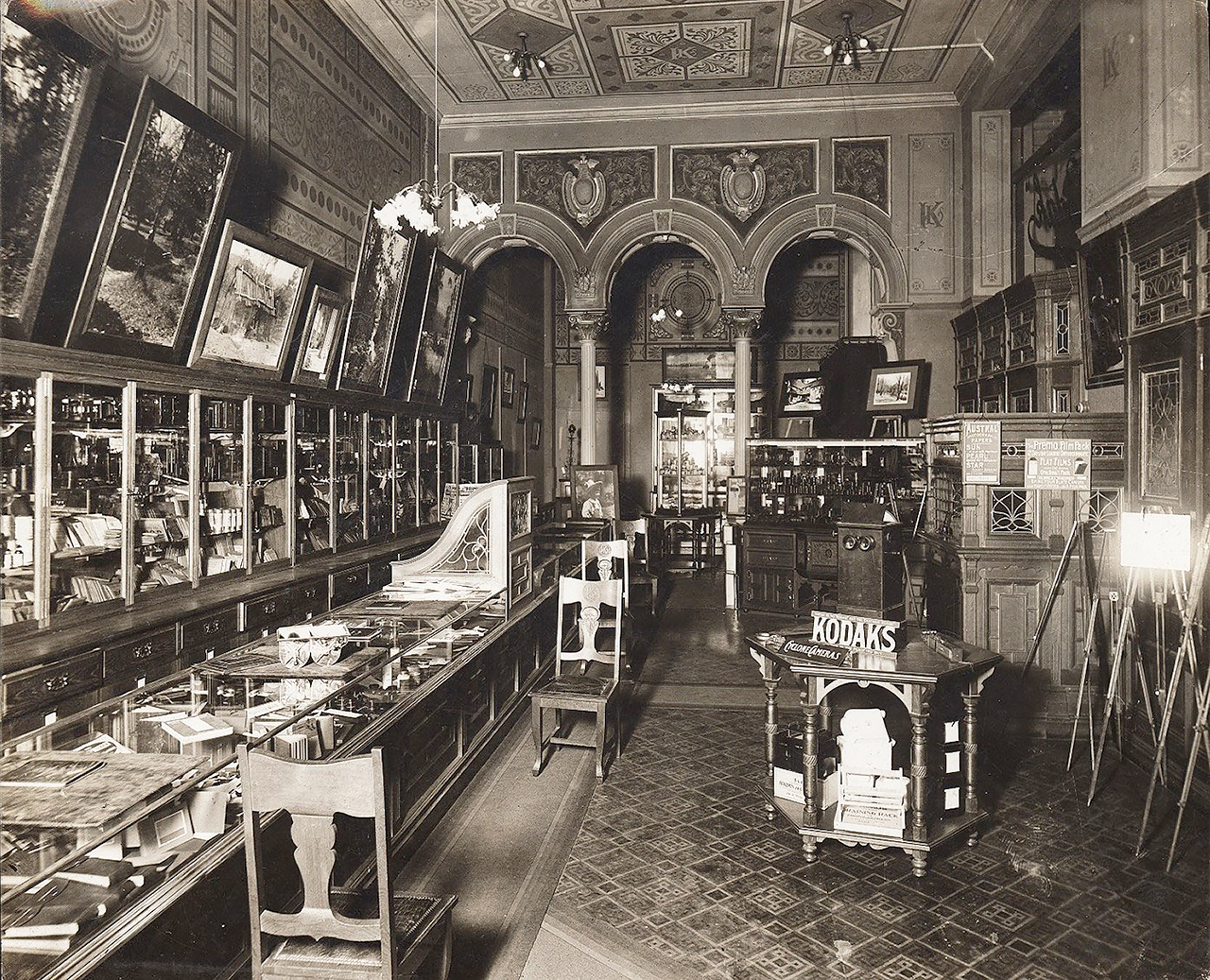
Kodak shop interior, Block Arcade, Melbourne, April 1905
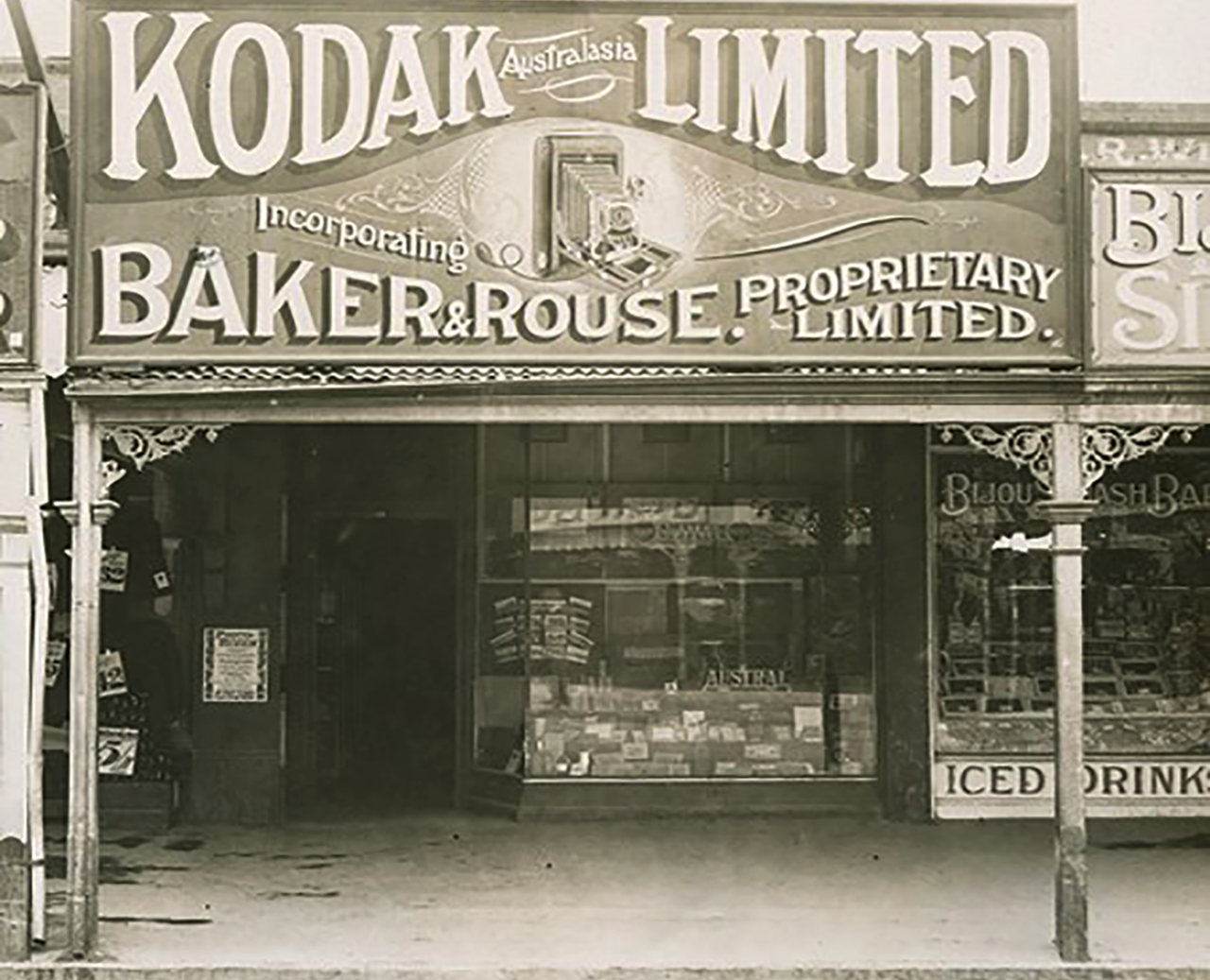
Kodak Australasia Limited Shop in Argent Street, Broken Hill, 1912
Growing popularity of photography
Baker returned to Melbourne with technical information, formulae, and procedures from Kodak limited and a plan to reorganize and extend the Abbotsford factory on the ‘Yarra Grange’ site. New buildings for the factory and offices were erected with staff numbers increasing. In 1909 Baker asked Eastman to send a trained Kodak staff member to the Melbourne plant to assist with the setting up of film, paper and emulsion production.
As the popularity of photography increased, so did the number of available products, which in turn required expansion of the factory. By the 1920s the company had grown too large to be run by Baker and Rouse and their families. Up until this time the company had been more like a family run business and staff had been part of the ‘Kodak family’.
In December 1928, Thomas Baker died unexpectedly. John Rouse had little experience with the manufacturing side of the business. This prompted him to request from George Eastman to send someone to assist. They sent Henry Foote, who was appointed Controller of Sensitized Goods Manufacture at the Abbotsford factory. He was 26 years old and remained with Kodak until 1962. At this time John Rouse appointed his son Edgar Rouse Managing Director and Abbotsford Factory Manager. In September 1938 John J Rouse died at the age of 77 and Edgar Rouse succeeded him as Chairman and Chief Managing director.
Production Facility
In 1936 the Abbotsford factory became the first place outside the USA to process Kodachrome film. A new building, at the already crowded Abbotsford plant, was built and further building changes continued at the site during the 1940s and 1950s. This included the creation of the emulsion department, an analytical and technical services laboratory, the film coating machine was upgraded, a separate over-coating station was installed, and the recovery department was upgraded. By 1949 the Abbotsford factory, which employed 650 staff, was producing film, plates, paper, and photographic chemicals, and was undertaking developing and processing of negatives and motion picture processing. By the 1950s expansion space was limited at Abbotsford.
In 1955 production began in Australia of Kodachrome and by 1957 a decision was made to start assembling cameras in Australia, using parts and accessories imported from Rochester and Harrow. Later, cameras were produced using locally made components. In 1960 Kodacolor film processing was also introduced at Abbotsford. Growth continued in the photographic industry during the 1950s worldwide with Kodak advantaged by import license restrictions in Australia, which limited the purchasing of overseas equipment. As a result, Kodak concentrated on the production of raw materials and accessories such as, reels, cassettes, slide boxes, and cameras.
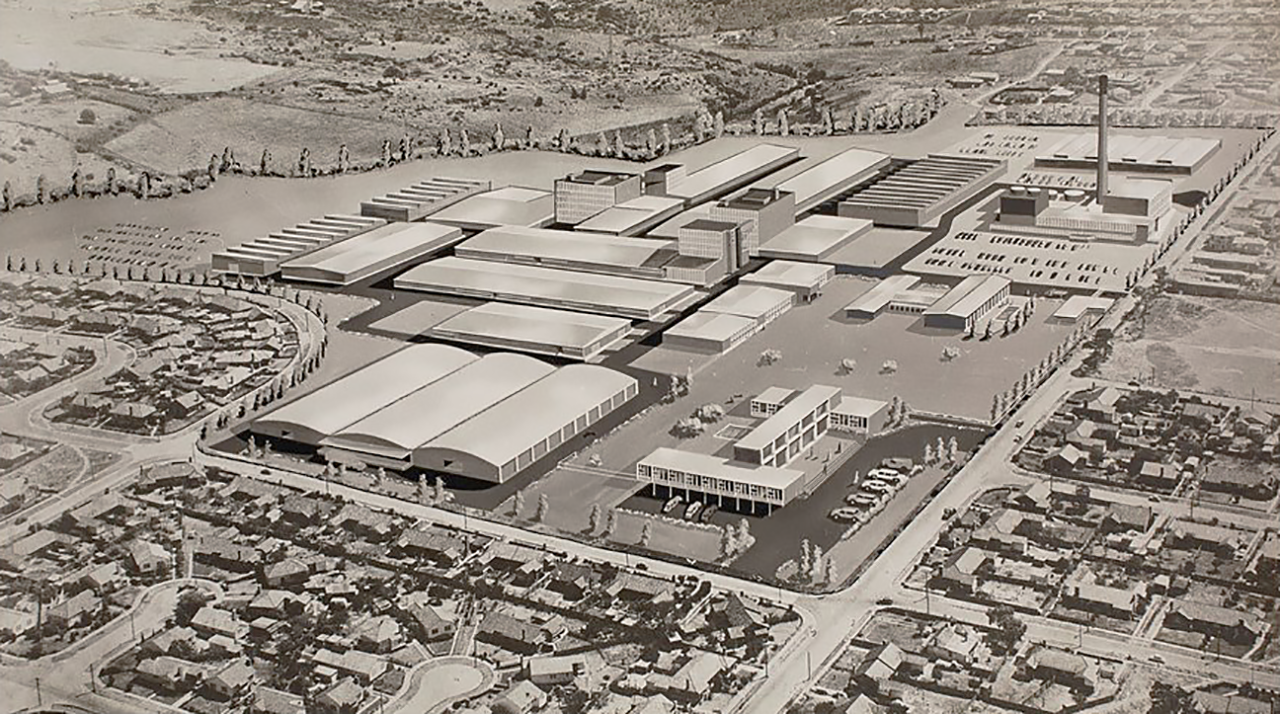
Early architectural drawing of the Coburg factory site, circa 1950s. The eventual built design was different from the concept designs, but this drawing provides insight into the conceptual stages of the build.

Kodak Australasia Pty Ltd, Kodak Factory Along Southampton Cres, Abbotsford, Victoria, circa 1930s
Kodak goes to Coburg
Due to demand for production the Abbotsford site was no longer adequate. This prompted the company to begin looking at building a new factory on a previously purchased site in the outer Melbourne suburb of Coburg. Design work started in 1956 for the new film finishing department, followed by the emulsion coating area, the engine room, and the amenities, with building beginning in 1957.
The powerhouse personnel were the first to move onto the Coburg site in 1959 followed by the x-ray and sheet film, and roll and movie film departments. In 1960 the emulsion and coating trace, and the paper finishing departments were completed and commissioned. By the end of that year the garage, distribution and the workshops were also completed. The yet to be completed factory in Coburg was officially opened on 14th April 1961.
By 1963, through the purchasing of local shares, Eastman Kodak owned 99% of the Australian company, which by now had new management. After thirty years of close involvement in the daily activities of the company, Edgar Rouse and Henry Foote had retired. The company was now predominately owned by Kodak in Rochester, and the Australian balance sheets came under close scrutiny. With greater pressure placed on the Australian company to perform financially, head office in Rochester directed the Australian plant to ‘optimize performance and reduce waste”. In addition, the growth and changes to photographic products and technology reduced a product’s life, from forty years to ten years.
Final Days
Between 1963 and 1970 Kodak produced 50 million Instamatic cameras, all of which needed film. More recently, what began as a gentle shuffle away from film by domestic consumers, has become a stampede to digital technology.
One in three Australian homes now have a digital camera and one in six Australians own a mobile telephone with a digital camera function (these are figures from 2008; the current number will undoubtedly be much higher).
But the long-term future was clear. In 2000, Kodak’s Australian operations made a $56 million profit. By 2002, this had dropped to just $615,000. It was a simple matter of supply and demand.
Kodak Australasia was no longer producing products the market wanted.
On 26 November 2004, with great sadness, staff undertook the last ever film production run, leaving most of its work force out of a job.
For many, the closure of Kodak’s Coburg plant came as a sad, devastating loss, and especially hard-hitting given that the move to shut down operations had happened so suddenly, with just two months’ notice. But while the end came more suddenly than some had expected, it hardly came as a surprise.
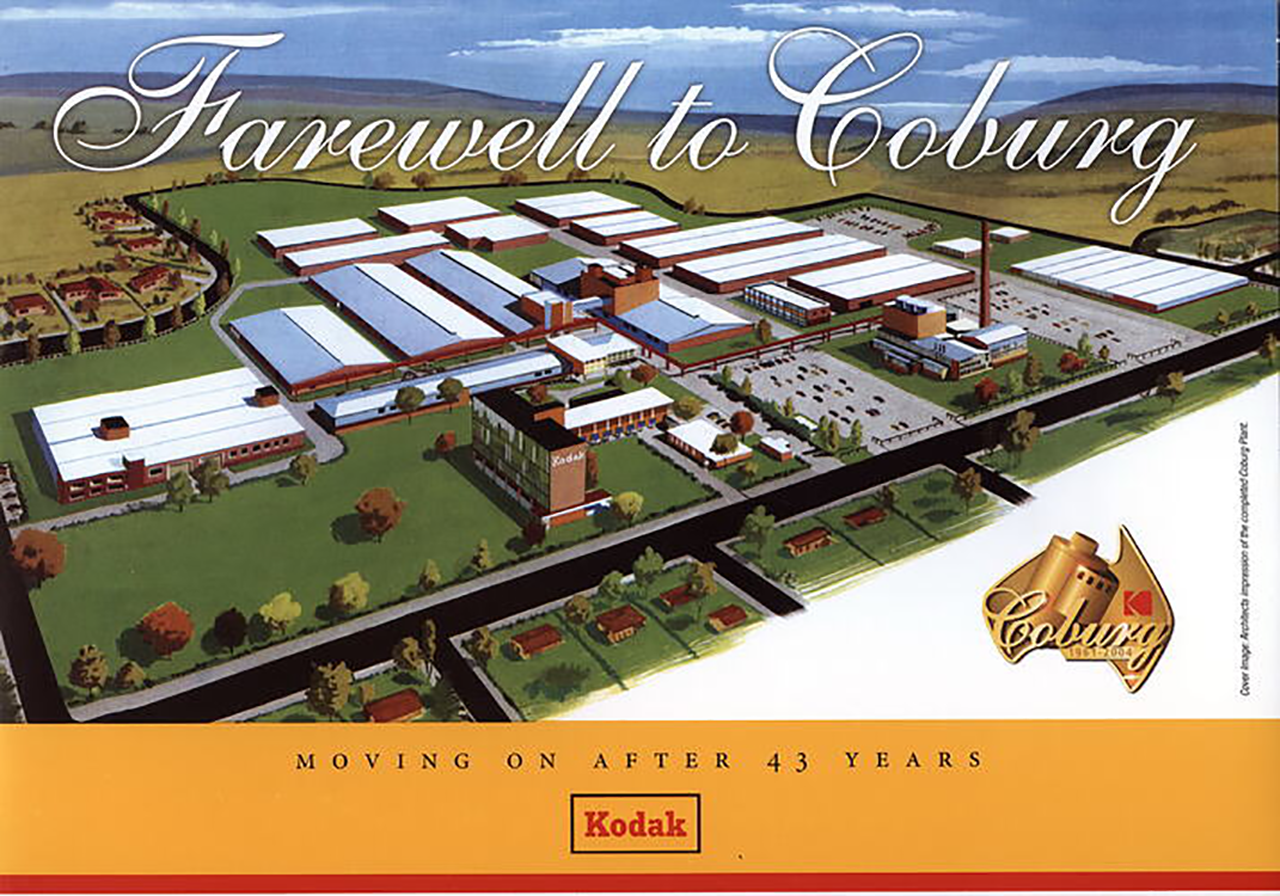
The Coburg factory, and all its original buildings, have all been demolished, with a new era of housing development, known as Coburg Hill, reshaping the landscape once again.
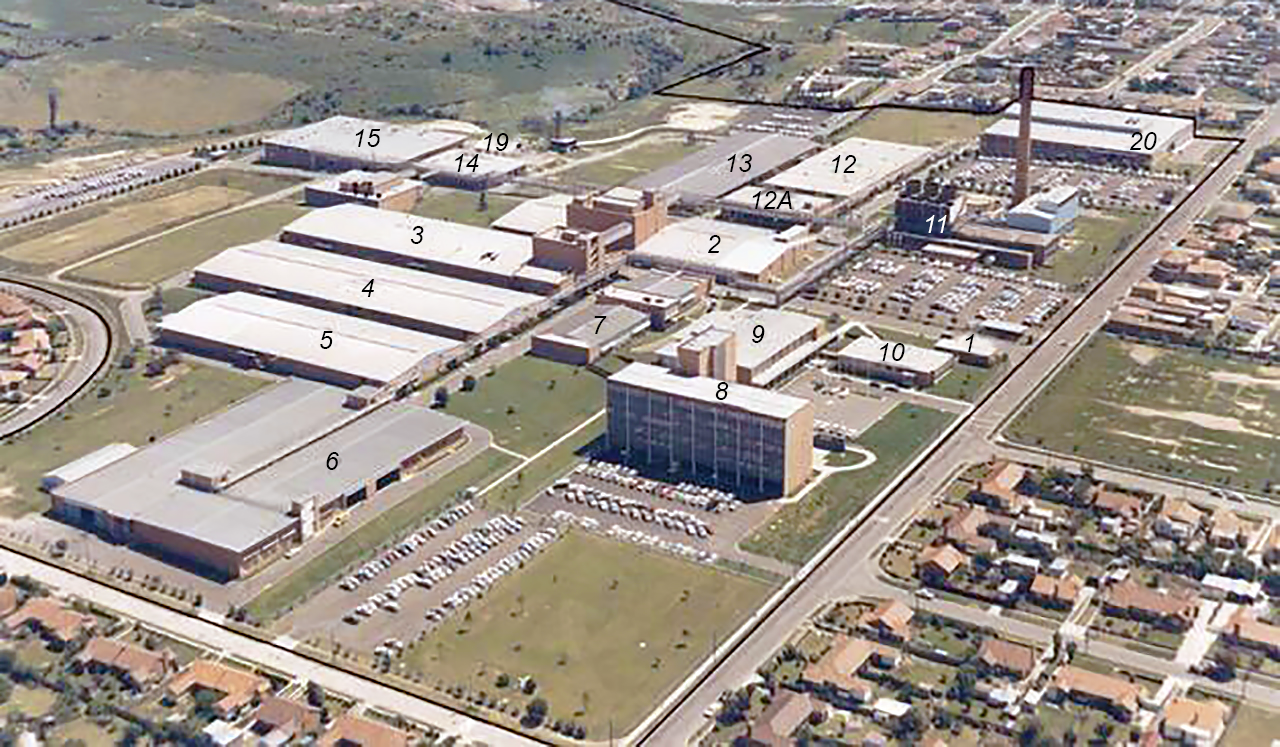
Kodak (Australasia) PTY.LTD. – Coburg Plant
1) Gate-House
2) Emulsion Making
3) Emulsion Coating
4) Roll Films
5) Sheet Films
6) Distribution Centre
7) Testing
8) Head Office
9) Amenities
10) Medical and Personnel
11) Power House
12) Engineering Workshops
12A) Engineering Division
13) Paper Finishing
14) Transport
15) Cameras, Reels and Sandries
17) Research Laboratory
19) Silver Recovery
20) Processing
Into the digital age
 The decision to close Kodak’s Coburg plant was a business decision that was faced by many companies once based on traditional silver halide photography such as Fuji, Ilford and Agfa. These companies now either no longer exist or have shifted towards ‘imaging’ or ‘digital photography’. This change within the industry, which has resulted in the reduced demand for traditional photographic film and papers, has seen the rapid decline and discontinuation of a large numbers of silver-halide products.
The decision to close Kodak’s Coburg plant was a business decision that was faced by many companies once based on traditional silver halide photography such as Fuji, Ilford and Agfa. These companies now either no longer exist or have shifted towards ‘imaging’ or ‘digital photography’. This change within the industry, which has resulted in the reduced demand for traditional photographic film and papers, has seen the rapid decline and discontinuation of a large numbers of silver-halide products.
Similar to many other major photographic companies, Kodak has also become an “imaging business in the digital age”. Approximately 400 employees remain at the headquarters of Kodak Australia in Collingwood, which is not far from where the company started. However, the manufacturing of photographic materials is now part of Australia’s history and not its future. This “is the natural evolutionary progress of photography” and what has occurred is “the closing of another chapter in the history of photography” although “perhaps the last chapter”.
FOUNDER: KODAK
COMPANY NAMES:
1899: Canadian Kodak Company; 1979: Kodak Canada Incorporated; December 2004: Closure of the plant.
COMPANY ADDRESSES:
1899: 41 Colborne Street, Toronto, Ontario; 1901: 588 King Street West, Toronto; 1917: Eglinton Avenue and Weston Road named Kodak Heights, Mount Dennis, Toronto; 2005: Closure and demolition of the plant; Building Number Nine, which had been erected as an employee recreation centre, was left standing and is being converted into a TTC metro station.
Over the course of its 106-year presence in Toronto, Kodak affected more than just the history of photography in Canada. In satisfying its need for cutting edge photographic manufacturing facilities, the company contributed several ambitious architectural projects to the cityscape of Toronto.
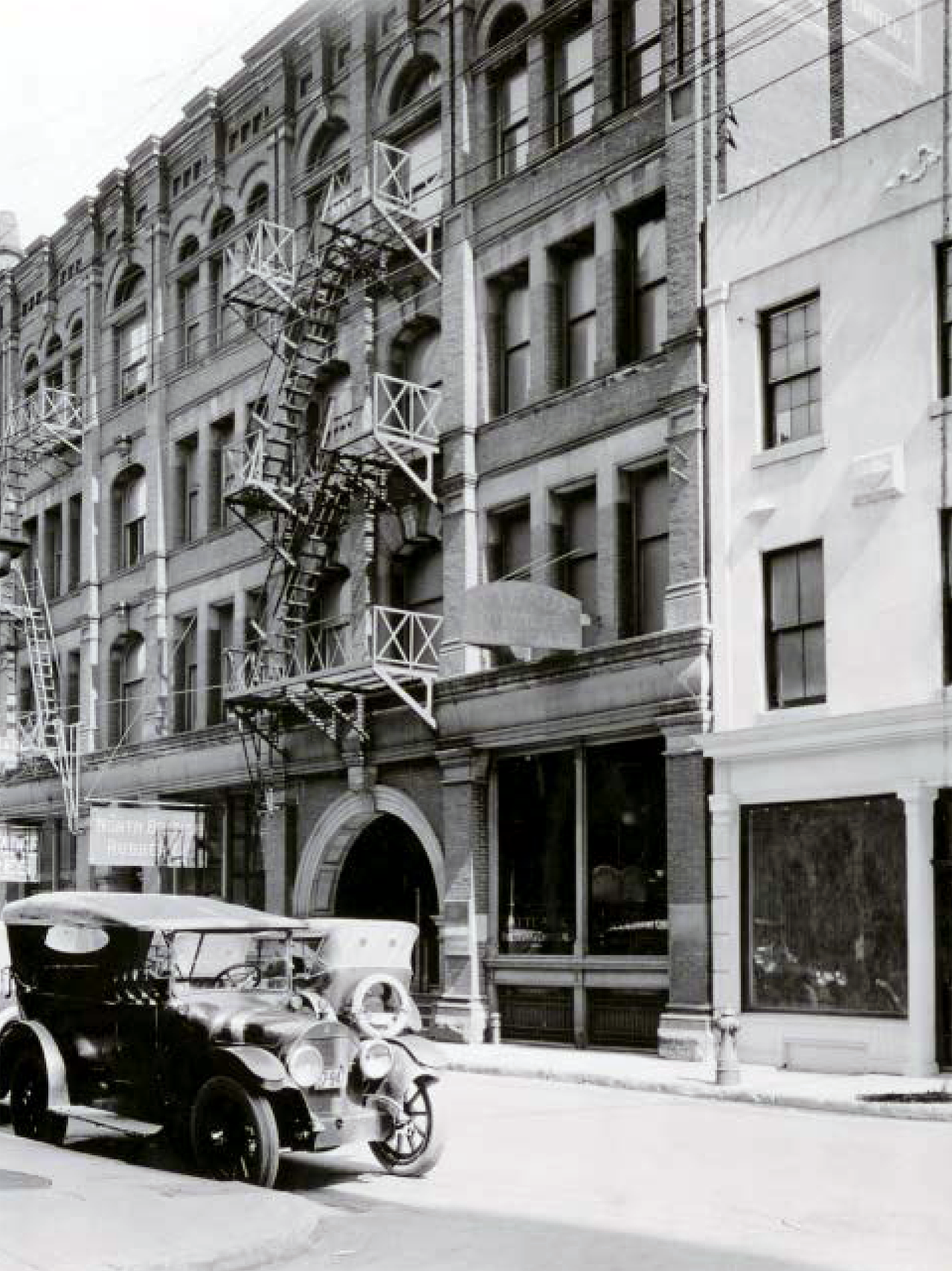
Canadian Kodak Co. building at 41 Colborne Street, Toronto, ca. 1900
Growing, growing, growing
Like the Brownie, Canadian Kodak Ltd. was an immediate success and the Colborne Street premises soon proved insufficient to house the rapidly growing Canadian subsidiary. With its lease set to expire in 1901, the company set out to find a new site for its operations in what was then Toronto’s manufacturing district.
In September of that year, Canadian Kodak purchased an empty lot at 588 King Street for $70 per foot and hired Toronto architects Chadwick & Beckett to build a new plant. The business occupied this location for the next 17 years. Additions to the building were constructed and staff numbers were increased until the company had reached its maximum capacity for this site.
Over its 17-year tenure at this facility, Canadian Kodak began its transition to a manufacturing operation, producing its own photographic film, paper, and mounts. The company also began to import camera parts – rather than completed cameras – from Rochester for assembly and distribution in Canada.
Like the Colborne Street site, the King Street premises quickly proved too small to house the growing business and two additional buildings were constructed in an adjoining lot. By 1908, the King Street factory had expanded to its full capacity and the company had grown to 108 employees.
Like Kodak’s Colborne Street plant, the King Street facility still stands today, now part of a busy retail strip in downtown Toronto.
In 1888, George Eastman founded the Eastman Kodak Company in Rochester, NY. In 1899, after successfully operating on the American market for over a decade, Eastman set his sights north, dispatching Kodak employee John G. Palmer to Toronto to determine the viability of establishing a subsidiary in Canada.
Palmer discovered a robust market for photographic products and, on November 8, 1899, Canadian Kodak Co., Limited was incorporated under the Ontario Company’s act. The nascent company established headquarters in downtown Toronto, embarking on a relationship with the city that would last more than a century and would constitute the heart of the company’s manufacturing operations in Canada. The Canadian branch of the already successful Rochester-based Eastman Kodak Company officially opened its doors in 1900 in an existing building at 41 Colborne Street, Toronto under the direction of John G. Palmer, the same year that Eastman introduced the Brownie camera model.
The Colborne Street property was intended to serve as an assembly and distribution centre, rather than a site of manufacturing: the fledgling company imported bulk film and photographic paper, as well as completed cameras, from Rochester for packaging and distribution in Canada.
The property was leased to Canadian Kodak Co., Ltd. for 3 years at $840 per year. Consisting of four floors and a cellar, 24 ¼ x 71 feet each, the site housed the entire Kodak plant and its staff of ten. A further 7-year option on the property was offered by the owner but never taken. Largely unchanged from its original structure, the Colborne Street building still stands today.
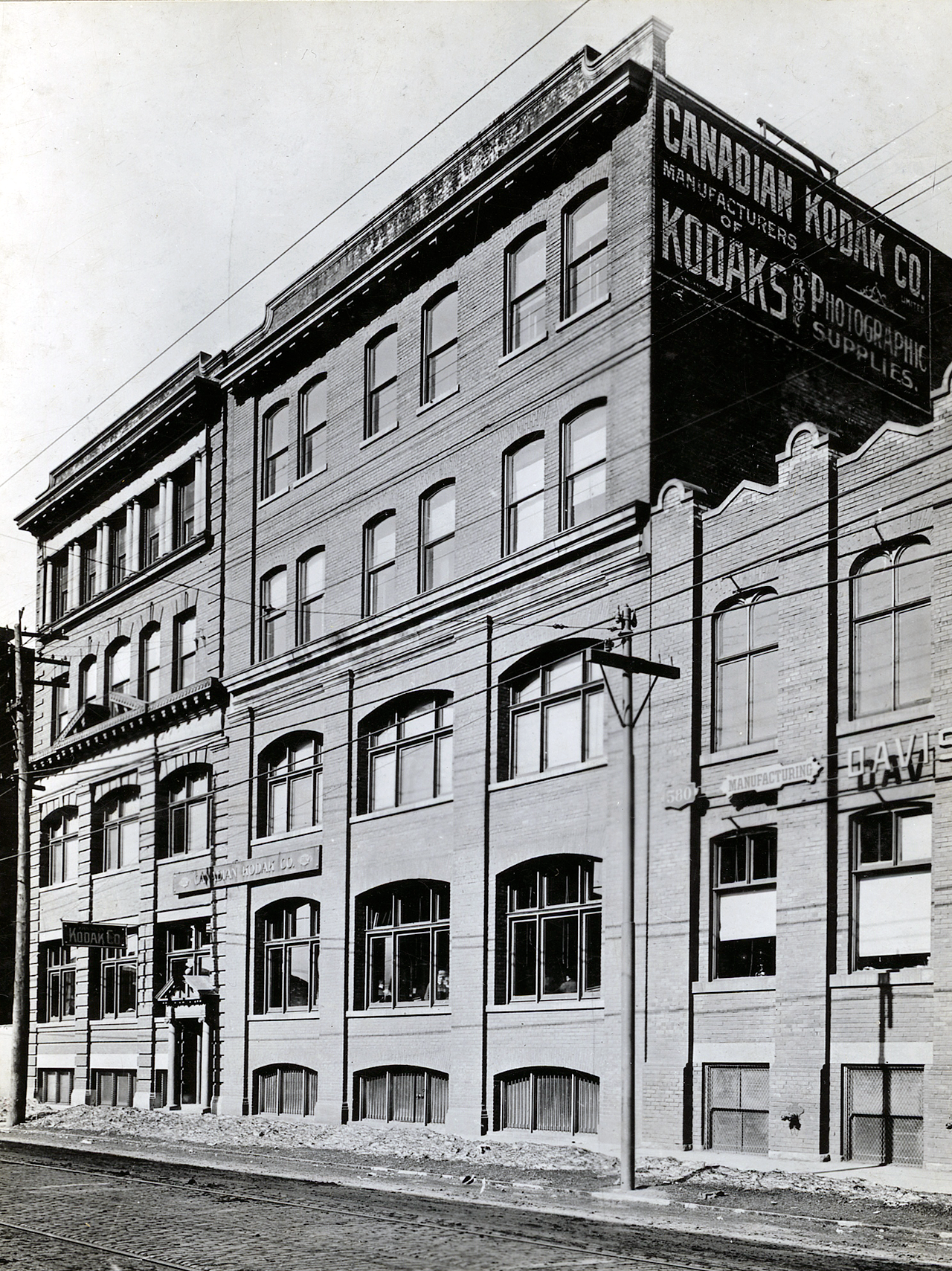
Canadian Kodak Co. Kodak-588-King-Street
A New Home for Kodak:
Kodak Heights
The Eastman Kodak Company began to manufacture the Vest Pocket Kodak in 1912. Truly portable and compact enough to be stored in a pocket or purse, later versions of the camera offered an autographic feature, allowing the user to permanently record dates and titles onto their negatives while advanced through the camera. Marketed as the perfect soldier’s camera when war loomed, the Canadian Kodak Company ran its own advertisements to entice the troops to use them, which they did.
By 1912, Canadian Kodak had outgrown its King Street facilities. That year, George Eastman visited Toronto to establish a sustainable plan for expansion. The result of his visit was the purchase in 1913 of 25 acres of farmland at Eglinton Avenue and Weston Road, Toronto, for $5,000 per acre. Soon after the deed was signed, construction began on the original seven buildings at Kodak Heights, including two that were connected by an enclosed bridge. The property was nicknamed Kodak Heights by company executive S.B. Cornell.
The first to be completed, Building 1, was the power plant, which connected to the Canadian Pacific Railway just south of the plant. Upwards of 50 tonnes of coal were burned every day, the smoke from which was released through a 200-ft chimney constructed by the Custodis Canadian Chimney Co. The structure soon became a local landmark. Canadian Kodak also contracted with the Canadian Pacific Railway Co. to extend tracks into the Kodak Heights property, allowing easy delivery of supplies and coal. The tracks ended inside the Power House, reaching the building via a custom-built trestle.
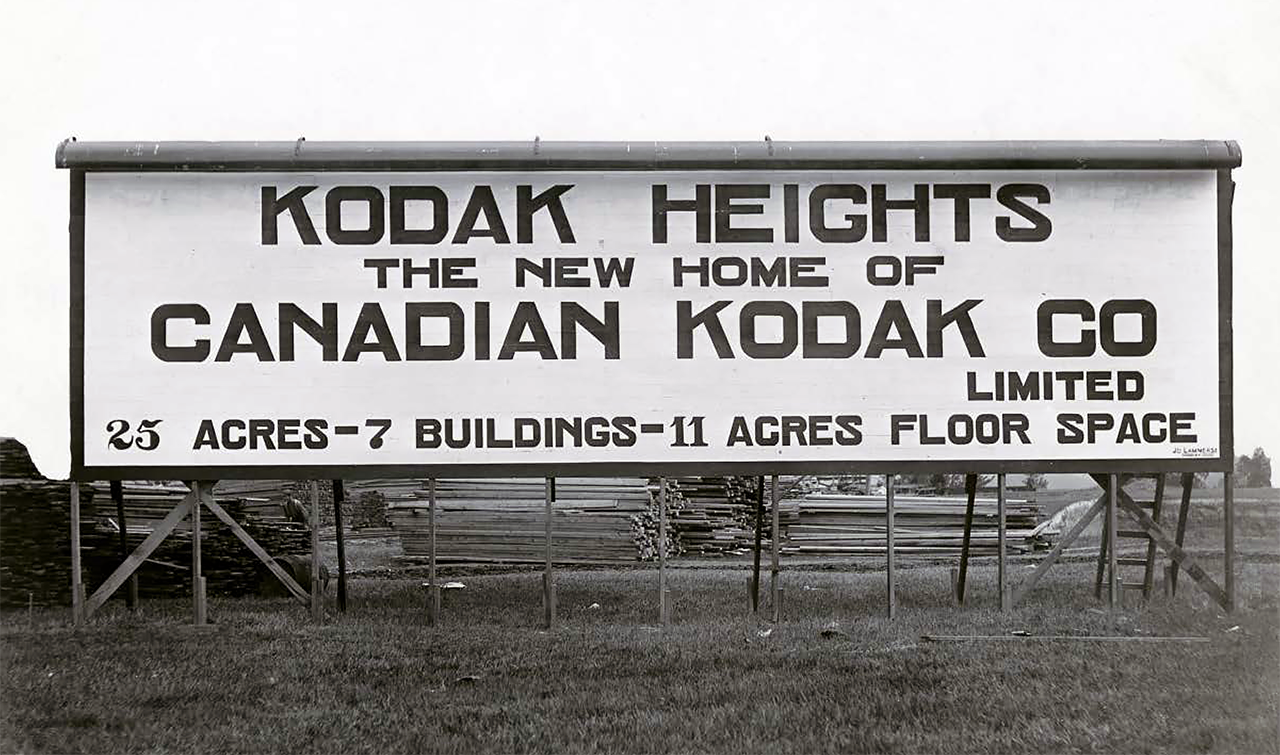
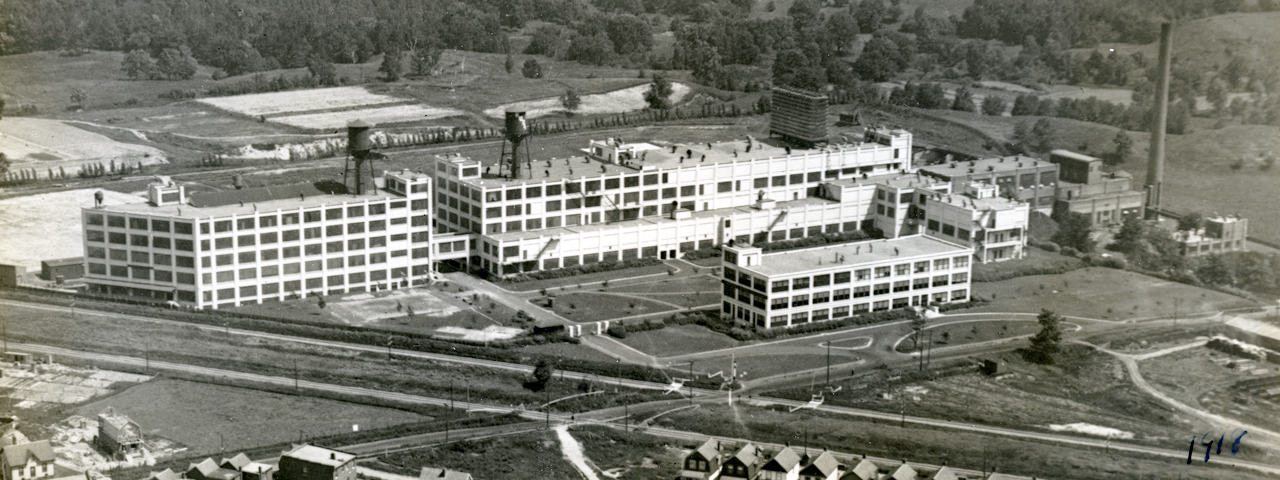
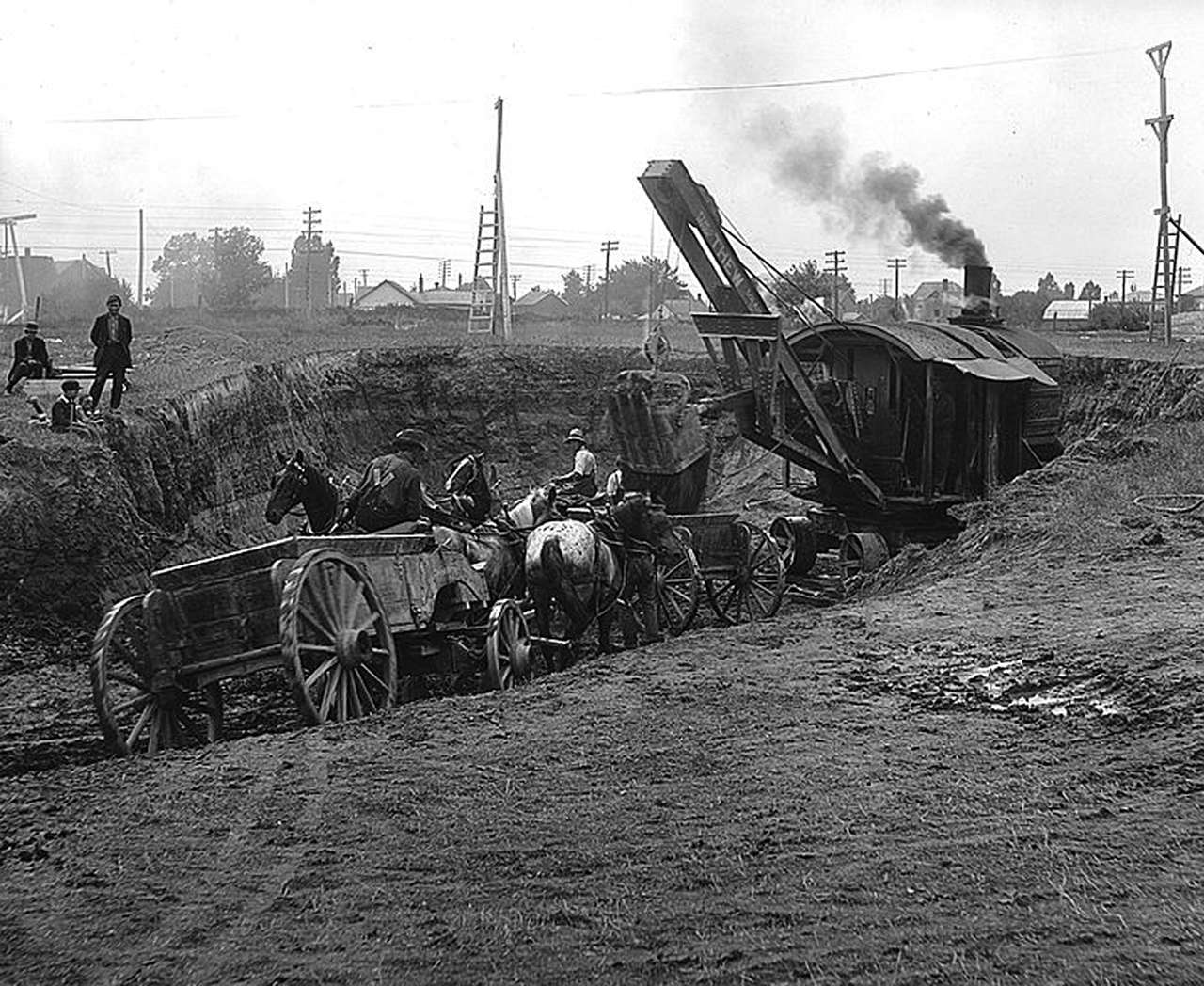
Kodak Heights under construction in 1914
The pride of Kodak Canada
By 1916, the original seven buildings of Kodak Heights were complete and the company began its move from the King Street premises – a move that would finish in 1917. Kodak Heights was a source of pride for Canadian Kodak. The facility was often opened for tours and played a significant role in the company’s marketing. The property would become Canadian Kodak’s headquarters until its closure in 2005.
It was owned and operated by the Eastman Kodak Company as a major camera manufacturing factory, peaking at 900 employees in 1925, 3,000 in the 1970s, falling to about 800 before it ceased the plant’s operations in 2006.
Over the years, the company earned a reputation for having a cooperative and supportive relationship with its employees, adopting many of the successful practices in place at Eastman Kodak in Rochester, New York.
 In an effort to engage with, and make customers of, the amateur photo market, the Eastman Kodak Company and the Canadian Kodak Company began publishing Kodakery: A Magazine for Amateur Photographers in 1913. The magazine provided tips for shooting and exposure, promoted Kodak films and cameras, and would print images sent in by adept amateurs. An emphasis was put on the continued absorption of women consumers into the photo market, with many Kodakery images featuring women wielding cameras.
In an effort to engage with, and make customers of, the amateur photo market, the Eastman Kodak Company and the Canadian Kodak Company began publishing Kodakery: A Magazine for Amateur Photographers in 1913. The magazine provided tips for shooting and exposure, promoted Kodak films and cameras, and would print images sent in by adept amateurs. An emphasis was put on the continued absorption of women consumers into the photo market, with many Kodakery images featuring women wielding cameras.
In 1921 this magazine was also made for the own Kodak Height employees. Made up of a board of editors representing different Canadian Kodak departments, this magazine served as the face of employee life at Kodak Heights. Featuring company updates from George Eastman, a safety report, employee recreation highlights and personnel news, the magazine sought to equate work life with that of a familial experience.
Kodak Heights Expansion
Kodak Heights grew steadily over its lifetime. In 1939, construction began on the Kodak employees’ building (Building 9). This 4-storey building was designed to accommodate the activities of the Recreation Club, the Department Managers’ Club, and the Kodak Heights Camera Club. It housed an auditorium, cafeteria, gymnasium, clubroom, locker room, and camera studio and had an adjacent lawn bowling green. The building opened in 1940. Expansion at Kodak Heights continued until the late 20th-century. By 1987, the property housed 18 buildings.
During the 1990s, the rise of digital media began to have a serious impact on manufacturing programs at Kodak facilities around the world, causing the Eastman Kodak Company to reduce its production of traditional print photography by one third globally.
The manufacture of digital products did not require the extensive facilities and large numbers of employees required for the sensitive chemistry of traditional photographic materials. On December 9, 2004, Kodak Canada Inc. informed its employees that manufacturing operations in traditional film products would cease entirely at Kodak Heights. June 30, 2005 would be the last day of operations at Kodak Heights.
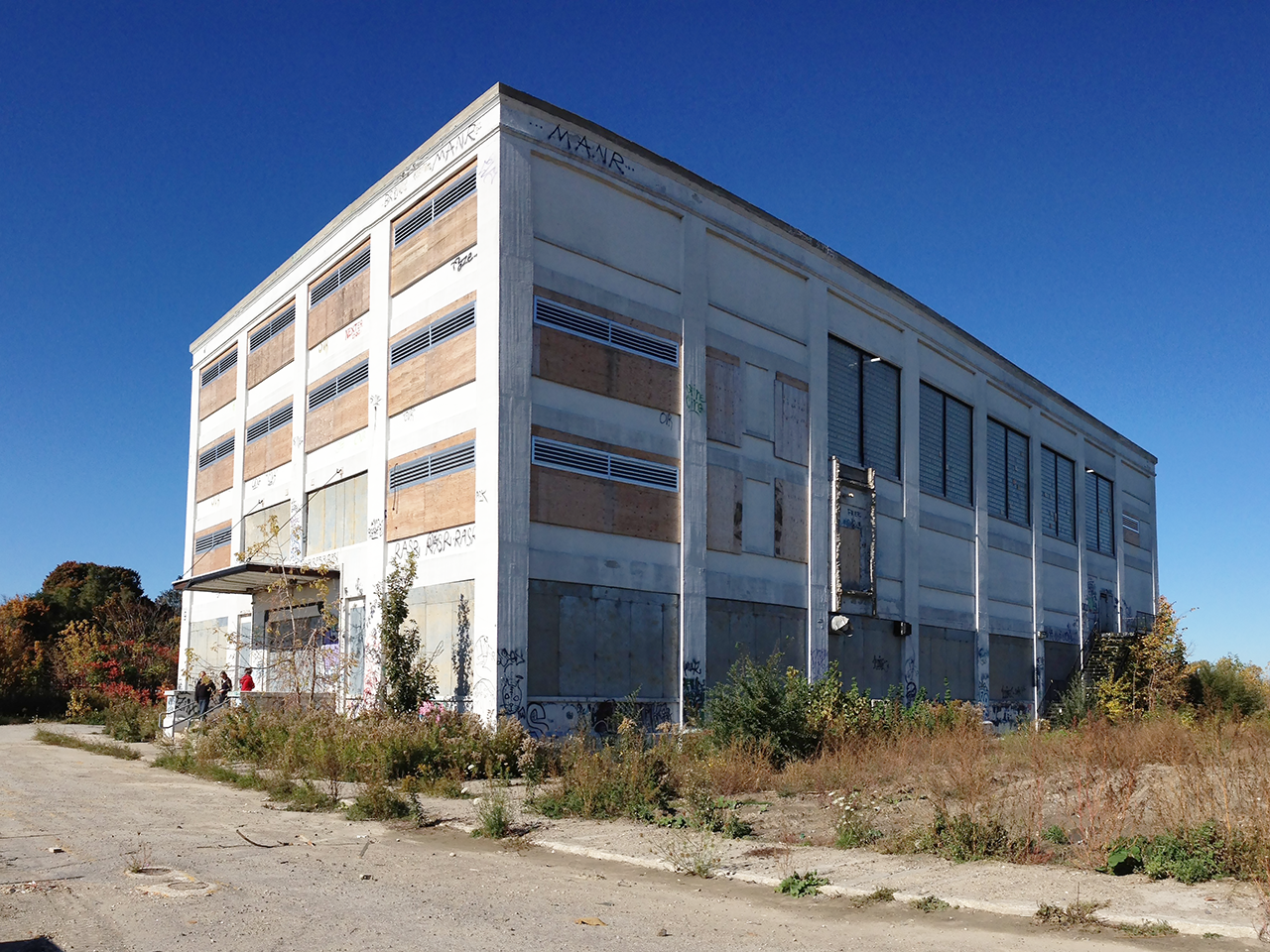
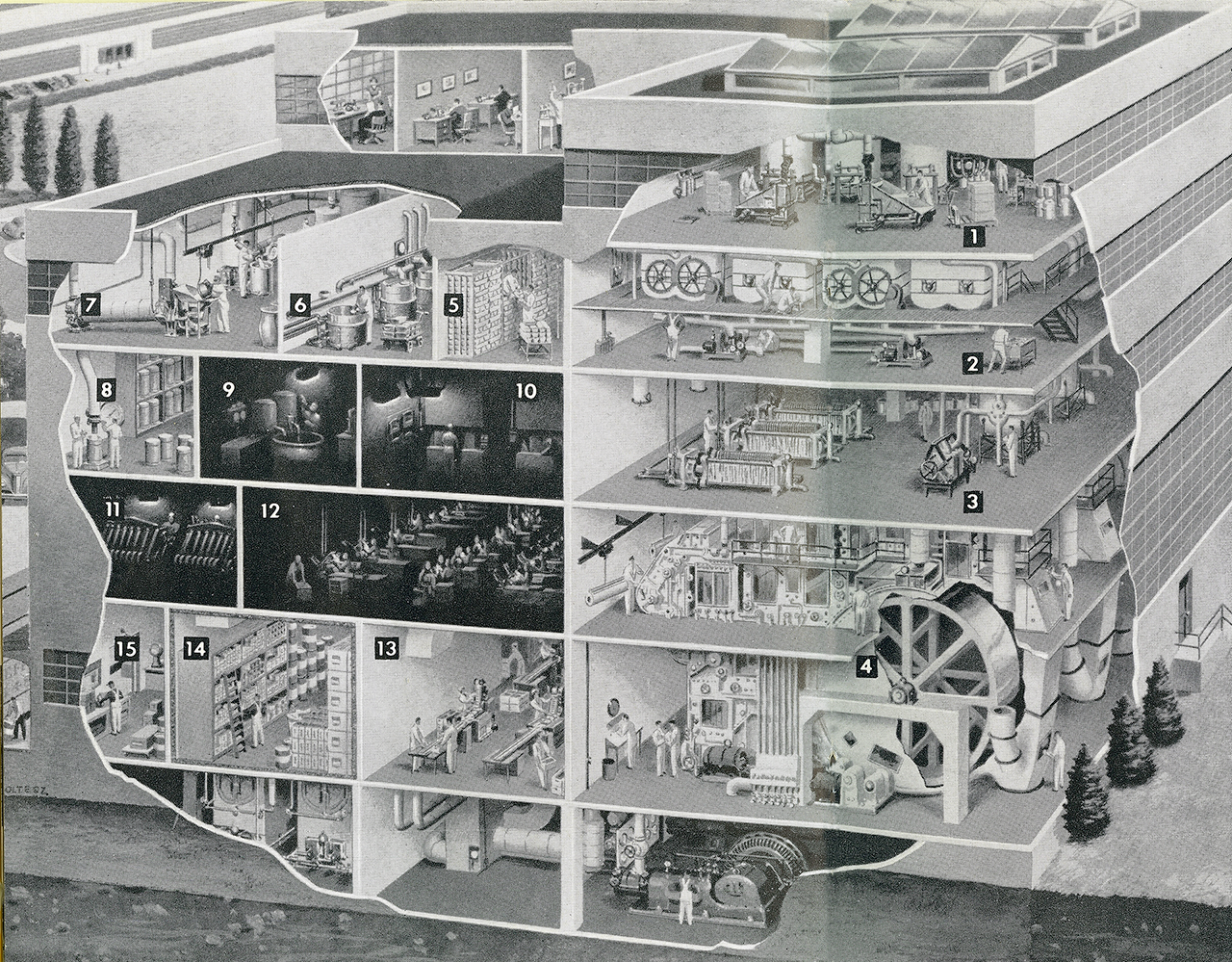
This cut-away drawing from the 1954 promotional brochure ‘Kodak in Canada’, illustrates in a simple way the operations of film manufacture.
In (1) cellulose acetate bales are broken up and fed into the mixers (2) which contain solvents. Then the dope is filtered (3) and flowed onto the roll-coating wheels (4). From these machines comes the dry film base.
Meanwhile, to make the emulsion, silver ingots (5) are dissolved in nitric acid (6)and then crystallised and dried (7). These crystals are packed into drums (8) and sent to the emulsion makers (9).
Film base is coated with the emulsion (10). The coated film is then slit (11) into proper widths and spooled (12). Steps 9 to 12 take place in darkened rooms.
Quality control inspections have been carried out at every step throughout the making of the film. Finally, the film is packaged (13), sent to air-conditioned storerooms (14) and held there until shipment (15) to dealers.
The sad end
The 19-hectare (48-acre) campus once contained over a dozen buildings, of which only Kodak Employees’ Building 9 remains standing. The building was abandoned until 2013 when the land was acquired by Metrolinx to construct the Eglinton Crosstown line. It will be the location of the Mount Dennis LRT station main entrance with a bus terminal, and the Eglinton Maintenance and Storage Facility nearby.
The company’s facility faced the same fate as many of its foreign counterparts in England, Australia and France, being completely abandoned and demolished shortly after closure in 2005. Kodak Canada Inc. still maintains a sales and support office in downtown Toronto, 3500 Eglinton Ave West,Toronto, Ontario, while camera manufacture has returned to Rochester.
FOUNDING DATE: 1927
FOUNDER: KODAK USA (Charles Morand Pathé)
COMPANY NAMES:
1897: General Company of Cinematographs, Phonographs and Films; 1927: Kodak Pathé; In 1939 the Pathé company went bankrupt; 1944: The company revived; 1968: Pathé ended cine-camera production;
COMPANY ADDRESSES:
1896: No. 1 Avenue du Polygone, Vincennes; 1906: Rue des Vignerons in Vincennes;
Kodak Pathé was Kodak’s French plant. Like the German Kodak AG which had incorporated Nagel in 1931, Kodak France incorporated the French cine-film factory of Charles Morand Pathé in 1927.
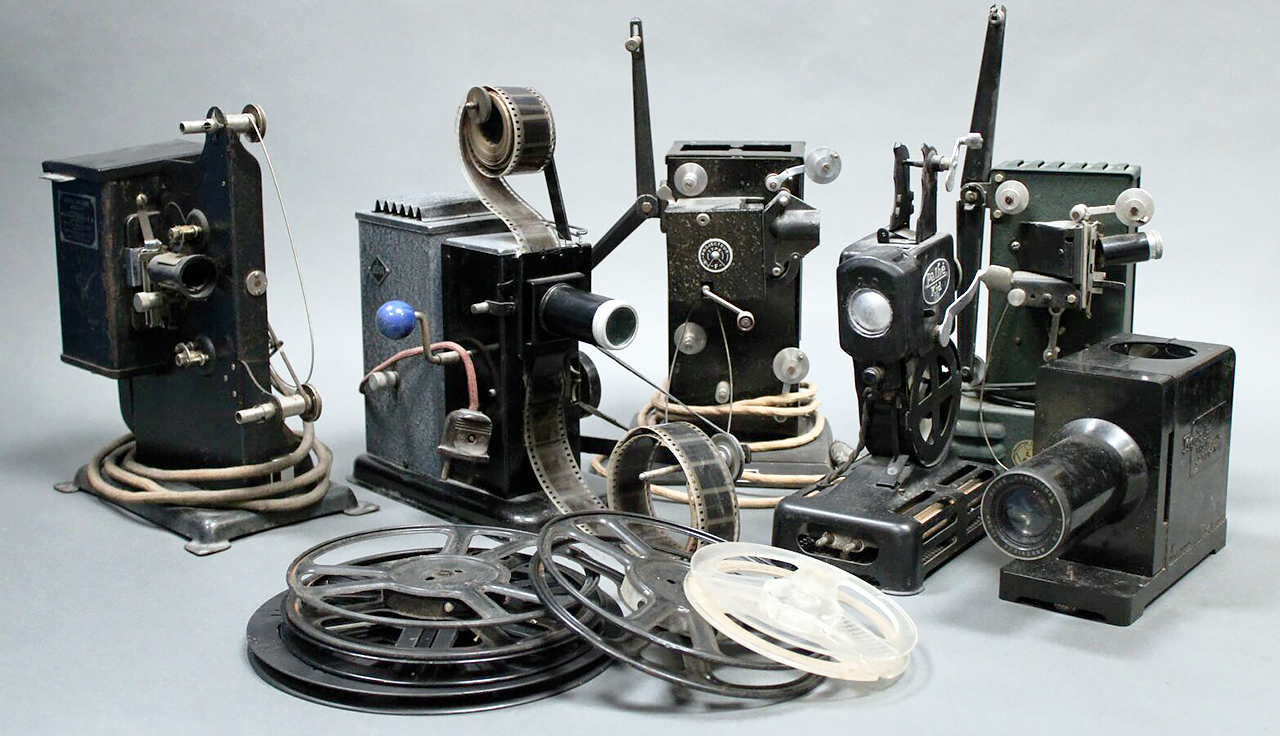
Set of six various projectors of the beginning of the 20th century: two Lapierre, two Kodak, one Pathé Kid and one Eka.
Expanding internationally
 In 1906, Charles Pathé launched into the industrial production of blank films. He had a vast factory built in rue des Vignerons in Vincennes, designed by the architect from Vincennes, Georges Malo.
In 1906, Charles Pathé launched into the industrial production of blank films. He had a vast factory built in rue des Vignerons in Vincennes, designed by the architect from Vincennes, Georges Malo.
In 1911, to be closer to the factory, he moved into a large bourgeois house, rue de la Villa (rue Franklin-Roosevelt). Charles Pathé made Vincennes during the few years preceding the First World War, the world capital of cinema. The Pathé house, a veritable city within the city, punctuated its existence for a long time with its whistles and sirens which emptied and filled the cafes to the rhythm of the teams.
Pathé, meanwhile, had begun to expand internationally, establishing branch offices in major cities around the world. During the First World War, the company moved its headquarters to the United States, where Pathé could continue its activities. By the end of the war, however, Charles Pathé had decided to rein in his growing empire, concentrating operations once again at the company’s Joinville location. At this time, the Pathé brothers decided to break up the company into its two operations, with Emile taking over the phonograph business and Charles taking the lead of the film business.
Pathé would transform the company, now known as Société Pathé Cinéma, in the next decade. A decision to abandon manufacture of motion picture apparatus caused a national uproar. At the same time, Pathé shut down its U.S. and British branches, concentrating film and film stock production in France.
 It was while observing Edison films on an individual viewing device, in 1894, that Charles Pathé revealed what he would devote himself to. It was in 1896 that he set up the workshops for printing positive films, at No. 1 Avenue du Polygone. In 1897, he founded the “General Company of Cinematographs, Phonographs and Films”. Then the company Pathé frères expanded, real studios were built rue du Bois (rue Anatole-France).
It was while observing Edison films on an individual viewing device, in 1894, that Charles Pathé revealed what he would devote himself to. It was in 1896 that he set up the workshops for printing positive films, at No. 1 Avenue du Polygone. In 1897, he founded the “General Company of Cinematographs, Phonographs and Films”. Then the company Pathé frères expanded, real studios were built rue du Bois (rue Anatole-France).
By the turn of the 20th century, Pathé provided not only the projectors, cameras, and motion pictures, but also its own raw film stock, breaking the monopoly then held by Eastman Kodak. In 1906 the company established its film laboratories in Joinville.
The company also was making a name worldwide for its motion pictures – in particular, a Pathé innovation, that of filming current events. The Pathé Journal, the first newsreel, would long remain a fixture in the world’s cinema programs. Many of Pathé’s actors also would become world-renowned stars. Meanwhile, the company had introduced the first films in color-hand-painted frame by frame at the Pathé laboratories.
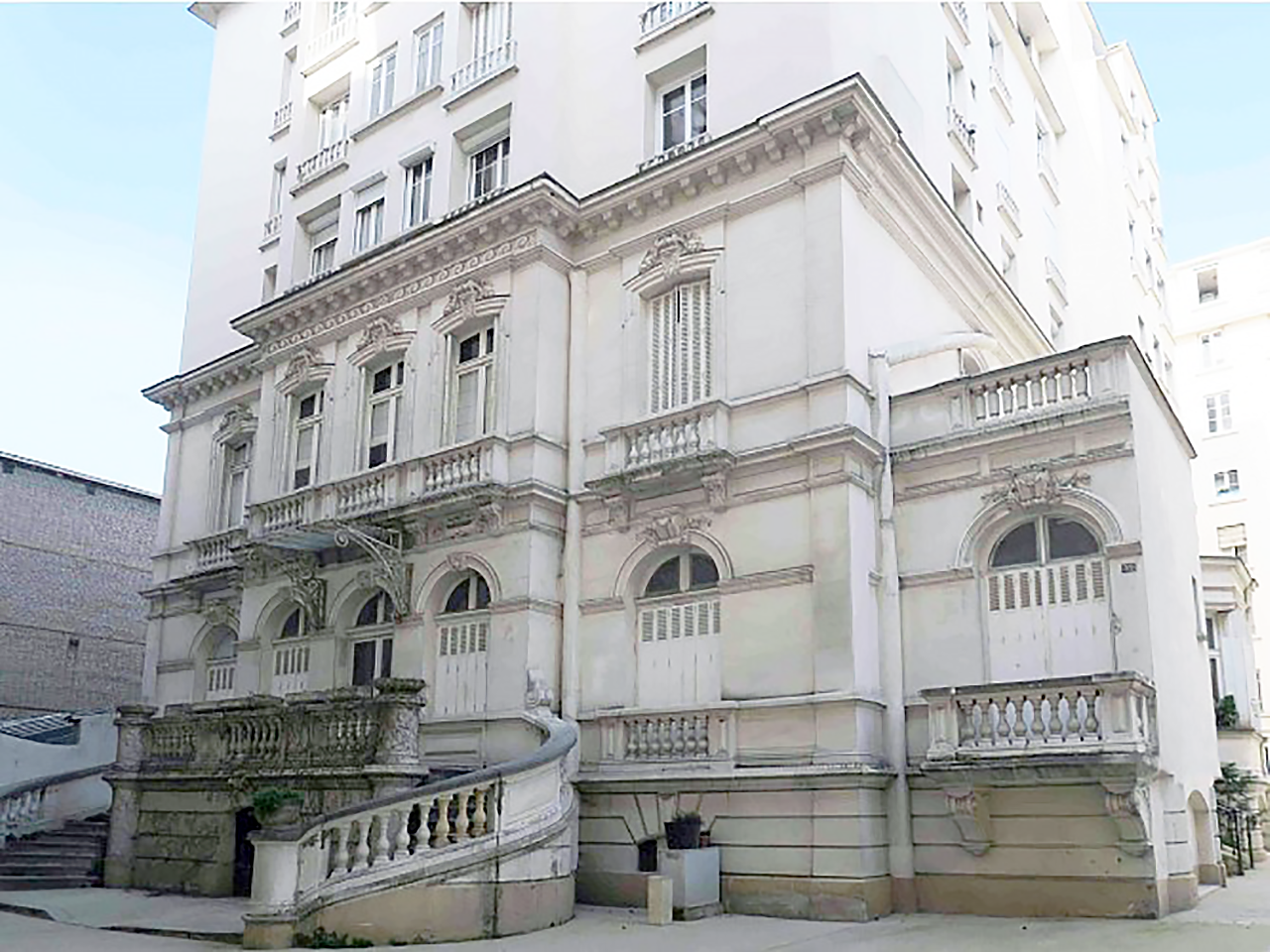
The bourgeois villa of Charles Pathé in Vincennes.
The rivals go together
Pathé was in financial troubles with his successful French cinematographic company Pathé-Frères which made raw cine-film, phonographs, projectors, cine-cameras, records, and had a huge movie production which exported to the USA until Hollywood copied the industrial film production. Pathé had broken Kodak’s raw film production monopoly, and it owned rights on some patents of Lumière. The company’s 28mm cinema film wasn’t as flammable as 35mm nitrate-based film.
In 1927, after more than two decades of an often bitter rivalry, Pathé and Eastman Kodak agreed to merge their film stock manufacturing activities to form Kodak-Pathé FAS.
This unit was absorbed formally as a subsidiary to the Eastman Kodak Company in 1931. By then, Pathé’s cinema operations already had been taken by Bernard Nathan, who had succeeded in buying up a majority of Pathé’s shares.
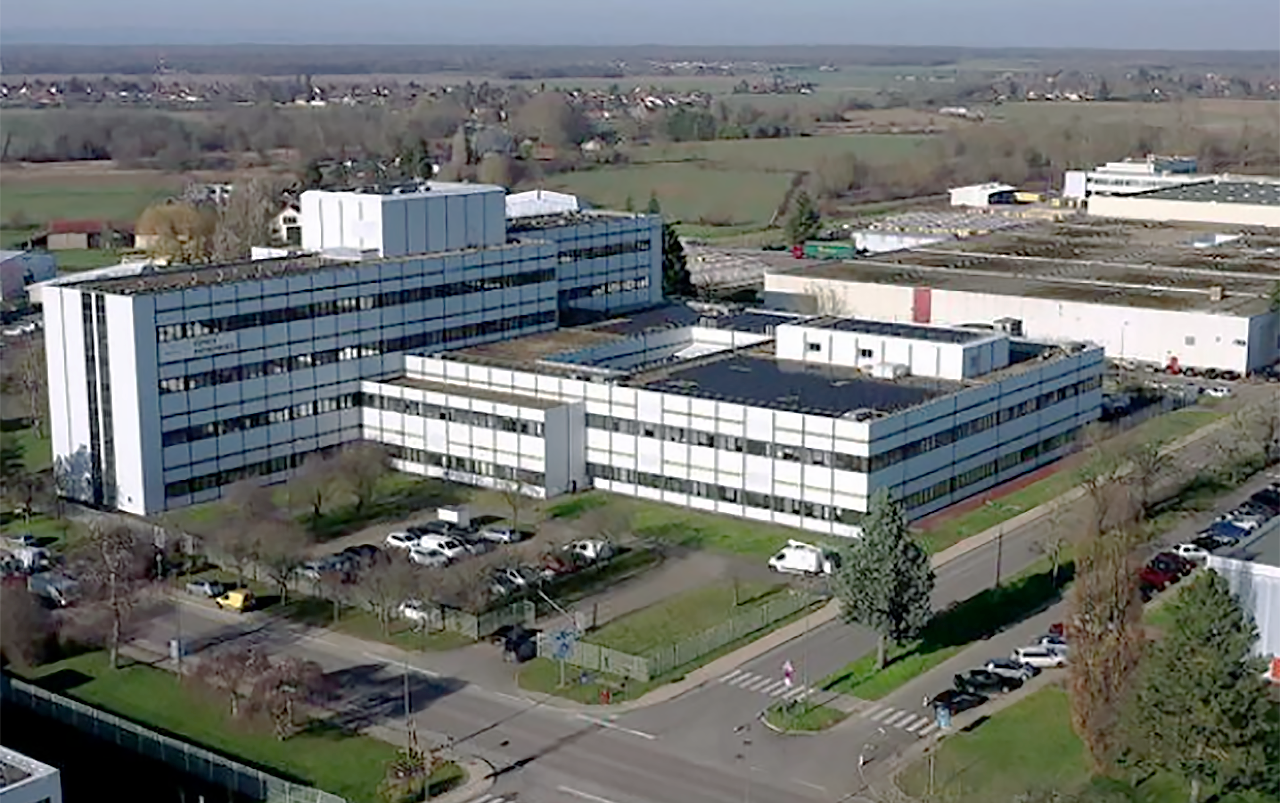
On the Kodak site in Chalon-sur-Saône, here are the remaining buildings, the industrial park, Saoneor.
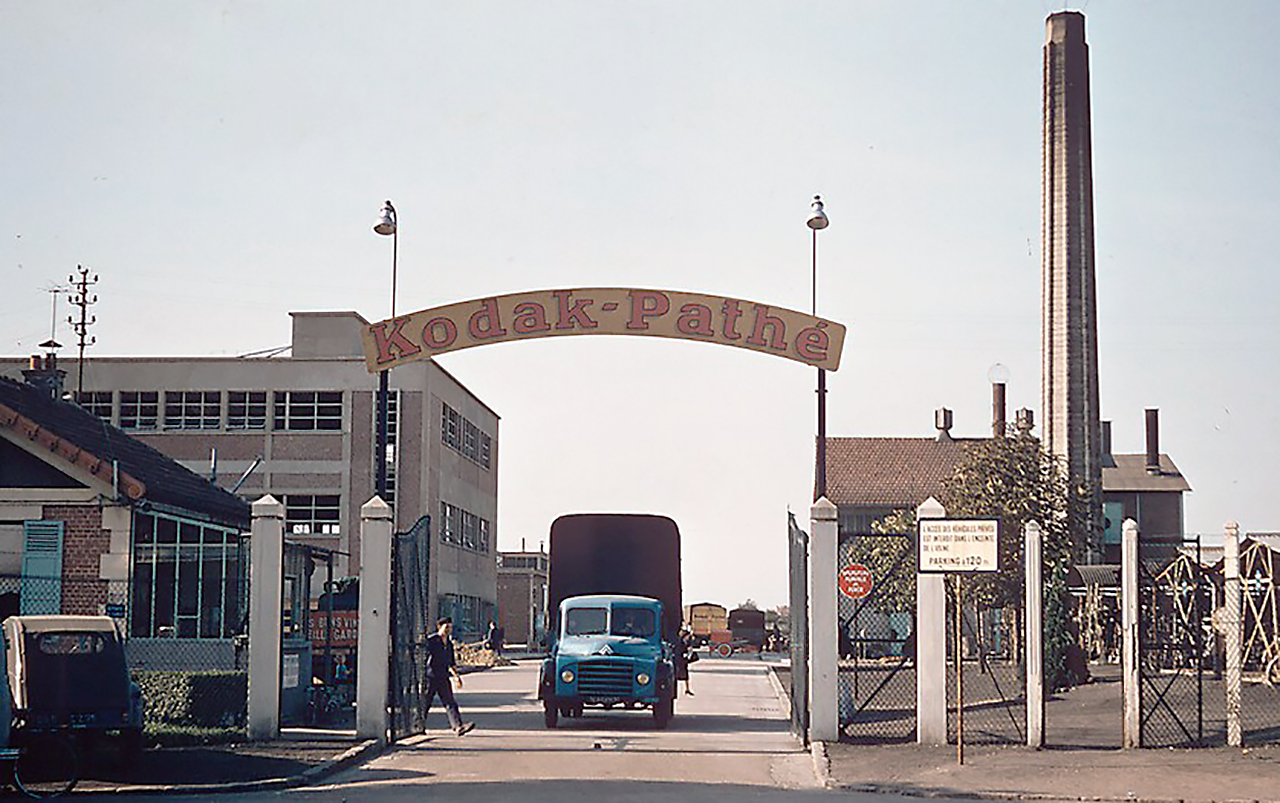
The gate of the Kodak Pathé-Plant.
Under Bernard Nathan wings
 Charles Pathé remained on the company’s board; one year later, in 1930, however, after disagreements with Nathan over the company’s direction, Pathé stepped down from the board, ending his association with the company he had founded. Charles Pathé would die in 1957.
Charles Pathé remained on the company’s board; one year later, in 1930, however, after disagreements with Nathan over the company’s direction, Pathé stepped down from the board, ending his association with the company he had founded. Charles Pathé would die in 1957.
In 1939 the Pathé company went bankrupt after Nathans attempt to invest in German movie theatres, and in 1941, under German occupation, he was sued for having crashed the company. Nathan was murdered in Auschwitz in 1942.
Charles Pathé, himself an economical hazarder, had more luck: his company was revived in 1944 with him as honorary chairman. In 1946 engineer Marcel Beaulieu left Pathé to become entrepreneur himself, making the finest amateur cine cameras. Beaulieu became in the movie sector what Leitz was in the still camera sector. Pathé ended cine-camera production in 1968.
Before the European Union was established France had severe laws to limit imports. Thus many Kodak Pathé cameras got lenses of French lens makers like Angénieux who made some versions of the Kodak Anastigmat for several Kodak-Pathé cameras.
Vincennes
Since the creation of the Pathé Frères company by Charles Pathé in 1896, at the origin of the French film industry, through the Kodak-Pathé merger in 1927, until the closing of the factory in December 1986, the history of the cinema business is intimately linked to that of the city.
Emile and Charles Pathé, who settled in Vincennes at the end of the 19th century, gradually left their mark on the city.
Between the development of the first studio in 1904, rue du Bois (today Anatole-France) and the demolition of the chimney of the Kodak-Pathé factory in rue de Vignerons where the high chimney was located, which was the complement of a thermal power station in August 1987.
It was a factory whose first buildings date back to 1906, the life of the company covered almost the entire century.
Filming studios, production, development and editing laboratories, workshops for making blank films… all its buildings, considered at the beginning to be gigantic for the time, extended over 9 hectares and employed up to 3,300 people.
Charles Pathé is buried in the old cemetery of Vincennes. On February 4, 1958, the city council decided to attribute the name of the industrialist to a future route of Operation K. This is the street where the Daniel-Sorano space is located today.
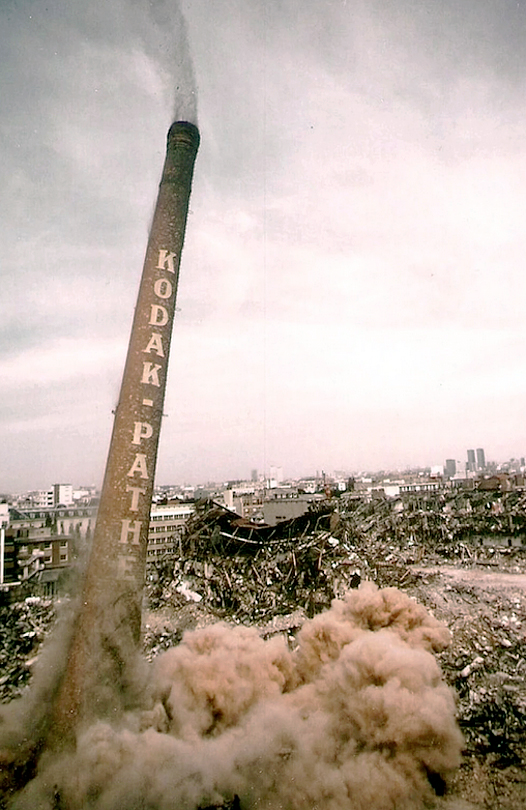
Demolition of the chimney of the Kodak-Pathé factory in Vincennes.

Vincennes honors its most famous resident with its own street name.
cameras produced in Vincennes
- A modèle 10
- A modèle 11
- modèle B11
- 6,3 modèle 20
- 6,3 modèle 21
- 4,5 modèle 30
- 4,5 Spécial modèle 31
- 4,5 modèle 32
- 4,5 modèle 33
- 4,5 modèle 34
- 4,5 modèle 36
- 4,5 modèle 37
- 4,5 modèle B31
- 3,5 modèle 40
- 3,5 modèle 42
- Brownie Flash
RETINETTE
- Retinette 012
- Retinette 017
- Retinette F 022
PONY
- Pony 135
- Pony Flash
- Brownie Starflash
- Brownie Starlet
- Brownie Starlet II
- Startech
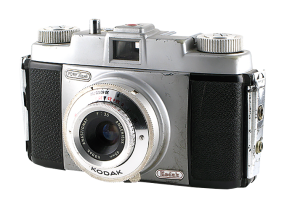
Pony Flash.
FOUNDER: KODAK
COMPANY NAMES:
1896: Sales Company Eastman Kodak GmbH; 1927: Kodak AG, Filmfabrik Köpenick; 1931: Kodak AG Berlin; 1949: Kodak AG Stuttgart; 1956: Kodak Filmfabrik Köpenick was renamed VEB Fotochemische Werke Köpenick (FCW); 1970: VEB Fotochemische Werke Berlin was incorporated into the ORWO photochemical state-combine (formerly AGFA); 1990: Kodak AG and VEB Fotochemische Werke Köpenick was converted into a limited liability company (Fotochemische Werke GmbH); 2010: Canadian investment company Onex Corporation completely stopped production and sealed the end of German Kodak history.
COMPANY ADDRESSES:
1896: Corner of Friedrichstrasse/Unter den Linden Berlin; 1927: 1931: Ulmer Strasse, Stuttgart-Wangen; 1949: new HQ in Stuttgart-Wangen;
No name has been more closely tied to pictures than Kodak. The keys to George Eastman’s success in making photography a popular leisure-time activity for the masses were his development of roll film and the inexpensive box camera. Throughout his life, Eastman pursued his goal to make photography “as convenient as the pencil.” Not surprisingly, the company he founded has been at the centre of most milestones in photography and imaging ever since.
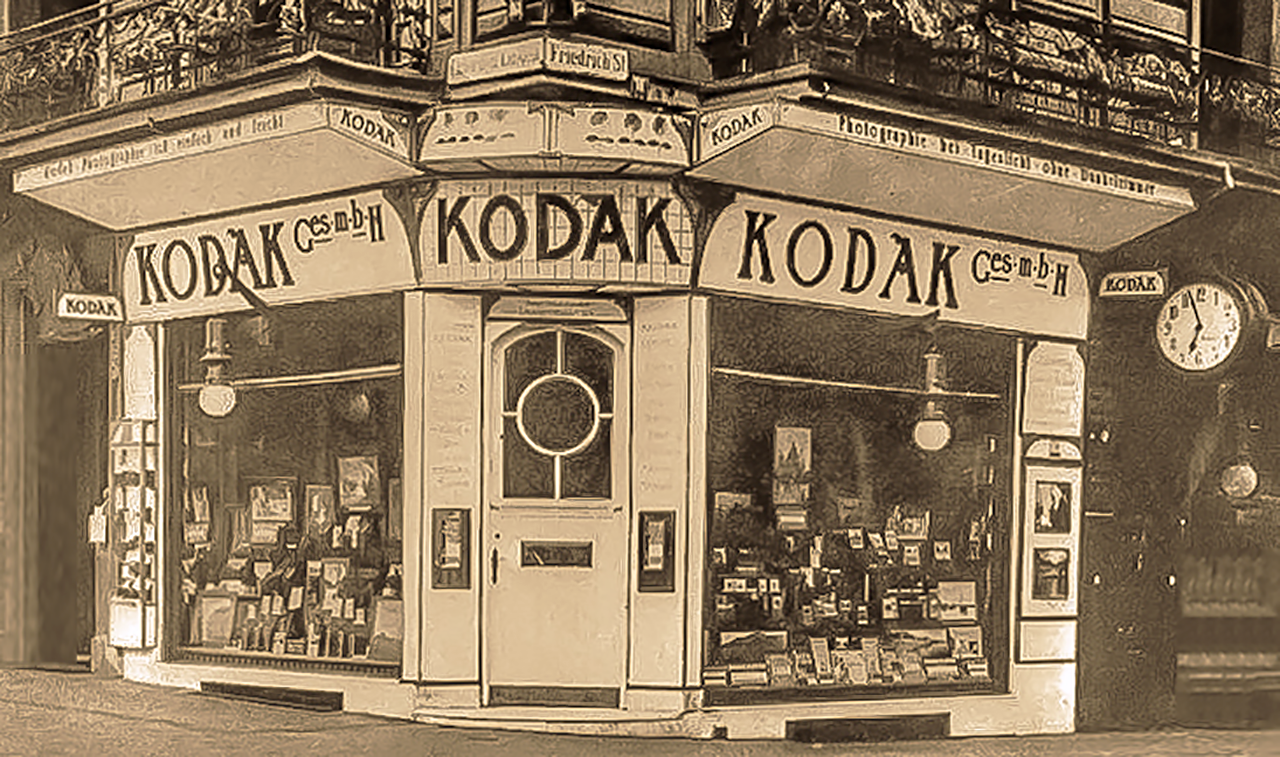
Kodak’s office, shop and distribution center in the corner of Friedrichstrasse / Unter den Linden in Berlin, Germany 1912. Until 1910 the block housed the famous Cafe Bauer with the first electric lighting in Berlin
Birth of the Retina
Above all, August Nagel saw an opportunity to implement some of his plans, since he had no financial worries and he agreed to a takeover on the condition that he could continue to have a free hand in terms of development and production.
And with that he was able to get his little brother Paul to work on the project of the inexpensive but high-quality 35mm camera. The result is the Retina that should really gain world recognition. The cameras made in Germany therefore initially bore the suffix Dr. Nagel – Stuttgart plant.
So Kodak charged Dr Nagel with the task of creating a 35mm camera that would challenge the 35mm models that other German companies were offering, but at a significantly lower price.
 Kodak A.G. Dr. Nagel Werk developed its own line of products including the Kodak Retina Camera. The first Retina camera (Type 117), a bellows folder with reliable cross-strut supports, was introduced in the summer of 1934 along with a new 35mm film Daylight Loading Cartridge (DLC). Dr. August Nagel held the German patent for this new 35mm DLC.
Kodak A.G. Dr. Nagel Werk developed its own line of products including the Kodak Retina Camera. The first Retina camera (Type 117), a bellows folder with reliable cross-strut supports, was introduced in the summer of 1934 along with a new 35mm film Daylight Loading Cartridge (DLC). Dr. August Nagel held the German patent for this new 35mm DLC.
This 35mm Daylight Loading Cartridge was designed for the Kodak Retina camera and was also designed to retrofit into existing Leica and Contax cameras.
The original Retina had a rigid, direct viewfinder. A second Retina was added with a rangefinder and designs in this basic form persisted well into the 1960s.
Kodak itself had been represented in Berlin by a distribution company named Eastman Kodak GmbH since 1896. In 1927 Kodak took over the film manufacturer Glanzfilm AG in Berlin-Köpenick and began producing films in Germany in 1927.
But Kodak USA wanted to compete on equal terms with the German manufactures of precision cameras, and it recognized the emergence of miniature photography as a new front.
It had an image problem, however. Kodaks were seen as family cameras and the manufacturers of German precision equipment were leading the assault. Leicas and Contaxes were well beyond Kodak’s traditional pricing, however, and the opportunity to undercut the pricing of the competition fit well into the Kodak marketing strategy of making photography accessible to mass markets.
Later, in the 20th century at the end of 1931, the German Kodak branch became listed at the German stock market, and it bought the independent camera maker Nagel in Stuttgart-Wangen, and its founder Dr. August Nagel became general director of the company when it was bought by Eastman Kodak Company on December 1, 1931.
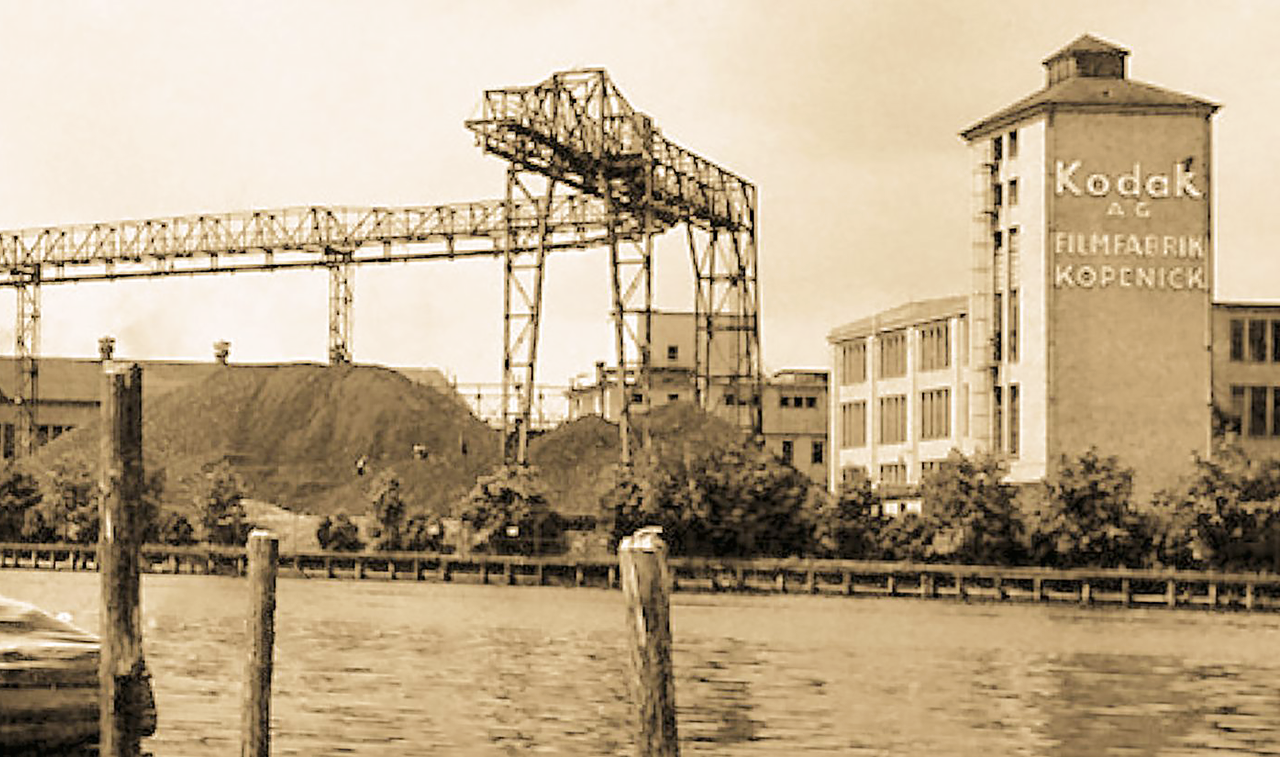
The Kodak factory on the banks of the river Spree in southeast Berlin, opposite the old town of Köpenick in the 30s of the previous century.
The Nagel-Werke factory adopted folder designs from Rochester, some of which differed little from their American counterparts. The international Kodak organization, realized however the cachet that precision German designs could offer to advanced amateur photographers and responded with a series of roll film designs built in Stuttgart and variously marketed on the Continent, in England and the U.S.
Just to name a few: the Duo half-frame 16 on 620 horizontal designs were offered with and without a rangefinder. The model with the folding finder is only slightly larger and heavier than the contemporary Retina, yet makes an image with over twice the area. This model was available in both Europe and the U. S. with Kodak Anastigmats and in Europe only with Xenars or Tessars, with the slowest models using front-cell focusing. Kodak advertised these at least as late as May 1938. The Suprema was a 12 on 620 horizontal folder with a rigid viewfinder of similar design to the Duo.
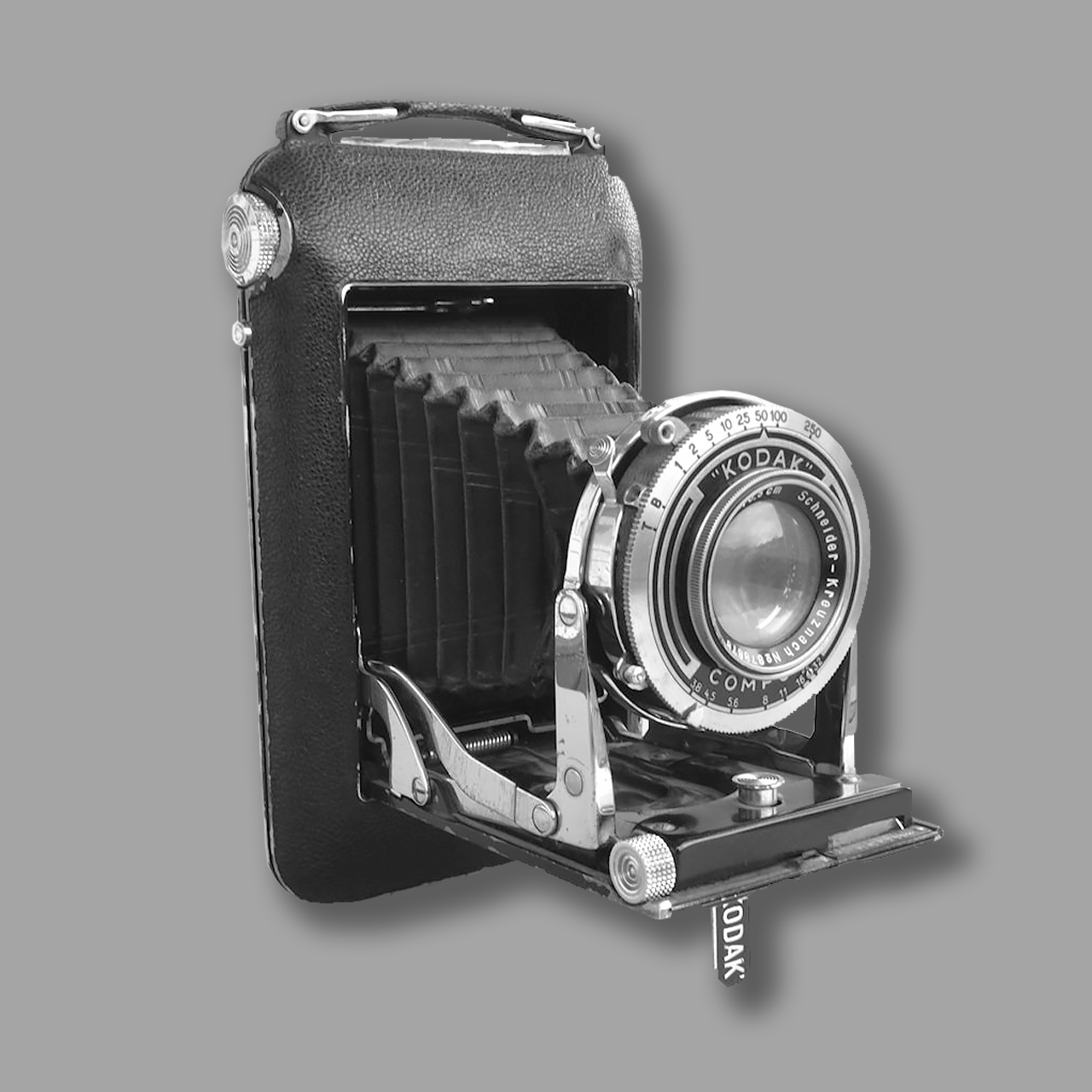
The Kodak Regent bellows camera was manufactured by Kodak AG between 1935 and 1937. Two different negative formats are available. With 6 x 9 cm 8 pictures could be taken, with 6 x 4.5 16 pictures could be taken. Kodak 620 roll film was used for this.
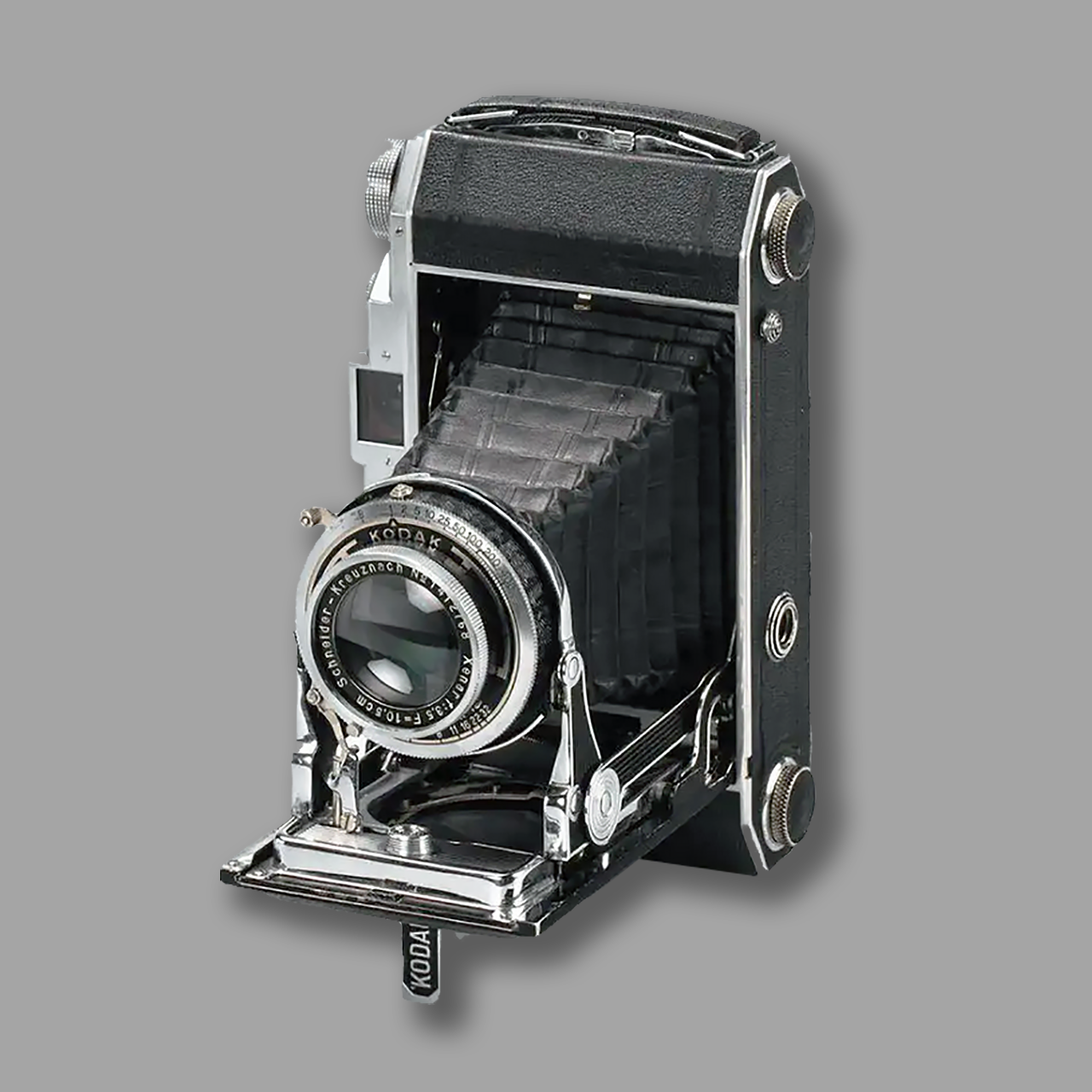
The Kodak Duo 620 was a half frame medium format film similar to the large range of ‘Semi’ cameras from Japan but fairly rare in Europe. As the name suggests, it used 620 film. The Duo 620 was introduced around 1934, around the same time as the first Retina. In 1939 a rangefinder version with metal top housing was introduced, but production stopped with WWII and were never resumed after the war, so this last variant was built in only small numbers.
A worthy competitor
The elegant Regent camera was not only unique to Stuttgart, but was unique within Stuttgart. While most Nagel models had bodies with angled ends, unlike immediate pre-war Rochester folder models that had migrated to rounded ends, the Regent was streamlined and, turtle-like, retracted all of its appendages into its smooth shell when not active.
The very compact Deco design included an ingenuous, but separate coupled rangefinder smoothly tucked into its rounded contours and an equally ingenious and practical popup viewfinder.
The Regent II, which returned to the angular body profile, had a coupled, superimposed rangefinder combined with the viewfinder. These top-end Stuttgart folders were offered with f/4.5 and f/3.5 Schneider Xenars or an f/4.5 Zeiss Tessar; the Schneiders were uncoated while the Tessar may have been hardcoated, since Zeiss began coating in 1937.
The Nagel models competed in price and quality with offerings from Zeiss, Voigtländer, Agfa, and Ensign in England. Both cameras were produced from 1935-39. Both models made 6×9 images and could be adjusted to make 6×9 half frames (6×4.5).
Kodak AG continued the Retina series after WW II, improving on its rangefinder 35mm designs by redesigned finders, exchangeable lens elements altering focal length and exposure meters.
August Nagel died in 1943 as the “Reichswirtschaftsführer” of the forced administration of Kodak AG and did not experience the downfall of his company. His son Helmut Nagel followed in his footsteps, under which Kodak AG Stuttgart developed into one of the leading manufacturers of 35 mm cameras worldwide. Kodak AG boomed and spread to additional buildings in Wangen and other locations.
When SLRs emerged as the market choice in the mid-1960s, Retinas followed suit, but German production could not match the value created by Japanese camera technology, and Stuttgart offerings fell victim to the same economic and technological forces that had doomed Kodak’s American production.
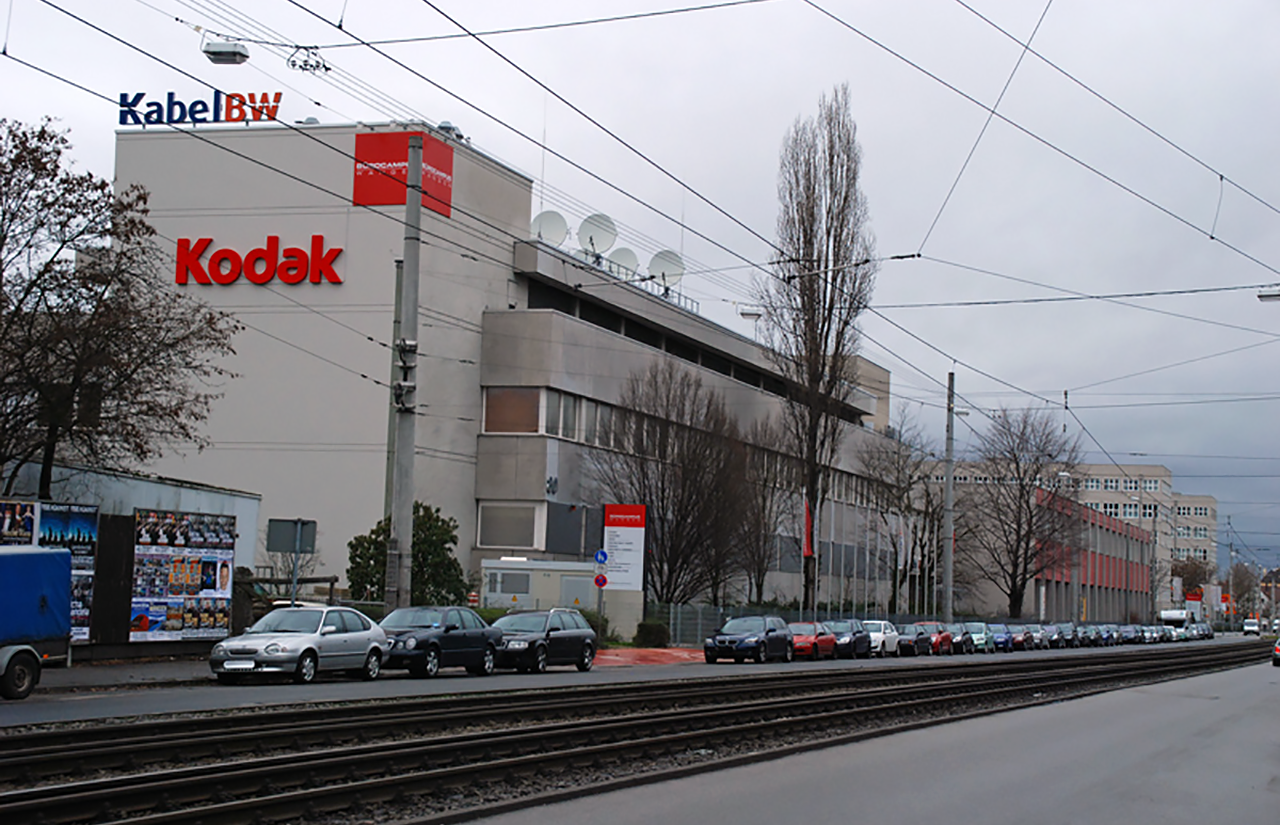
Many new companies have settled on the former Kodak site on the Ulmer Strasse, today’s office campus in Stuttgart-Wangen. The Wangen office campus is located in the south-east of Stuttgart.
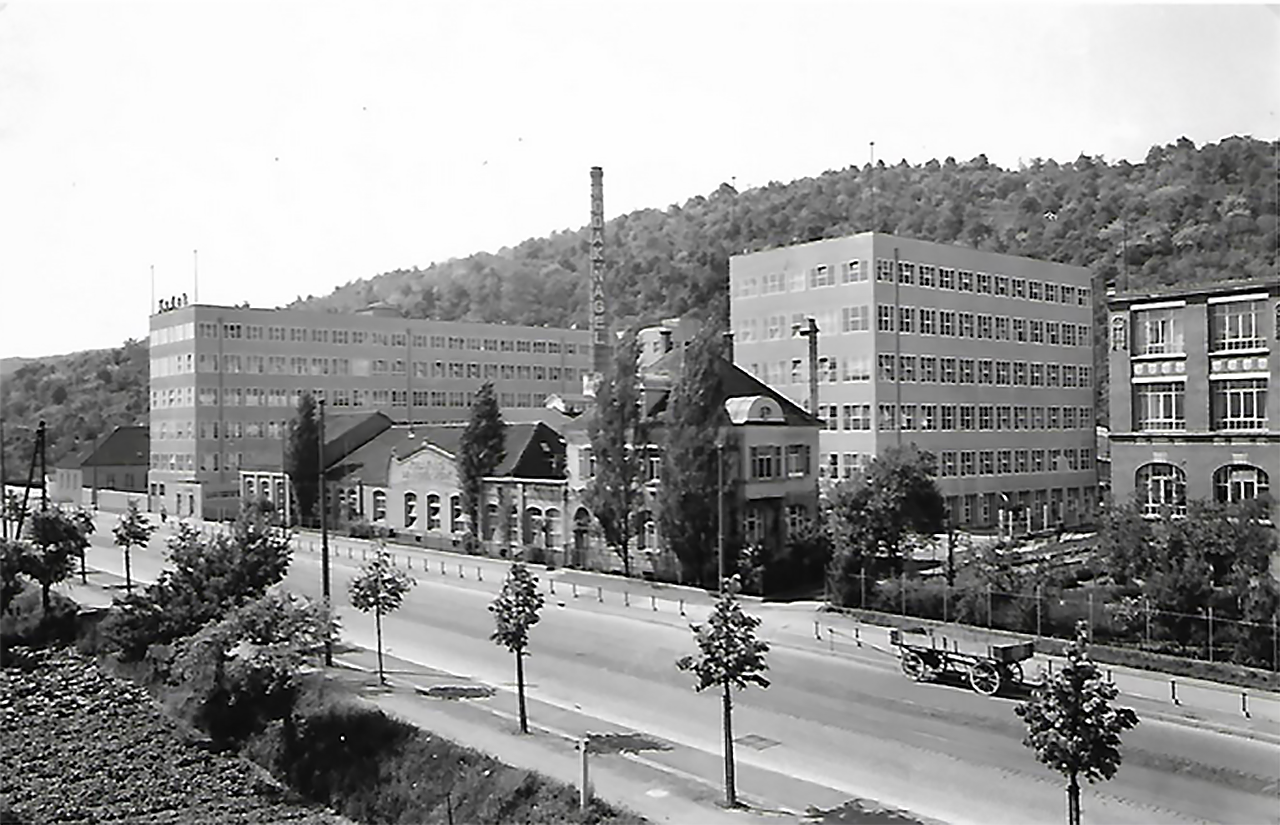
The August-Nagel-Werke in Stuttgart-Wangen in 1942.
 In an anomalous marketing move, the English division in 1958 introduced the Kodak 66, a modernized, plasticized Suprema with a front-cell focusing f/6.3 or f/4.5 Anaston–perhaps the last folder that Kodak offered.
In an anomalous marketing move, the English division in 1958 introduced the Kodak 66, a modernized, plasticized Suprema with a front-cell focusing f/6.3 or f/4.5 Anaston–perhaps the last folder that Kodak offered.
However, in the successor ship of Helmut Nagel, the former independence was largely lost and the program of the parent company was increasingly taken over.
In 1992 the Berlin plant of the German Kodak AG in Stuttgart was transferred back to the formerly expropriated owners. Kodak integrated the factory and production into its healthcare division and has been producing X-ray films under the “X-Ray Retina” brand in Berlin since 1994.
In 2007 Kodak sold the healthcare division to the Canadian investment company Onex Corporation. This completely stopped production in 2010 and thus sealed the end of German Kodak history.
And today only the buildings on Ulmer Straße are a reminder of the great past. The former Kodak site has now become the “Stuttgart-Wangen office campus” with around 30 companies and more than 1,000 employees.
The Kodak AG, Filmfabrik Köpenick expanded its product range significantly and produced all common photographic B/W films and X-ray films as well as chemical materials for their processing.
After the Nazis came to power in 1933 in Germany, the climate became increasingly difficult for foreign producers and their products. In order not to lose market share, Kodak served the new nationalist, racial movement as early as 1934 with an advertising campaign: “German the camera – German the film”.
On June 13, 1935, Kodak AG presented the Kodak Color process, which had previously been kept strictly secret, in its factory in Köpenick, which was being worked on in competition with Agfa. All these attempts by Kodak AG to survive in Hitler’s Germany failed, with the confiscation of all Kodak plants in Germany. These were placed under compulsory administration by the Nazi Reich Ministry of Economics (defined as enemy assets).
Towards the end of World War II, the Berlin plant was badly damaged by bombs in 1943, but not completely destroyed.
In 1945 after the end of the war, the Soviet Army confiscated the Kodak factory in Berlin, which was now in the Soviet sector of the divided city of Berlin. The Soviet occupiers dismantled large parts of the plant and brought a quarter of the machines and devices to the Soviet Union as reparations. Just one year later, the factory was restored to the point where it was now possible to produce black and white photo paper.
In 1949 the German Democratic Republic was founded and Germany was divided into East and West. Kodak relocated its headquarters to the West in Stuttgart and had to give up its Berlin-Köpenick plant, as it was now inaccessible in the newly founded German Democratic Republic (GDR).
Then, the government of the GDR declared the Kodak AG in Berlin-Köpenick a state-owned company. The production facilities were restored to the point where they could produce black and white films and X-ray films. Even the brand name “Kodak” was still used.
This led to the curiosity of two identical Kodak branded films from different manufacturers that existed in parallel. Kodak no longer had any influence on the production, quality, marketing and distribution of the films made in the GDR.
It was not until 1956 that the Kodak Filmfabrik Köpenick was renamed VEB Fotochemische Werke Köpenick (FCW), that the Kodak brand name disappeared in the GDR.
B/W films, X-ray films, photo paper and also chemicals were produced. The films were given names such as DEKOPAN. The first four letters are reminiscent of the old brand name Kodak. Deko stands for DEutsche KOdak = German Kodak.
In 1970 VEB Fotochemische Werke Köpenick was incorporated into the ORWO photochemical state-combine (formerly AGFA) in Bitterfeld-Wolfen and the production of photographic films in Berlin was discontinued. To this end, the production of technical and medical X-ray films is being relocated from Bitterfeld-Wolfen to Berlin.
In 1990, the year of German reunification and thus the end of the GDR, also ushered in the slow death of film production in Berlin. The former Kodak AG and later VEB Fotochemische Werke Köpenick was converted into a limited liability company (Fotochemische Werke GmbH) and continued to produce X-ray films.
The owner of the new GmbH was the German Treuhand, an authority that administered and sold the former states property or transferred it back to the formerly expropriated owners.
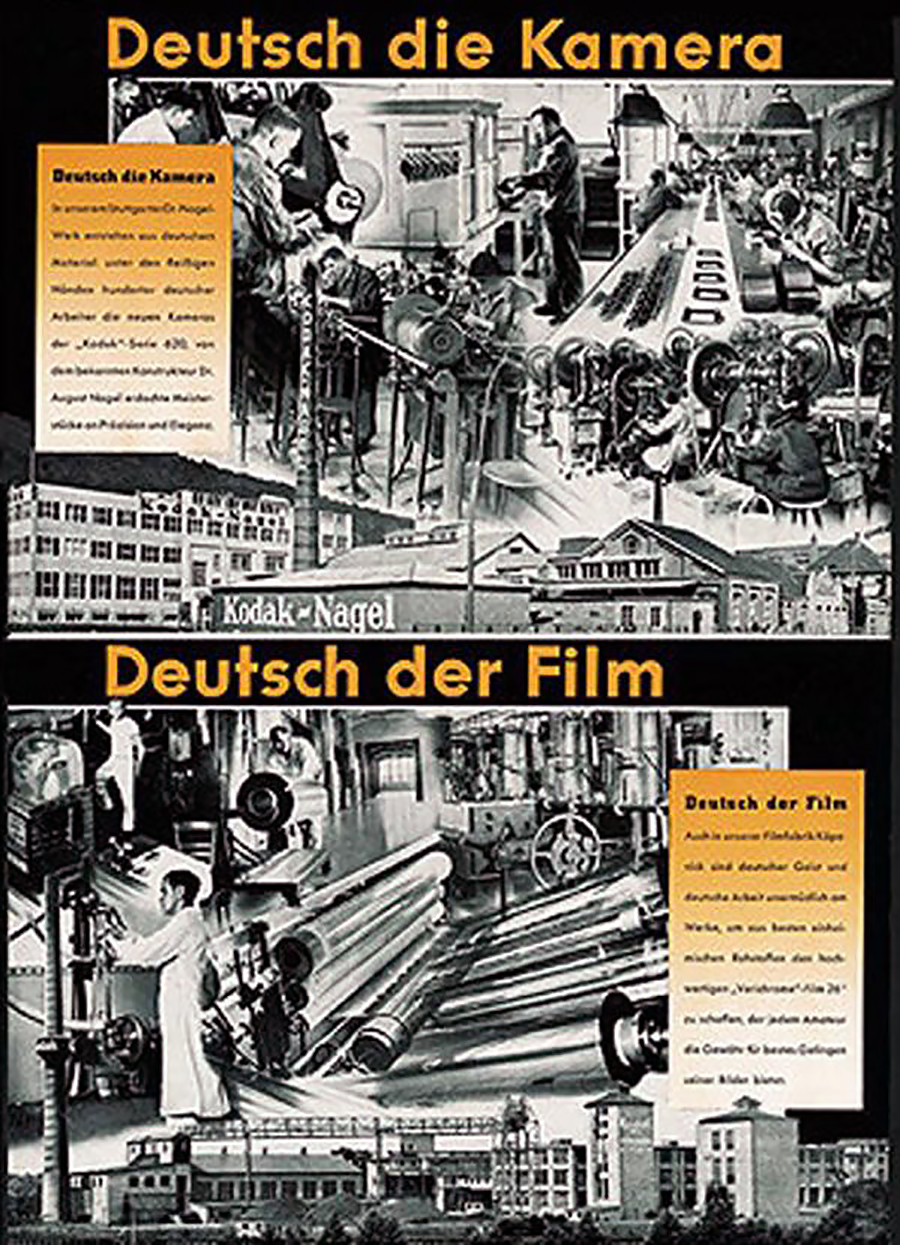
This Nazi-era Kodak poster reinforced the idea the film was made locally
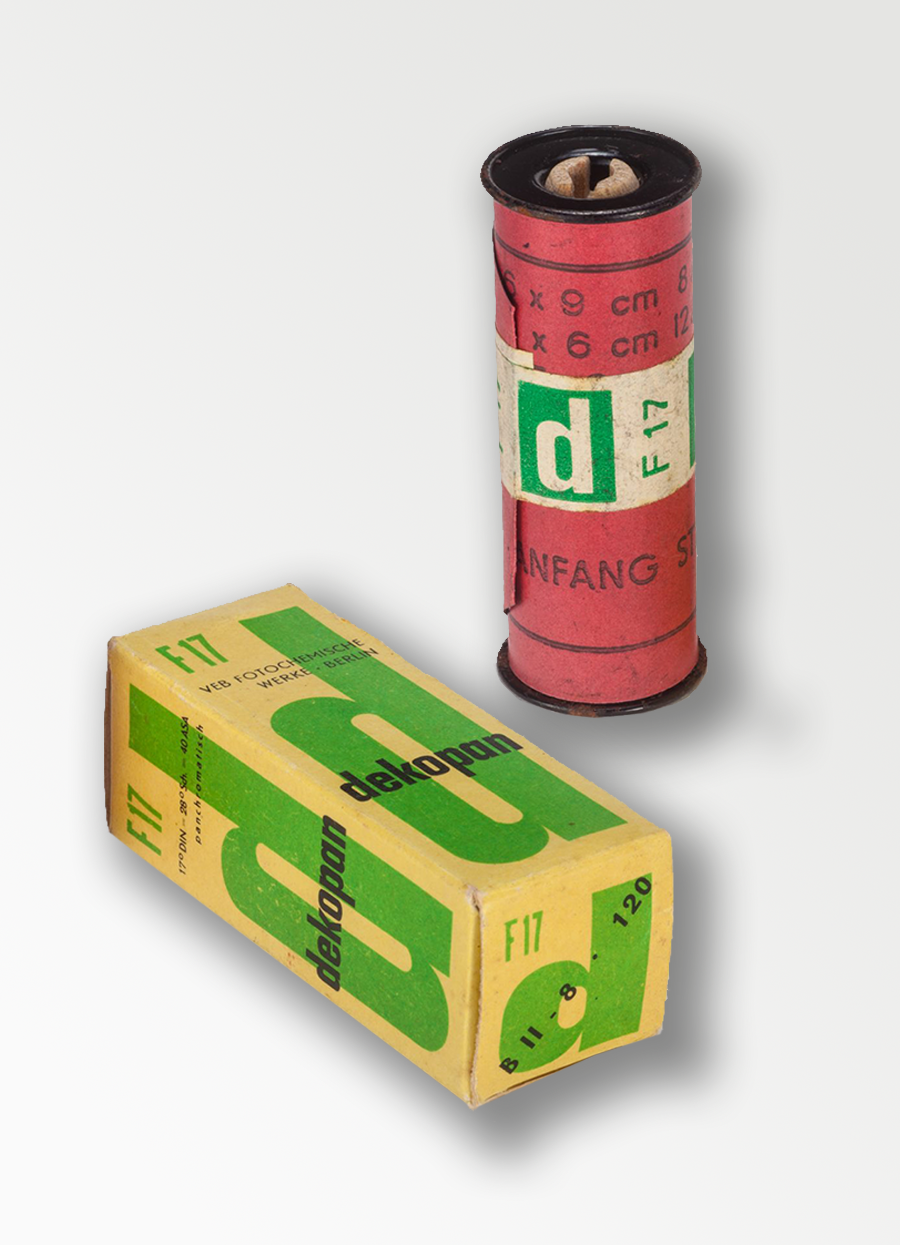
The DEKOPAN-branded film was made by the GDR-factory after World War II.
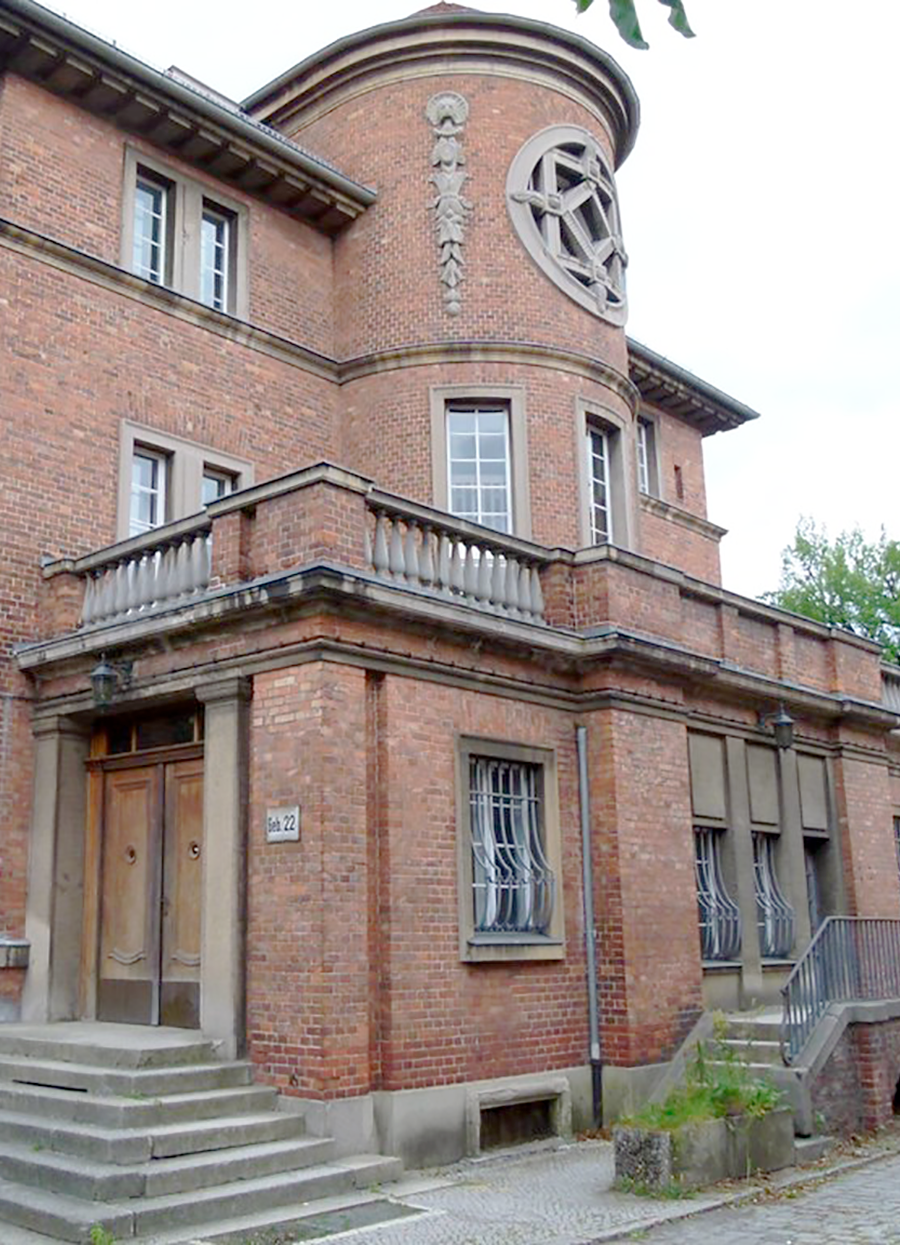
The facade of the former VEB Photochemical Werke Köpenick.
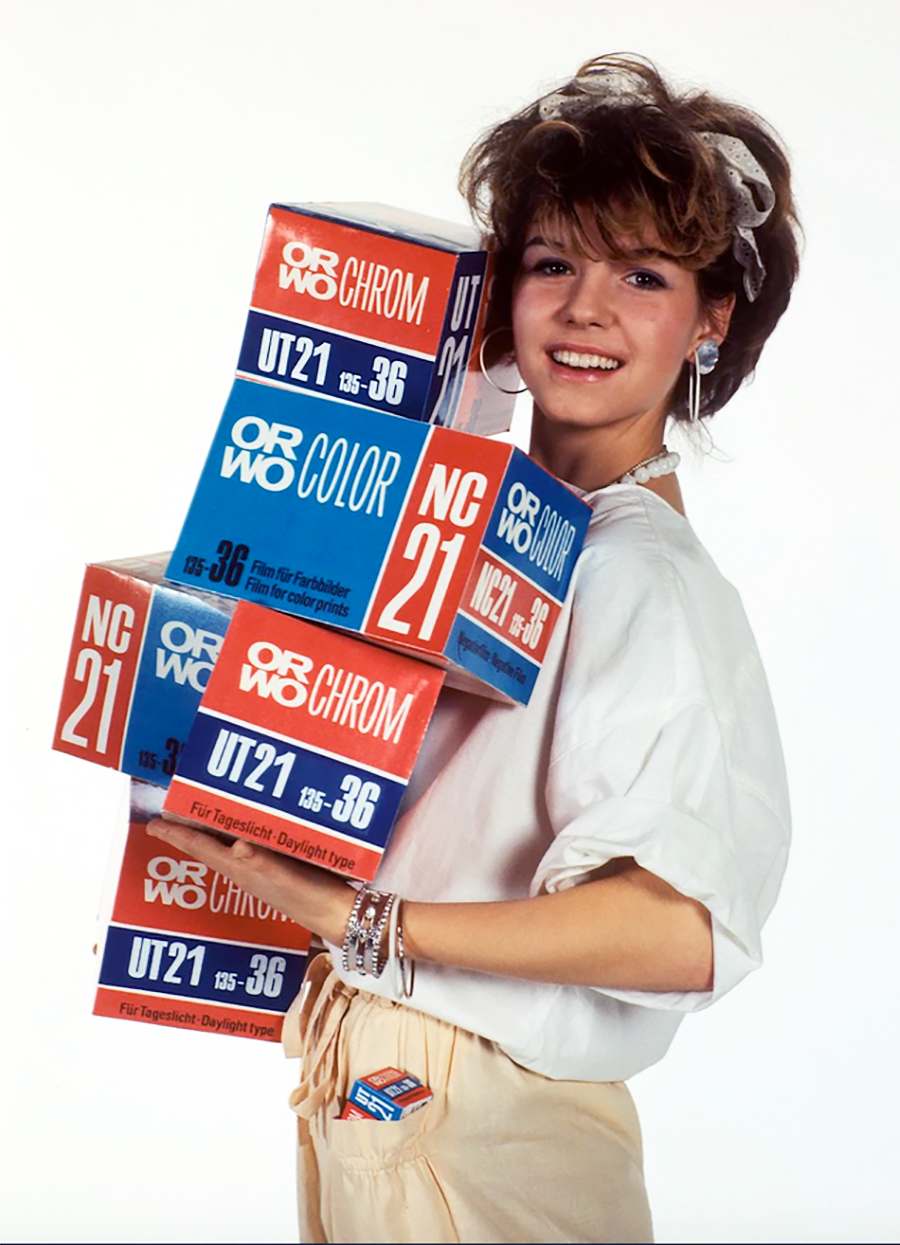
In 1970 only ORWO films were produced. DEKOPAN was history!
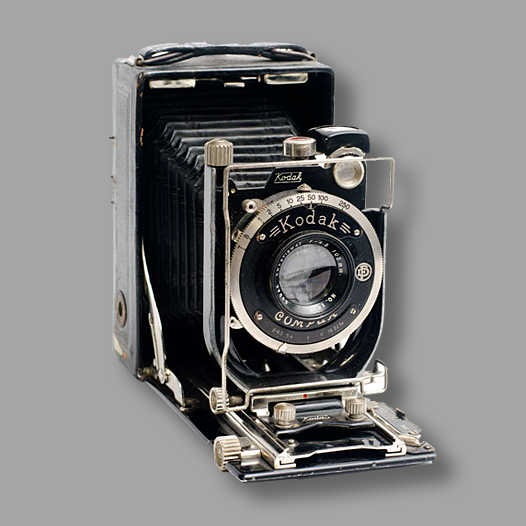
In 1932 Kodak acquired the Nagel camera works of Stuttgart, Germany, including their existing camera lines. The former Nagel 18 compact folding plate 2¼×3¼ camera was renamed the Recomar 18. Production continued to 1940. A larger version of this same design is the Kodak Recomar 33 which yielded 9×12 cm negatives. Roll film backs were also available which allowed the use of 120-format film.
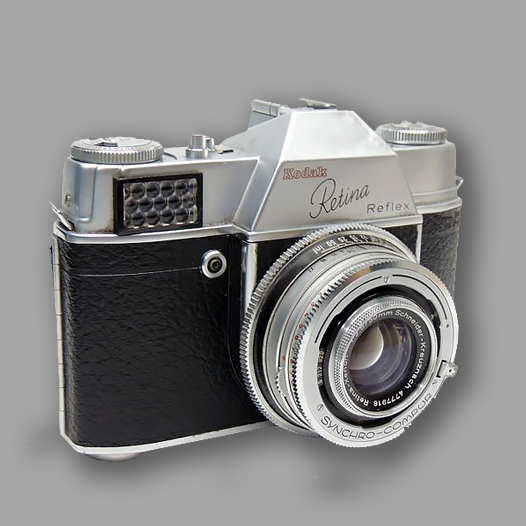
The Kodak Type 025 Retina Reflex is a 35mm SLR camera produced by Kodak AG Stuttgart in West Germany, between the spring of 1957 and October 1958. This was Kodak’s response to the quite successful range of leaf shuttered Zeiss Ikon Contaflex cameras introduced in 1953. By doing so, Kodak expanded their Retina range to include SLR cameras. The Retina Reflex originally sold for $215 USD (app. $1570 USD in 2007). Approximately 65,000 were made.

- Kodak Retina (Type 117) from 1934 to 1935
- Kodak Retina (Type 118) from 1935 to 1936
- Kodak Retina I (Type 119) from 1936 to 1938
- Kodak Retina I (Type 126) from 1936 to 1937
- Kodak Retina I (Type 141) from 1937 to 1939
- Kodak Retina I (Type 143) from 1938 to 1939
- Kodak Retina I (Type 148) from 1939 to 1941
- Kodak Retina I (Type 149) from 1939 to 1941
- Kodak Retina I (Type 167) from 1941
- Kodak Retina I (Type 010) from 1945 to 1949
- Kodak Retina I (Type 013) from 1949 to 1950
- Kodak Retina Ia (Type 015) from 1951 to 1954
- Kodak Retina Ib (Type 018) from 1954 to 1957
- Kodak Retina IB (Type 019 Exc. I) from 1957 to 1958
- Kodak Retina IB (Type 019 Exc. II) from 1958 to 1960
- Kodak Retina II (Type 122) from 1936 to 1937
- Kodak Retina II (Type 142) from 1937 to 1939
- Kodak Retina IIa (Type 150) from 1939 to 1941
- Kodak Retina II (Type 011) from 1946 to 1949
- Kodak Retina II (Type 014) from 1949 to 1950
- Kodak Retina IIa (Type 016) from 1951 to 1954
- Kodak Retina IIc (Type 020) from 1954 to 1957
- Kodak Retina IIC (Type 029) from 1957 to 1958
- Kodak Retina IIS (Type 024) from 1959 to 1960
- Kodak Retina IIIS (Type 027) from 1958 to 1960
- Kodak Retina Automatic I (Type 038) from 1960 to 1962
- Kodak Retina Automatic II (Type 032) from 1960 to 1962
- Kodak Retina Automatic III(Type 039) from 1960 to 1963
- Kodak Retina IBS (Type 040) from 1962 to 1963
- Kodak Retina IF (Type 046) ) from 1963 to 1964
- Kodak Retina IIF(Type 047) ) from 1963 to 1964
- Kodak Retina S1 (Type 060) ) from 1966 to 1969
- Kodak Retina S2 (Type 061) ) from 1966 to 1969
- Kodak Retina Reflex (Type 025) ) from 1957 to 1958
- Kodak Retina Reflex III (Type 041) ) from 1961 to 1964
- Kodak Retina Reflex IV (Type 051) ) from 1964 to 1966
- Kodak Retina Reflex S (Type 034) ) from 1959 to 1961
- Kodak Retinette(Type 147) ) from 1939 to 1940
- Kodak Retinette II (Type 160) ) from 1939 to 1941
- Kodak Retinette (Type 012) ) from 1949 to 1951
- Kodak Retinette (Type 017) ) from 1952 to 1954
- Kodak Retinette (Type 022) ) from 1954 to 1958
- Kodak Retinette f (Type 022/7) ) from 1955 to 1958
- Kodak Retinette I (Type 030) ) from 1958 to 1959
- Kodak Retinette I (Type 030/9) ) from 1958 to 1958
- Kodak Retinette f (Type 030/7) ) from 1958 to 1959
- Kodak Retinette IA (Type 035) ) from 1959 to 1961
- Kodak Retinette IA(Type 035/7) ) from 1959 to 1960
- Kodak Retinette IA (Type 042) ) from 1962 to 1963
- Kodak Retinette IA (Type 044) ) from 1963 to 1967
- Kodak Retinette IB (Type 037) ) from 1960 to 1963
- Kodak Retinette IB (Type 045) ) from 1963 to 1966
- Kodak Retinette II (Type 026) ) from 1958 to 1959
- Kodak Retinette IIA (Type 036) ) from 1959 to 1960
- Kodak Retinette IIB (Type 031) ) from 1958 to 1959
110-film Instamatic Reflex SLR
- Mini-Instamatic S from Sep 1976 to Jan 1978
- Mini-Instamatic S 40 from Sep 1976 to Jan 1978
- Instamatic 130 from Jan 1976 to 1978
- Instamatic 192 from Jan 1975 to Jan 1976
- Instamatic 230 from Jan 1976 to 1978
- Pocket Ektra 200 from 1980 to 1987
- Tele-Ektralite 600 from 1980 to 1982
- Pocket Instamatic 100 from Sep 1972 to Dec 1974
- Pocket Instamatic 200 from Sep 1972 to Dec 1974
- Pocket Instamatic 300 from 1972 to 1976
- Tele-Instamatic 430 from Sep 1975 to 1978
- Pocket Instamatic 500 electronic from 1972 to 1976
Plate Folding
- Kodak Recomar 18 from 1932 to 1940
- Kodak Recomar 33 from 1933 to 1940
Model numbers ending in 0 have pop-up flash gun; ending in 4 have Flashcube socket, ending in X have Magicube socket. Models ending in F have Flipflash
- Instamatic 33 from Sep 1968 to 1973
- Instamatic 55X from Sep 1971 to 1972
- Instamatic 56X from Sep 1972 to 1977
- Instamatic 77X from Jan 1977 to 1984
- Instamatic 133 from Sep 1968 to 1970
- Instamatic 133X from Sep 1970 to 1971
- Instamatic 155X from Sep 1971 to 1977
- Instamatic 177X from Jan 1977 to 1984
- Instamatic 220 from 1965 to 1966
- Instamatic 224 from 1966 to 1968
- Instamatic 233 from Sep 1968 to 1970
- Instamatic 233X from Sep 1970 to 1971
- Instamatic 250 from 1964 to 1965/1967
- Instamatic 255X from Sep 1971 to 1977
- Instamatic 277X from Jan 1977 to 1985
- Instamatic 324 from 1966 to 1967/1968
- Instamatic 333 from Sep 1968 to 1974
- Instamatic 333X from Sep 1970 to 1971
- Instamatic 355X from Sep 1971 to 1977
- Instamatic 500 from 1963 to 1965/1966
- Instamatic Reflex from 1968 to 1970/1974
127-film Folding
- Vollenda from 1931 to 1937
127-film rigid
- Pupille from 1932 to 1935
- Ranca from 1932 to 1934
120 & 620 film Folding
- Duo Six-20 from 1934 to 1940
- Kodak Regent from 1935 to 1939
- Regent II from 1939 to 1940
- Suprema
- Vollenda 620 from 1934 to 1939
- Kodak Junior 620 from 1933 to 1939
616 film Folding
- Junior Six-16 from 1935 to 1937
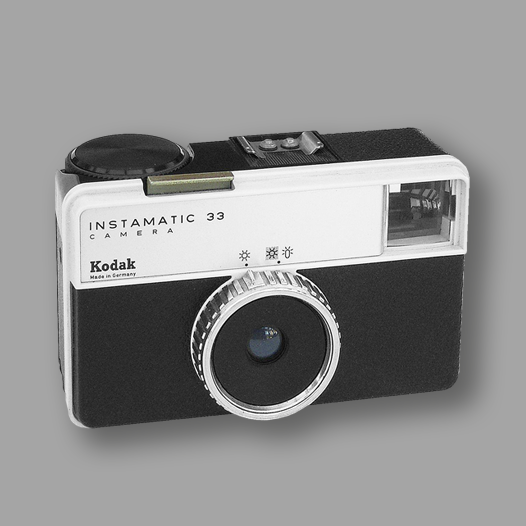
The Kodak Instamatic 33 is a simple snapshot camera from the 70s for 126 cartridge loading film. It was built by Kodak in Germany, Brazil and England. It was available from 1968 to 1973. The camera has a special hot shoe for attaching a Kodak Instamatic Flasholder.
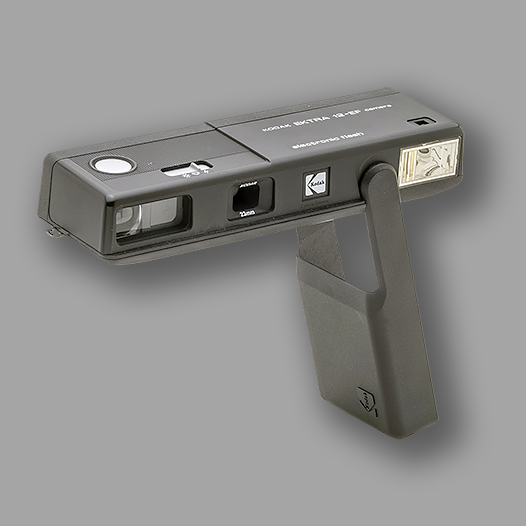
The Ektra 200 is a 110 film pocket camera built in Stuttgart from 1980 to 1987. It has a folding handle (which was a common feature for Kodak 110 pocket cameras for that period. There were at least 13 Ektar cameras produced and in Germany, many of these models are referred to as Ritsch-Ratsch because of the sound the film-wind mechanism makes. So popular was the 110 format that more than 25 million cameras were produced within 3 years.
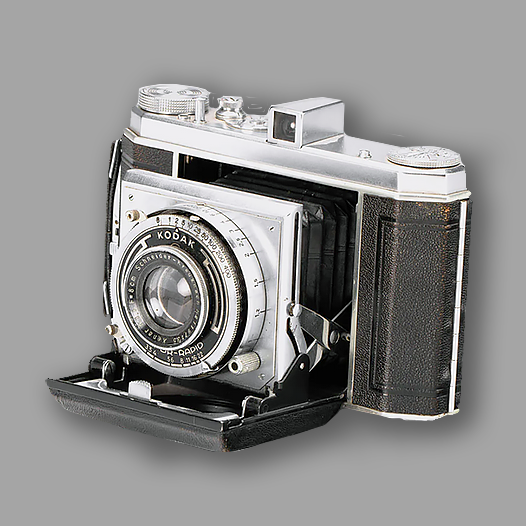
The Suprema is a horizontal folding camera made in 1938-9 by Kodak in Germany, for 2½-inch square exposures on 620 film. The camera has a reverse-Galilean viewfinder. Film is advanced with a simple knurled knob on the right of the top plate. There is a red window, with a sliding cover, on the back; there is also a frame counter on the top. McKeown states that less than 1800 copies of the camera were made.
FOUNDER: KODAK USA
1885: Eastman Dry Plate and Film Company UK; 1889: Eastman Photographic Materials Company, Limited UK; 1897: Eastman Kodak Company Limited UK; 1898: Kodak Limited UK; Closure was announced in April 2016, and production ceased in December 2016.
1885 – 1888: 13 Soho Square, London W; 1888 – 1892: 115, Oxford Street, London W; 1892 – 1898: 115-117, Oxford Street, London W; 1898 – 1899: 115 & 117, Oxford Street, London W; 1927: 1891: Headstone Drive, Harrow, North West London; 1899 – 1931: 115, Oxford Street, London, W1 postal district from 1917.
No name has been more closely tied to pictures than Kodak. The keys to George Eastman’s success in making photography a popular leisure-time activity for the masses were his development of roll film and the inexpensive box camera. Throughout his life, Eastman pursued his goal to make photography “as convenient as the pencil.” Not surprisingly, the company he founded has been at the centre of most milestones in photography and imaging ever since.
The most important photographic company operating in Britain from the mid-1880s was Kodak. Initially this was directly through the American company and then from 1889 a British subsidiary company, the Eastman Photographic Materials Company Limited, was established.
Kodak was important as both a manufacturer and retailer. Within the wider British photographic industry its role as a conduit for the transfer of American business ideas and retailing techniques cannot be overstated.
George Eastman, the company founder, first began trading in Britain through his American company, the Eastman Dry Plate and Film Company, which operated from offices at 13 Soho Square, London. This was a wholesale outlet for Eastman’s goods as well as for those from other American photographic manufacturers. In 1888 the company’s policy of selling wholesale was changed to include retail and a lease for larger exclusive premises at 115 Oxford Street, London, was signed in March 1888. In April this became the firm’s headquarters and retail outlet.
The growth of the Kodak’s British operations was rapid and the firm had progressed from simply retailing by establishing a photographic film and paper printing base at Harrow, UK, northwest of London in 1891. Harrow was an ideal place for Kodak to come. Long had Harrow an industrial presence due to the useful transport facilities provided by the Gran Union Canal, but the development of better roads and further railroads made it an even more ideal and well-connected area in the late nineteenth century. It was the first Kodak factory outside America.
The Kodak Works, Harrow was a photographic manufacturing plant and research and development centre on Headstone Drive, Harrow, North West London. The factory was established on a seven-acre greenfield site, just to the west of the Harrow & Wealdstone railway line. The site was originally used to develop photographs and kept around 100 chickens on site to supply the egg white required to coat the paper.
Harrow became the first Kodak processing plant in Britain where spent cameras were sent in the nineteenth and early twentieth century. In its early days it developed and printed photographs, and produced film-roll, to cater to the mass expansion of photography as a popular pastime.
It had its own research laboratory and development center by 1929, and was always seeking to innovate and develop, in line with the entrepreneurial spirit of its founder, the US inventor and businessman, George Eastman. The Kodak site in Harrow was a factory and as such it comprised the range of department necessary to produce its products including Research & Development, Manufacturing producing Kodak film and photographic paper, Engineering, Product Evaluation and Marketing as well as a Logistics department for moving materials within the factory, between departments and round the wider “Kodak World”.
In order to operate these departments Kodak recruited employees with skills ranging from raw 6th form students seeking holiday jobs, young people seeking apprenticeships through to PhD student fresh from completing their doctorate studies. These new recruits joined the existing workforce and quickly became part of the wider Kodak “family”.
It was a major employer in the area and by 1965 the site covered 55 acres and employed around 6,000 people and was the largest manufacturing plant in the British Commonwealth. Much more of the production process took place at the Harrow site in years gone by than it did more recently, including more coating and printing of the back of the paper.
The End
By the time of closure, only the final photographic coating was applied at Harrow, everything else was done at Kodak’s site in Germany before shipping the rolls of paper over to the UK for completion.
Production of photographic film ended in 2005, owing to the increasing popularity of digital imaging. As the demand for photographic prints dropped, so did production at the Harrow site. Following Kodak’s bankruptcy in the U.S. in 2012, the future of the site was unclear.
The British spin-off Kodak Alaris took control of the site in 2013 and its association with the original American Kodak ended. At this time, Harrow was the global manufacturer of all Kodak colour negative paper. On 13 April 2016, Kodak Alaris announced that the Harrow facility will close down. By this time only 250 people were working at the site. Production ceased in December 2016. Now all that remains is the Eastman name, the iconic chimney, and the memories of those who worked there.
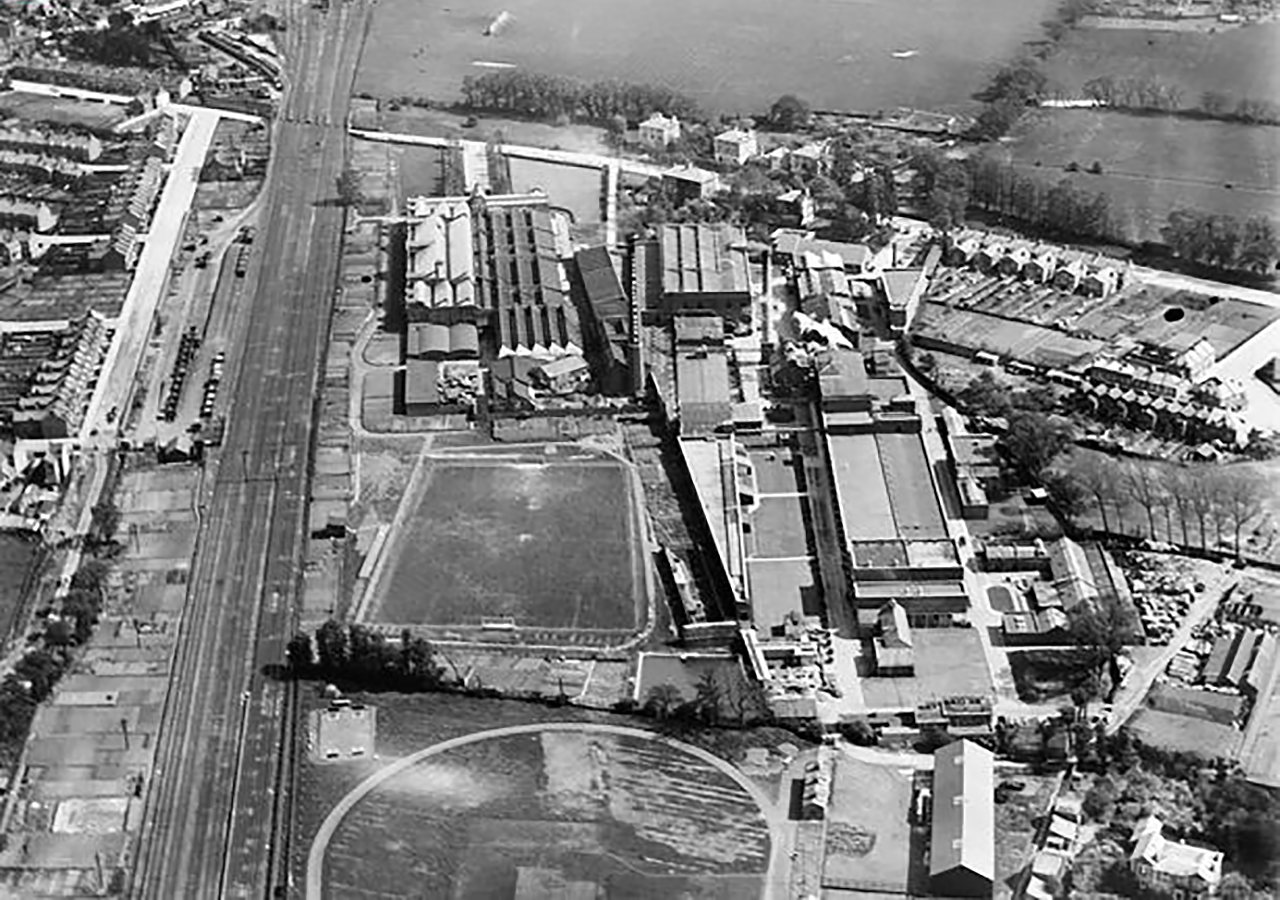
Aerial view of the Kodak site in Harrow in 1920
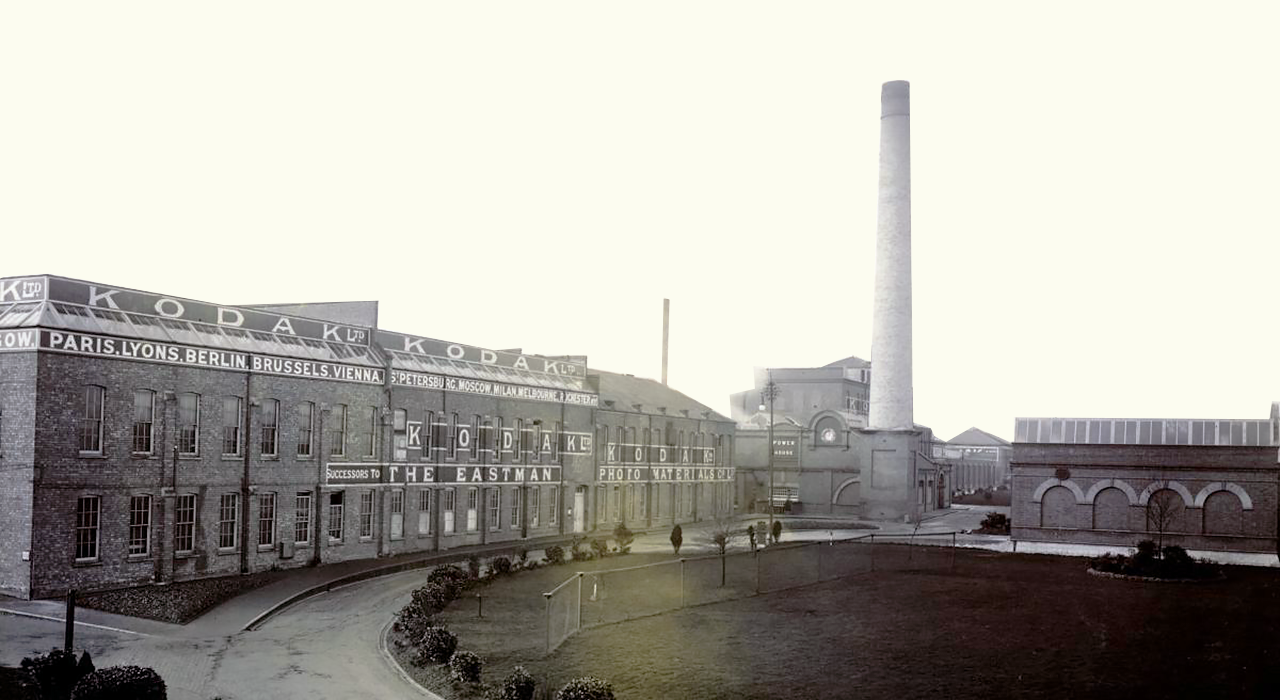
The Harrow Plant in 1906 with the buildings -1, -2, -3 -4 & -24.
Home Life and Social Life
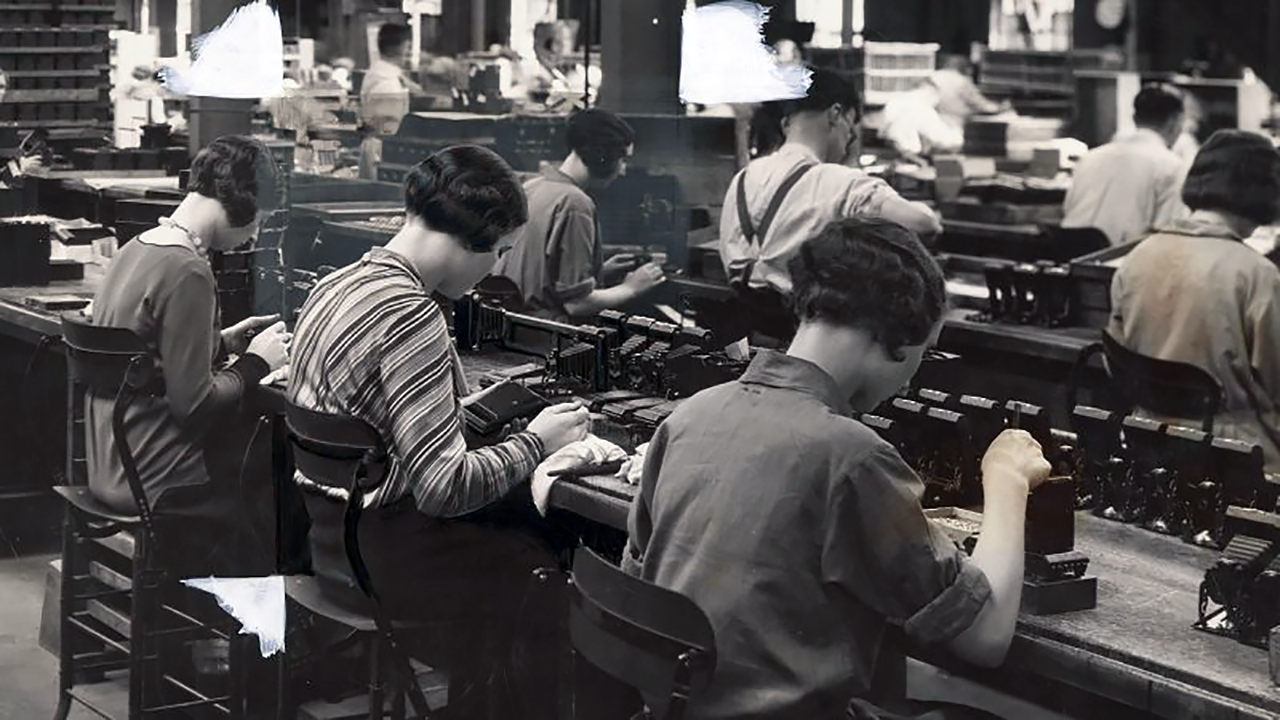
Production line workers assembling Kodak cameras, Harrow, c 1930s
Reflecting social trends of the time, up until around the 1970s, if not benefitting from the excellent transport links from the edges of Metroland, most people lived close to work, and so Harrow was, as described by one former employee, a “Kodak community.” Kodak employees living in Harrow often found that their next-door neighbors were colleagues – or even their bosses. It was also not uncommon for multiple generations of the same family to work at Kodak.
With so many people in the area working at the company they didn’t have to go far to meet up with friends for a drink or enjoy sports on the Kodak playing fields located on the west side of Harrow View.
Sports played a big part of social life for the Kodak employees, ranging from golf, to tennis and rifle ranges; the company even had their own Football team, Kodak F.C., which was formed in 1935. During the 2000s as Kodak in Harrow downsized, the sports ground was leased. A leisure centre run by Nuffield Health operated at the grounds but it closed in 2011.
However, sports were not the only activities and events run by Kodak. There was a very strong social environment throughout the company, and employees could always find something to enjoy or get involved in whether that be music in the folk club or the Kodak band, pantos in the theatre club as well as opportunities for celebrating together at different parties throughout the year.
In 1927, a museum was opened at the site. The 1947 published book The Kodak Museum, A Permanent Exhibition Illustrating the History of Photography and Some of its Applications in Science, Art and Industry is an illustrated catalogue of the collection at the Kodak Museum. The museum at Harrow closed in 1985; the items are now at the National Science and Media Museum. The nearby Headstone Manor Museum also has a collection of items relating to the Kodak factory.
A look behind the walls of the Harrow Plant
Thanks to the site of: “Behind Closed Doors” we are able to take you behind the walls of the Kodak-UK Plant in Harrow.
An extensive report can be found on the Behind Closed Doors site; the link is: https://www.bcd-urbex.com/kodak-factory-harrow/
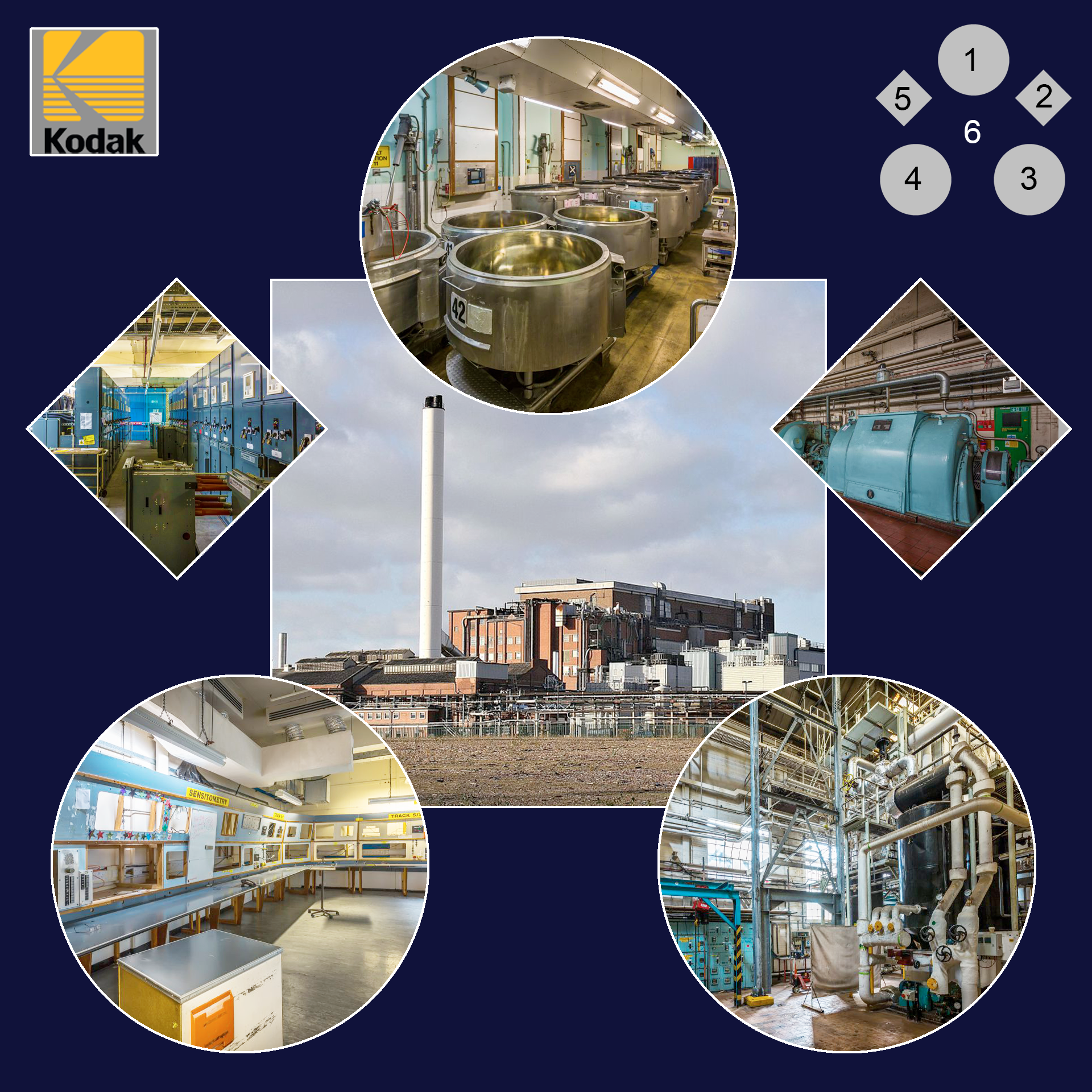
1) Kodak, Harrow – Melting vats
2) Kodak – Harrow – Power House, No. 2
English Electric turbine with 3.6MW alternator
3) Kodak, Harrow – Panels and de-aerator in the boiler house
4) Kodak, Harrow – Control Room
5) Kodak, Harrow – Switchroom
6) The Kodak factory, Harrow, London
Cameras as manufactured at Kodak Harrow
- Kodak S1 Mark11 (view camera with long bellows)
35mm film
- Kodak Auto Colorsnap 35
- Kodak Colorsnap 35
120 film
- 1A Pocket Kodak
- Kodak 66 Model II / Model III
- Brownie Cresta / Cresta II/ Cresta 3
- Kodak No. 2 Brownie Junior
- Kodak No. 2 Portrait Brownie
- Kodak No.2 Portrait Hawkeye
- No. 1 Pocket Kodak / No.1 Pocket Kodak series II
- No. 1 Pocket Kodak Junior
- No. 1A Pocket Kodak Junior
620 film
- Kodak Popular Brownie
- Brownie Model I
- Kodak Duaflex
- Kodak Folding Brownie Six-20
- Kodak Junior I/II
- Kodak Junior Six-20 (UK model)
- Kodak Six-20 Brownie, Models C, D, E, and F
- Kodak Brownie Flash II, III and IV
- Kodak Brownie Flash B
- Kodak Portrait ‘Hawkeye’ *Star*
- Kodak Six-20 Brownie, Six-20 Brownie B
- Kodak Six-20 Popular Brownie
- Kodak Six-20 Portrait Brownie
- Kodak Sterling II
- Six-20 Folding Brownie
- Six-20 Kodak A
- Six-20 Kodak B
- Six-20 Kodak Junior / Six-20 Kodak Junior de Luxe
- Six-20 Kodak Special
- Six-20 Kodak (UK model)
- Brownie Junior
- Target SIX-16
- Six-16 Kodak Junior
- Six-16 Kodak Senior
828 film
- Kodak Bantam Colorsnap
- Kodak Bantam Colorsnap II
- Kodak Bantam Colorsnap 3
126 film
Model numbers ending in 0 have pop-up flash gun; ending in 4 have Flashcube socket, ending in X have Magicube socket. Models ending in F have Flipflash
- Instamatic 25 – from Jan 1966 to 1971
- Instamatic 26 – from 1968 to 1972
- Instamatic 28 – from Jan 1972 to 1974
- Instamatic 32 – from 1972 to 1973
- Instamatic 33 – from Sep 1968 to 1973
- Instamatic 36 – from Jan 1973 to 1974
- Instamatic 50 – from Feb 1963 to Jan 1966
- Instamatic 55X – from Sep 1971 to 1972
- Instamatic 56X – from Sep 1972 to 1977
- Instamatic 66X – from Dec 1973 to 1977
- Instamatic 76X – from 1977
- Instamatic 77X – from Jan 1977 to 1984
- Instamatic 100 – from Mar 1963 to Jun 1966
- Instamatic 104 – from Jul 1965 to Sep 1968
- Instamatic 155X – from Sep 1971 to 1977
- Instamatic 177X – from Jan 1977 to 1984
- Instamatic 200 – from Jan 1965 to 1966
- Instamatic 204 – from Jan 1966 to Nov 1968
- Instamatic 233 – from Sep 1968 to 1970
- Instamatic 233X – from Sep 1970 to 1971
- Instamatic 255X – from Sep 1971 to 1977
- Instamatic 277X – from Jan 1977 to 1985
- Instamatic 300 – from Mar 1963 to Jun 1966
- Instamatic 304 – from Jul 1965 to Apr 1969
- Instamatic 314 – from Jul 1968 to Apr 1971
- Instamatic 400 – from Mar 1963 to Jun 1966
- Instamatic 25
- Instamatic 133
- Instamatic 155X
- Instamatic 204
- Instamatic 56-X
- Kodak Baby Brownie
- Brownie 127
- Brownie 44A
- Brownie 44B
- Brownie Reflex
- Brownie Vecta
- Kodak Autosnap
- Baby Hawkeye
- Girl Guide Kodak (UK model)
- Boy Scout Kodak (UK model) see Girl Guide Kodak
110 film
- Instamatic 91 – from Nov 1974 to Jan 1976
- Instamatic 92 – from Sep 1974 to Jan 1976
- Instamatic 125 – from Sep 1974 to Jan 1978
- Instamatic 130 – from Jan 1976 to 1978
- Instamatic 192 – from Jan 1975 to Jan 1976
- Instamatic 230 – from Jan 1976 to 1978
- Pocket Instamatic 100 – from Sep 1972 to Dec 1974
- Pocket Instamatic 101 – from Jan 1974 to Nov 1974
- Pocket Instamatic 300 – from Sep 1972 to Aug 1976
- Pocket Instamatic 400 – from Sep 1972 to 1976
- Pocket Instamatic 500 – from Sep 1972 to 1976
- Pocket Instamatic A-1 – from 1978
- Pocket Instamatic B-1 – from 1979
- Tele-Instamatic 530
- Kodak Tele-Ektra 32
